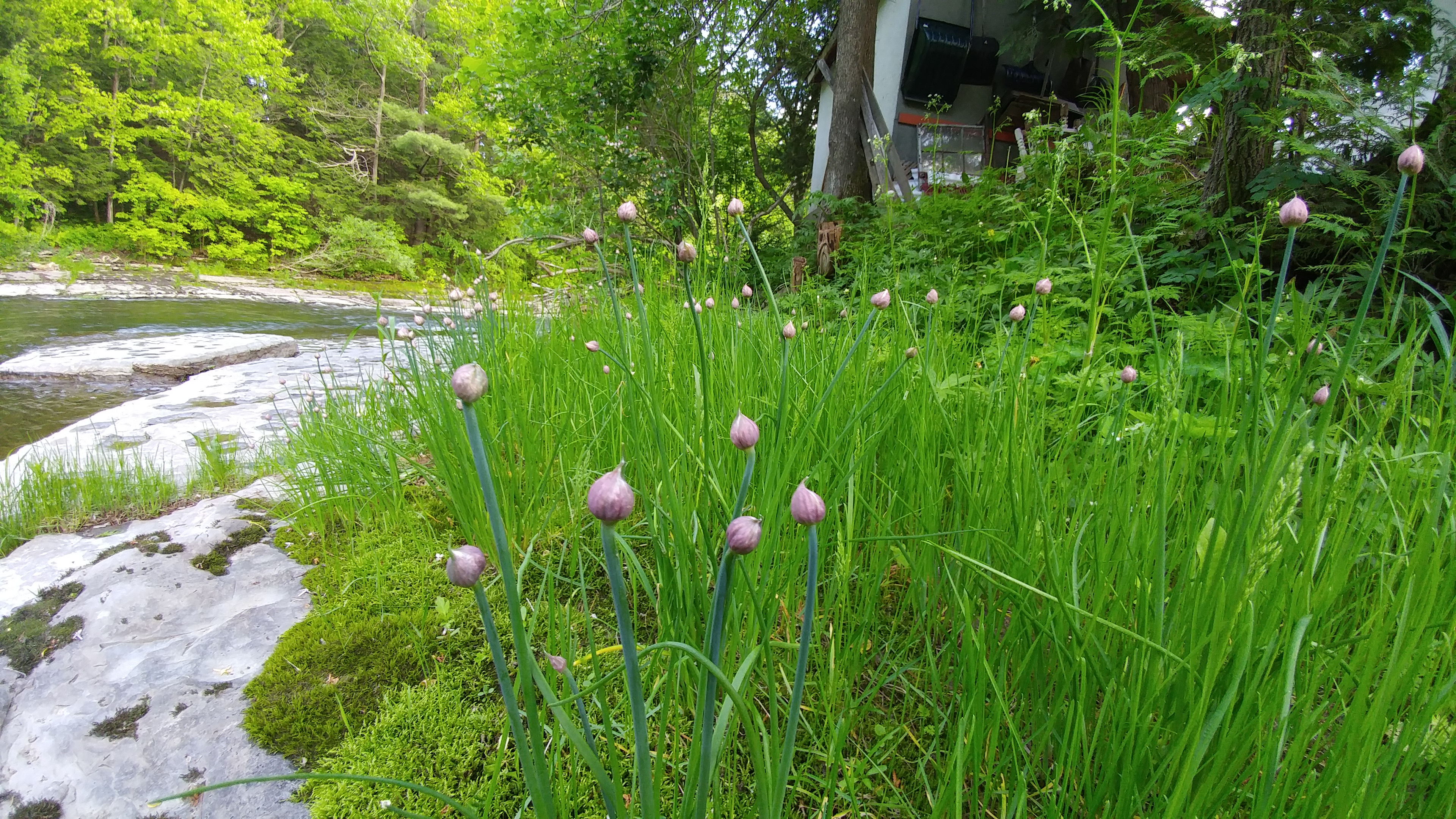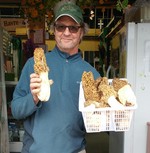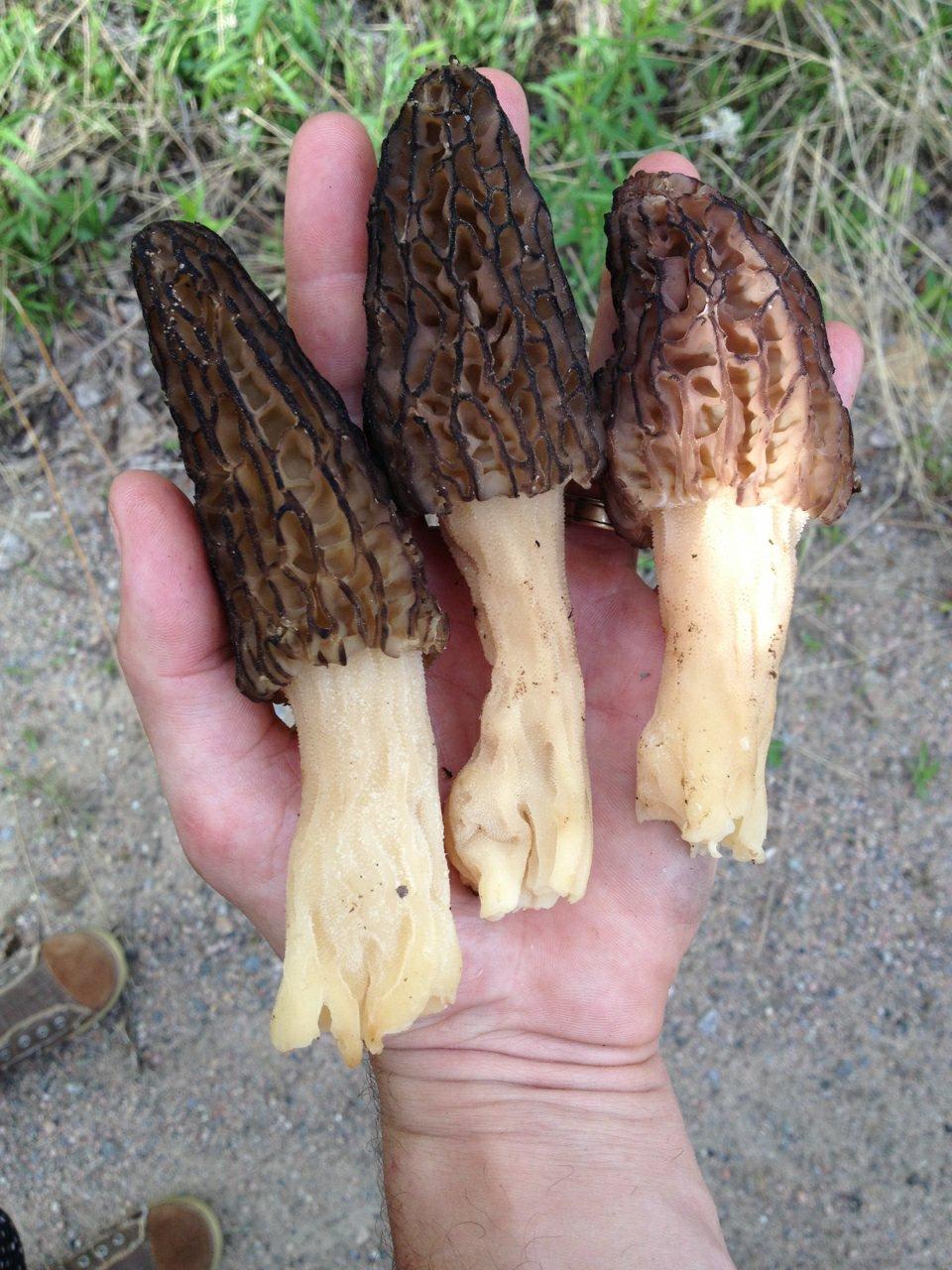Sourdough discard
Sourdough discard experiments
As anyone who makes sourdough knows, unless you’re baking bread every other day, you end up having more starter (mother/levain) than you know what to do with, hence ‘sourdough discard’..
Lots of people experimented with baking and sourdough during the pandemic, and while some caught the bug and carried on, I reckon most didn’t. Too much bother!
The thing is that making sourdough, ie. Bread with natural leavener, is both simple and tricky. Beyond a lucky result here and there, you do need some practice for consistent results. It requires more than a few attempts to really get the hang of it and understand the basics, as well as what works in your own kitchen. For example, which pot gets the hottest, what counterspace is best for proofing, what fermentation timeline fits into your schedule. Then it’s just about paying attention. So like Kombucha, once you’re up and going, it’s not all that complicated, but you do have to plan a little and be on top of it. To some people, that means ‘complicated’, or a pain, but once you’re used to it, it really isn’t.
I’m not as obsessed as to hire a ‘sourdough’ hotel, (haha it is a thing!) but with a small business, its not like I go anywhere for very long. And plus, over the years I have learnt that it is more forgiving than one might think. A neglected starter can often be brought back to life with a few feedings.
Not to mention that slowing down and being present is just what one needs sometimes. I saw something about ‘What Sourdough has taught me about life’ or something along those lines, that I quite like, but I diverge.. You can continue reading that below.

It was slow season at the restaurant this winter, so my current starter Anticosti had been in dormancy more than active for a few months. I have had Anticosti for 7 or 8 years. He was originally cultivated from the wild on Anticosti island by my fermentation teacher who gifted us each a mason jar. (It’s a ‘he’, like my Dad’s car was a ‘she’). Before Anticosti, I had Leonard for at least 5 yrs, but one winter he was looking pretty sketchy in the cold room, so I ditched him. I didn’t know then not to not be afraid of some dark liquid on the top..
I don’t want to lose this one, so I’m paying heed, with an occasional feed to bring him back to life. And it is not in my genes or upbringing to discard much. So, it was a good time to play around with the discard.
I’ve been making wafer crackers with it for years, which are a big hit at the restaurant, using up more than enough discard, meaning sometimes during the season, I have even have to create discard’ haha..
I saw a few recipes for all kinds of things going around on the internet, so why not move beyond crackers?
I guess you could use any recipe keeping the baking ratios in mind. Like with bread, using around 15-20% starter and adjusting the flour/liquid slightly depending on the particular type of recipe..
I made a nan type flatbread which was pretty good (just needed to be tinkered with a bit), but François loved them, as well as some English muffins which were pretty delish as is, check. See recipes below. **
Both froze well, to be reheated in the toaster on demand..
For a quick snack in the kitchen when too busy to put much time into feeding myself during a shift, I have on occasion poured some discard into a hot cast iron pan, seasoned and finished with butter, kind of like bannock or simple flatbread. Denser than a properly finished dough, so for me not the guests - but can hit the spot!
I feel like I’ve got the traditional loaves pretty much down; however when I’ve made pizza dough with my starter, I have not always been crazy about the results. Mostly because the dough tends to be too soft/sticky making it hard to get on and off the peel when using a pizza oven. And it doesn’t always have the give/chew I like as in a Napolitana thin crust. I have a standard pizza dough that I’ve been making most of my cooking life that I like just fine for the peel/proper pizza oven, so I hadn’t tried a sourdough one in a while.
You see, I’m always torn between innovation and stubbornly trying to get to the bottom of a new technique to make it work, and sticking to my old ways as in ‘if it ain’t broke, don’t fix it’.. Up to a point though– for example I am not interested in sous-vide cooking an egg for hours when I can have perfect results in 10 min. But perfecting sourdough pizza, maybe.
When I scaled back on the liquid slightly and let it ferment longer, I was more successful. If baking on a sheet pan, or in a hot cast iron pan, then it works just fine. Not perfect, but pretty good. À suivre/To be continued..
Delicious discard crackers
Mix 1Tbsp of melted butter /cup of discard with seasonings of choice (ex. garlic, basil, rosemary) and a pinch of salt. Spread out thinly on parchment lined baking sheet and bake at 325F for 50min-1h, rotating halfway through. Break apart into crackers once cool.
Recipes tested from (Tasty Trails):
Naan
8 un
1c discard
1.5c flour
1/2c yogurt
1 tsp baking powder
1/2tsp baking soda
1/2tsp salt
1 Tbsp oil
butter +
Mix dough and knead 7-8min. Rise 2h+ and portion into balls; rest a little (or refrigerate for later) and flatten into ovals. Cook 1-2 min per side in a medium hot cast iron pan, brushing butter onto the finished sides.
English Muffins
12
1c discard
2c flour
1Tbsp sugar
1tsp salt
1tsp baking soda
3/4c warm milk (100F)
2Tbsp butter
Cornmeal for dusting.
Mix all ingredients except baking soda and rest 30min.
Sprinkle baking soda over top and mix in.
Roll out and cut into ¾ in thick rounds. Dust and rise 1hr+. Cook 68-8min per side on griddle. Split afterwards.
My not so bad afterall sourdough pizza dough
(2 -4 pizzas)
500g flour
325g water
100g starter
10g each salt and olive oil
Mix dough and rest 30min. Knead or fold every 30min for 2h+. Refrigerate overnight and portion into 2-4 balls. Let rest 30min-1hr until ready to roll out and top/cook. Or portion and freeze in balls.
Making Sourdough
If you have discard on hand, I assume you already know how to make sourdough, but if you don’t, and want to embark on the adventure, there is tons of info out there on the web.
What I do: A 1:2:3 ratio of starter: water: flour with 2.5% salt (using unbleached all-purpose flour with a little wholewheat mixed in) So with 1kg starter, 2L of water and 3kg of flour, 75g salt. (When it comes to bread, percentages are with respect to the flour).
Mix and rest 30min. Fold or knead for 30s every 30min for 2h, keeping covered with a light towel or plastic. Refrigerate 1 day well wrapped. Fold and rest 30min. Portion, roll into shapes, and proof until oven-ready (lightly covered with a towel). I bake my bread in loaves using all the Crueset and cast-iron pots (preheated) I have with a lid in my oven at maximum heat. 20min with the cover on, then another 10-20min with the cover off. And if the bottom crust starts to brown too much, I remove them onto a sheet pan for the last ten minutes.
With the rest of my dough, I make baguettes and spray water into a hot oven before and during the first 10min to create the steam/spring before the crust forms. And then another ten or so minutes..
A one loaf recipe from scratch makeshift-starter https://www.foodandwine.com/recipes/sourdough-boule?
There is this Facebook page for Sourdough beginners, among others, but it's not like I can stand behind any of them..
10 Lessons Sourdough Taught Me About Life:
1. Patience is powerful. Sourdough doesn’t rush. Growth takes time, and good things often rise slowly.
2. You can’t control everything. The wild yeast in sourdough is unpredictable. Like life, you can guide it—but never fully control it.
3. Presence matters. Tuning into the dough—how it feels, smells, behaves—teaches you to notice subtle shifts. The same is true for people.
4. Rest is essential. Just like dough needs time to rest and rise, we do too. Growth happens in the stillness.
5. Consistency beats intensity. A fed starter thrives with regular attention. Small, consistent care nurtures strength over time.
6. Embrace imperfection. No two loaves are the same. Life (and bread) isn’t about perfection—it’s about character and flavor.
7. Transformation takes work. Flour and water become something entirely new through a mix of effort, heat, and time. So do we.
8. Everything is connected. Sourdough is alive because of a living ecosystem. Our health, relationships, and choices are all interconnected too.
9. Trust your hands. Recipes help, but at some point, you have to trust your instincts. Feel your way forward.
10. Let go at the right time. There’s a moment when you’ve done all you can. You have to let the loaf go into the oven—and trust it will become what it’s meant to be.
Credit : Cristina Blackwell
Têtes de Violon
Têtes de violon(Fiddleheads)- pur délice de printemps
Nancy Hinton, Les Jardins Sauvages

Et oui, c’est déjà bientôt ce temps de l’année! L’arrivée des têtes de violon est toujours un moment festif chez nous, vedette du printemps - notre premier légume vert de terroir, si nutritif et délicieux quand bien choisi et apprêté. Ce qui débute la saison de récoltes et de bien manger local plus facilement, yé.
La bonne nouvelle c’est qu’il ne faut pas avoir peur de ce bon comestible forestier! Malgré la mauvaise presse et controverse dans le passé. On dirait qu’on recommence à chaque année avec éducation face à de l’information confuse qui circule, quand ce n’est pas si compliqué. C’est juste une question de qualité, fraicheur et de cuisson. Les seuls cas de malaise documentés ont été dû à de la consommation crue et sources particulières/inconnues. François en cueille dans nos sites de façon durable sans probleme depuis tant d'années. (37 ans officiellement)
Les têtes de violon nous offre un cocktail impressionnant de nutriments comme les Vitamin A et C, des anti-oxydants et minéraux essentiels (le fer, calcium, magnésium, potassium, Cu et Ma), protéines et fibres.. Elles contiennent également une molécule qui peut être indigeste – le ptaquiloside, mais qui est soluble dans l’eau et dénaturé par la chaleur. Alors si lavées et cuites, il n’y a pas de soucis! Et vu qu’elles poussent au long des rivières, cela protège contre les bactéries aussi.
Aussi, la réalité c’est qu’il y a beaucoup de variabilité de qualité et de fraicheur sur le marché, incluant beaucoup de marché noir et de cueilleurs improvisés, opérant en dehors de chaine de réfrigération et normes d’hygiène et salubrité, sans traçabilité. Souvent ce qu’on trouve à l’épicerie par exemple est un lot qui a été dompé sur le marché à bas prix comme les commerçants préfèrent, parce que le cueilleur sans chambre froide et réseau veut s’en débarrasser. Un cueilleur/entreprise enregistrée avec des normes et couts d’opération ne peut pas compétitionner le marché noir sur le prix, mais certainement sur la qualité.
Bref, on a simplement à s’assurer d’une bonne source fraichement cueillie et bien entreposé, les laver et cuire dans beaucoup d’eau bouillante. Il ne faut pas les manger cru, c’est tout!
Cuisson : Avec une belle qualité de têtes de violon (comme les nôtres) et suffisamment d’eau dans le chaudron, 5 min dans l’eau bouillante c’est assez pour que les têtes soient cuites au centre et tendres... Avant des introduire à vos recettes. Fiche de cuisson sur notre site. https://jardinssauvages.com/guides-fiches-de-cuisson/
(L’histoire de cuisson à deux eaux est superflue à moins que vous ayez un tout petit chaudron ou une source inconnue ou vous êtes perfectionniste visant le maximum de couleur vert et contacte d’eau avec minimum cuisson, vraiment pas nécessaire pour la digestibilité ou la délicieusité). Il y a un temps qu’on le suggérait par précaution, mais suivant ma recherche et autant d’années d’expérience depuis, j’ai conclus que c’était bien ok de sauter cet étape.
On peut les manger froides en salade après une première cuisson, mais elles sont encore meilleur chaudes. De plus, on va souvent les mettre à la poêle après avec un peu de beurre monté (beurre + eau) et assaisonnements, alors une cuisson de plus... De toutes façons, elles sont meilleures un peu plus cuits qu’‘aldenté’.
Comme la plupart des légumes verts, elles aiment l’ail, et un peu de bon gras, par exemple, une bonne huile d’olive, noix ou de tournesol, le bacon, viande et umami, ainsi que les recettes asiatiques avec tamari et sésame, ou curry-coco. En omelette, pâtes, en accompagnement, on les utilise comme une asperge ou haricot vert.
Cueillette – astuces/ à quoi faire attention
Si on est assez chanceux d’en avoir sur notre terrain ou autre terrain privé avec permission, on peut les cueillir soi-même en faisant attention. Les têtes de violon poussent dans les lieux humides en forêt, aux bords de rivière et zones inondés. Fin avril début - mai au Québec. Il faut s’assurer de bien identifier l’espèce de fougère comestible (Matteuccia struthiopteris) car il y en a plusieurs, avec l’aide de personne expérimenté et livres de référence comme ‘Plantes Sauvages Comestibles’ de Fleurbec.
On les cueille à la main (sans couteau) quand juste sorti de terre (pas déroulé), et seulement 2-3 par plant; on laisse toujours plus qu’on cueille. Ensuite, il faut les laver pour enlever la pelure/les écailles brune à grande eau. Après, on les réfrigère jusqu’au moment de les cuisiner.
Idées - Recettes :
Notre façon préférée pour les têtes de violon est assez simple : Après la première cuisson à l’eau bouillante (5min), on les met à la poêle avec un peu de beurre/huile de choix, de l’ail et ‘épices à steak’; ensuite quelques gouttes de tamari, de sirop d’érable et de vinaigre de cidre. On les fait déguster comme ça, mais cette préparation fait un bel accompagnement pour poisson, viande, salade composé (style niçoise), pasta style primavera ou carbonara, pour garnir un poke bowl, etc...
Au resto, on les cuisine de plusières manieres selon le menu, et on fait toujours de la soupe verte, une chaudrée cremeuse avec bacon aussi. En saison, on fait nos reserves - en marinades et blanchies, congelées sous-vide pour l'hiver..
A la maison, on les aime bien en frittata, en wok de légumes et nouilles avec huile de sésame et chilli-crisp, ou en salade tiède. Je fais des vinaigrettes pour Jardin des Noix – ‘Europe’ (à l’huile de noyer noir) et ‘Asie’ (à l’huile de noisette), et les deux sont délicieuses sur les têtes de violon!
Une autre recette favorite s’agit d’oignons sués avec du lard/bacon, et un peu de bouillon/eau, sel & poivre (et bouquet garni typiquement Québécois avec laurier, thym ou sarriette & clou (ou épices à tourtière)), cuits doucement, assez longtemps. (Façon bas-du-fleuve)
Il y a plusieurs recettes sur note site. https://jardinssauvages.com/recettes/
Bon Appétit et Bon Printemps!
Borscht
Borscht (or Borshch)
Connecting with my Ukrainian roots
Nancy Hinton
This winter I was menu brainstorming and suddenly felt inspired to make borshch. (More commonly spelled ‘borscht’ in English, ‘borshch’ is closer to the Ukrainian pronunciation.)
Probably because last year I had contributed to a fundraiser in support of Ukraine and got a cookbook* in exchange, which I have picked up to peruse here and there over the slow season. Not to mention that I do have Ukrainian roots that I have barely explored.
Ok, I have made cabbage rolls before. When I found out that my birthmother was Ukrainian, the first thing I did was wonder what 'my people' ate... Cabbage rolls, sausage and borscht, dumplings and pickles!
Over the years, I recall playing around with some fancied-up fare on my restaurant menus, but not much that stuck. Although come to think of it, I am strong on canning, pickling and putting up and do use cabbage in my kitchen a lot, especially fermented.
I remember eating borscht at a Polish restaurant on Prince Arthur that we would go to on occasion in university – they had a daily menu that my boyfriend at the time claimed was the best deal in town to fill you up nice and cheap. I thought it was pretty heavy stuff, but it did taste like real cooking, and I liked the varenyky with onions and sour cream.
Even though beets are among my least favourite vegetables, being ‘soupnancy’, I have certainly made beet soups before – more like pretty pink concoctions – with ginger and citrus, or fennel, apple and dill, but not borscht per say, which is usually quite meaty. With the brutal winter we had, this classic version was suddenly a turn on. I had beets in the cold room and wild boar, house sauerkraut about to be ripe, so the timing was perfect. Plus, the reddish colour would be appropriate for Valentine’s Day.
Upon perusing multiple sources, I quickly learned that like most ‘national’ dishes, there are an endless number of recipes. I like to try to be true to the classic dish in the beginning, before ‘appropriating’ and going off in all directions. However, the existing variability gave me permission to do my own thing. I followed the template of what seemed to me to be essential and took it from there, following my fridge and feeling, as per normal. (I rarely make anything the same way twice, unless I have to as with our JS products).
What I have gleaned: Main ingredient - beets, always onions and cabbage too, usually carrots and potato, and either a chunk of meat or bone. Sour cream and dill to garnish.
I include a recipe from the book to give you an idea of the options, but below is a description of what I I did, and I wouldn’t want to change a thing myself.
BTW, the book I mentioned, ‘Babusya’s kitchen’ beyond being for a noble cause, is actually quite good, endearingly full of personal stories and hearty recipes that bring you into people’s homes, evoking an authentic portrait of Ukranian cuisine. Afterall, ‘Babusya’ means ‘grandmother’.
My recipe: I braised a shoulder cut of boar (like leaner but tastier pork) in the oven, and boiled a couple of pounds of (peeled) beets whole in water, then used the cooking liquid of both to make my soup with a mirepoix (onion, celery, carrot), the shredded/grated beet, bacon and tomato), potato, and cabbage. I added my sauerkraut near the end along with a whack of dill. I served a wild herb crème fraiche to finish à la minute.
And it was really delicious, I must say. Although a rustic dish by nature, it took its place on the winter tasting menu at the restaurant as it was a hit according to customer feedback, tasting complex and different from anything else.
Without an actual pork shoulder or beef blade roast, some bacon, a ham bone or chicken legs cooked in the soup would do the job. I think a good meat stock is essential in this case, if not necessarily the meat itself. Of course, a vegetarian beet soup could be great, but not really ‘borscht’ to me..
No stickler for recipes, I’m all for playing loose, but after this, I wouldn’t sub out the sauerkraut if I could help it. But, obviously you could, and just use cabbage and a splash of cider vinegar. I had cider, a touch of maple syrup and some tomato along with a bouquet garni (bay, thyme, peppercorn, clove) in my braising liquid/stock, so I didn’t need to add much more seasoning, but otherwise, I would always tweak at the end with a dash of salt, spice, acid, umami and sweet, if necessary to punch up and balance the flavours.. The sour cream garnish appears to be unanimously key, but I’m not sure I agree; however the dill is!
My mentor and my apprentice
A repost for Jo on his birthday - wow time flies! Since it dates back, it was hard to find on the blog..
http://soupnancy.squarespace.com/more-food-writing/my-mentor-and-my-apprentice.html
Aphrodisiac food & drink
Aphrodisiac foods - Why not?
As I work on my upcoming Valentine’s menu, for inspiration beyond the local & wild ingredients, I like to delve into the world of supposedly ‘aphrodisiac’ foods for fun... It’s such an amusing exercise - a delicious mix of history, romantic lore and impossibly complicated (not to mention incomplete) science.
We as a race have been interested in supplements that spice up our sex-life forever. There are foods that historically have been deemed to enhance fertility or sexual performance over the ages, for mythological, anecdotal, or culturally symbolic reasons. Sometimes who knows how they acquired their sexy status - because they resemble genitalia in some form, say phallic in design like a carrot or because directly associated with reproduction ex. eggs, caviar, seeds. All it took for the strawberry to be linked to love was to be red, heart shaped and dippable in chocolate.
More scientifically based are those foods considered aphrodisiac due to an important source of specific chemical compound(s) that promote or are involved in the production of sex hormones, that increase estrogen or testosterone levels (fenugreek) or because they have useful building blocks for the cause – the right fats, high in iron, vitB and K like (oysters, avocado, red meat). Even celery contains the plant equivalent of testosterone and increases pheromones!
The ancient Greeks worshiped the fig for all things sexual perhaps because of its organlike shape or that it is symbolically full of seeds. Turns out that the little fruit was a good choice – quite sensual thanks to its high concentration of anti-oxidants, flavonoids and polyphenols and iron - all conducive to getting it on.
Some foods can boost libido by being super nutritious, high in Zinc, packed with electrolytes, vitamins and minerals. Like oysters, okra and coconut.
Others like coffee, garlic and chili pepper can rev up sex drive because they increase blood flow, energy, or simply make you feel good by spiking dopamine levels thus improving mood, and stamina. The Romans considered rocket (spicy greens) to be ‘hot’, maybe because they are full of vitamins and minerals? Some chemical compounds directly trigger dopamine release, but so does overall deliciousness, right?
Seems like anything that induces pleasure upping the endorphins, or that is super healthy and stimulating and/or that relaxes the body’s inhibition while stimulating the senses could do the trick!
Oysters really do top the list (and all bivalve mollusks) as they are high in Zinc which helps regulate sex hormones and increases dopamine, not to mention that an oyster is one of nature’s most complete, nourishing, energizing bites.
Almonds have long been a symbol of fertility in many cultures; pistachios contain 2% L-arginine, an amino acid involved in the regulation of vascular function and blood flow, and like all nuts and seeds, both are highly nutritious and full of the good fats used by the body for sex.
Infamously, red wine(resveratrol) and chocolate (phenethylamine) are favourites, packing powerful anti-oxidants that are anti-inflammatory and increase blood flow, on top of providing much pleasure to most people.
The Asian darling, a fruit called maca, is the most scientifically documented edible aphrodisiac, but there are other more common (to us) fruits & veggies that are surprisingly good candidates too!
Watermelon contains citrulline, which is like ‘Nature’s Viagra’, relaxing vessels that control sex drive.
Pomegranate, aka ‘the love apple’ is so high in antioxidants, increases testosterone, and stimulates appetite and mood.
Coconut is packed with the same electrolytes found in our blood, minerals like Ca, Mg, K among other minerals, providing an energy boost.
Avocado is full of Vit B6 and good fats important in sex hormone production.
Asparagus, not only phallic in design, but high in Vit.E, also does increase blood flow and oxygen.
Okra appears to be a real winner being rich in Mg (relaxant), iron, folate, zinc, vit B and nutrients.
The list of potential players goes on with many herbs and spices chemically offering up some kind of ambrosial hit such as basil, ginger, saffron, coriander, artichokes,..
And then of course, there’s that most natural of elixirs -honey, which was Hippocrates’ favourite prescription, and actually does increase testosterone levels on top of being sweet, energy and nutrient rich.
The neat thing is that science does back up many claims to a certain extent in theory, at least. In reality, the effects of any bite of food are miniscule in the big picture, as in you would have to eat so much chocolate or asparagus to register a significant difference.
However, there is an elephant in the room, and you guessed it, it is ... The placebo effect! Which is REAL and has more of an influence than any other physiological effect due to the chemical composition of the food.
In other words, some foods are technically better than others for a steamy dinner date, but basically, if you find a certain food or drink sexy, it can be!
That doesn’t mean we can’t crack the bubbly and play around with our food on Valentine’s Day, or anytime for that matter...
My cooking remains primarily about deliciousness and the quality of the ingredients - mostly local and wild, yet for this menu theme in winter, I do exceptionally bring in a few more exotic ingredients, so I have packed my menu with these said aphrodisiacs especially since they happen to be tasty too. Besides, I like to think that my guests with have all chances on their side for a sumptuous evening, and maybe even get lucky, haha..
'Beer can' Chicken
Beer-can Chicken
You might recall that this was a trendy thing in the food world in the 90’s..
Back then, I was all over the place, excited by everything food & cooking, but without a yard with a BBQ, or even a big enough oven, I never tried; besides, I was more into the likes of JG Vongrichten and Charlie Trotter for inspiration at the time, haha..
In case you missed out - the idea is that you perch a whole chicken on a can of beer (after having taken a few swigs) and then roast it on the BBQ (or in the oven), resulting in a bird that roasts from the outside while steaming on the inside - so ultimately crispy, yet tender and moist.
I am not a gadget girl, and this all sounds very messy, especially on the grill, but I did get into it once I got into pottery (and slightly less finicky cooking). You see, some creative potter had the brilliant idea to craft a vessel that replicates the cooking method, and it works like a charm.. I hear there is even a commercial version on the market now.
I was gifted with one magnificent original like twenty years ago - a beautiful piece of pottery from an artisan in Tewkesbury (Stoneham) – a big ceramic bowl with a short horizontal tube in the middle. The tube replaces the beer can and the bowl provides the sides of the roasting pan to catch the juices. I started seeing a simplified version at '1001 pots' (the famous pottery exhibition in Val David) shortly afterwards, without the bowl, just a tube on a base that you then place in any roasting pan. Enamored with this ingenious thingie that was more accessible in price, I gifted them to many friends who cook; and since, I have started making them myself.
Because I love pottery, and because I love chicken cooked this way. It really is the best way to roast a chicken: Fill the hole, season your chicken and plant it on top; 400F for an hour or a little more (Maybe 375F for a bigger bird) – until the juices want to run clear at the leg joint and the leg agrees when you give it a tug. Foolproof and forgiving, if you overshoot slightly, it won’t show.
Ever since I was a kid growing up in a big family when we had to scrap over the crispy, crackly, savoury skin, I’ve thought that it is the best part of the bird, and the main reason for roasting a whole chicken.
As with any bird, technically, for perfect ‘cuisson’, you would separate the quicker cooking breast from the legs which benefit from a longer, slower moist cook. I hate a dry breast and in our family we’re both dark meat people, so someone has to eat the white stuff! And since I’m nice (or at least the nurturer/nourisher-chef type used to offering the best to my guests, or boyfriend), often it’s me. Thankfully, with this method though, it stays pretty juicy.
However more practical and proper cooking the breast and legs separately may be (as I would do at the restaurant), roasting a whole bird is much more romantic, spectacular and festive, and something I enjoy doing at home. Plus, it calls forth a comforting ritual of chicken soup and extra leftovers to be used in sandwiches and fried rice..
A fun part of this activity too is that you can play around with the liquid in the equation. I like to put white wine or my homemade mead in the hole instead of beer, but you can equally put apple juice or whatever you like. I have even tried pickle juice! Which I have to say was pretty delicious if you dig dill like me.
I marinate my chicken first with our chimichurri vinaigrette (which is just a spicy, garlicky vinaigrette packed with herbs) for an hour or so while the chicken comes to room temperature, but season it however you would normally season your chicken. Steak spice is good. You can do this in advance if you like the 'dry-brine' technique (I approve), but I can't say I ever do more than an hour or two in advance. And you can always stick a few garlic cloves, lemon wedges and sprigs of thyme etc into the pot too.
The minimum would be: Salt, pepper, favourite dry rub or marinade; Beer, wine, cider or liquid of choice (the equivalent of half a can or 3/4c) ..
Preheat the oven to 400F. If your chicken is on the big side (more than 31/2 lb), lower to 375F right away. If not, wait until 45min in, when the skin starts to reach a nice brown. Start checking the doneness at the leg at the hour mark. It will probably take a good 15min more. And then give it a 15min+ rest before carving.
With a suitable pottery dish or roasting pan that fits snugly enough (just not too large), you should have a good amount of tasty ‘lovejuice’ that has accumulated- a mix of the wine/beer and chicken dripping to serve alongside or to make a gravy with.
If you aren’t lucky enough to have the pottery, and are using a beer can, you should take the top of the can off. As with the streamlined pottery tube, you want to set your beer can in a roasting pan that is perfectly sized for the chicken if with some wiggle room, but no more than a an inch or two on the sides so that the juices accumulate instead of burning. I guess you could always check and add a little water if need be, although I’ve never had to with this kind of setup. I’m an oven girl, but if you want to do it on the BBQ before the season is over, consult the internet for extra tips.
It's hard to believe that I have never taken a picture of my roast chicken! At least, you might think so if you're of a younger generation.. But no, I forget to, only taking minimal food photos at the resto, and even then, caught up in the moment, it escapes me most of the time..
But Trust me, Give it a try sometime!
Here are some other recipes and instructions to complement mine:
https://www.bonappetit.com/recipe/beer-can-chicken
https://www.foodnetwork.com/recipes/beer-can-chicken-recipe-1939861
Bon appétit!
Projet Polytechnique
I haven’t written here in a while. And this is not about food. Yet this remains a personal place where I can write about what is on my mind. This time, it came out in French..
Je n’arrête pas de penser à cette formidable pièce de théâtre que j’ai vu la semaine passée. Il faut que je partage, malgré le fait que ce n’est pas le genre de ‘post’ que vous avez le gout de lire; ça serait plus facile de laisser tomber..
On est bombardé d’atrocités et de ‘causes’ à tous les jours.. . Mais, c'est qu' un des messages de cette pièce était de cesser d’être silencieux, alors voila..
C’est ‘heavy’, mais c’est la vie. There is so much else to worry about, but that’s not an excuse to forget..
Projet Polytechnique est un docu-théâtre intense et surprenant, émouvant et bien fait – factuel et créatif, puissant, important! À voir! Par tous, surtout les politiciens, les hommes et les jeunes..
Tellement de sujets sont abordés, vitale à une société saine.. De l’événement Polytechnique et sa suite, à la politique des armes à feu et la polarisation qui l’entoure, aux autre tueries et la propagation de haine et radicalisme via les medias sociaux aujourd’hui..
Qu’est ce qu’on peut faire.. Mais si on ne fait rien?
Commençant par se souvenir, et d’être concerner..
Comme plusieurs, je me souviens du moment de cet événement très précisément. J’étais en génie chimique à McGill quand c’est arrivé le 6 décembre, 1989.. Dramatique, épeurant.
Drôle/pas drôle, comme Nathalie Provost, une survivante et porte parole aujourd’hui, je ne m’identifiais pas comme une féministe comme tel dans le temps, en ne pas voulant jouer le rôle de victime dans la vie.. Alors ça faisait mon affaire de gober le propos d’un homme fou, un acte singulier, et non peut-être aussi quelque chose de plus gros.
Parce que je croyais que j’avais tous les droits et avenirs possibles, hommes et femmes égaux, ‘no problem, right?’ Je me souviens d’être accostée par des féministes pour une entrevue à cette époque – elles voulaient que je dénonce, que je raconte comment c’était horrible d’être une femme en science. Et non, moi, je n’embarquais pas. Je trouvais ça cool, tout correct, le seul inconvénient qu’il n y avait pas de toilettes pour les femmes, fallait marcher un bout à un autre édifice haha..
Même si comme 1/3 des femmes, j’ai déjà été agressé sexuellement; même si je comprenait qu’il fallait laisser passer beaucoup, qu’il fallait travailler très fort pour être prise au sérieux dans un milieu d’hommes, juste normale ..
De la science à la restauration, la vie poursuit et ça n’a pas pris trop de temps que je change d’avis. J’ai compris que mon idéalisme était ça, que la place aux femmes est toujours précaire malgré l’évolution dans beaucoup de sens, toujours une bataille. Comment c’est important d’être féministe (et activiste) dans tous nos gestes au quotidien et de ne pas avoir de craintes à s’affirmer..
Non, encore je choisis de ne pas jouer la victime, et je n’ai pas à me plaindre, j’ai une bonne vie, j’ai pris ma place. Je pense surtout aux plus vulnerables, à notre jeunesse. Et oui de nommer les injustices envers toutes les minorités. Que le silence et le laisser aller, ce n’est pas toujours ce qui est mieux pour la paix sociale au bout du compte..
Quasiment 35 ans plus tard, c’est évident, avec les statistiques fulgurantes, la hausse de la haine contre les femmes, le droit à l’avortement pas garanti, 604 féminicides/année au Canada etc… ‘Les incels’ du monde qui prennent Marc Lépine comme un dieu et qui se régalent de discours, photos, vidéos de femmes soumises, agressées, tuées - c’est juste malade.. Pareil avec la haine, homophobie, sexisme et racisme de toutes sortes, et le radicalisme en générale. Avec l’internet et les medias sociaux, toutes ces cellules de personnes enragées se réunissent, propagent leurs agendas haineux. C’est inquiétant..
La question brulante – Devrions-nous continuer à nous intéresser à la tuerie du 6 décembre 1989, plus de 30 ans après les événements? Je crois que oui!
Parfois, on peut croire que tout va bien; on oublie beaucoup avec le temps, si on est assez choyé d’avoir un certain confort de vie. Le corps humain est fait en sorte. Peu importe, c’est vrai qu’il faut se souvenir de ces 14 femmes, la tragédie et de tout, discuter des enjeux soulevés. Parce qu’on avance ici, on recule là, perdant le fil et se trouve encore avec une autre tragédie à notre porte.
Ce n’est pas juste ‘Me too’ etc, mais c’est le racisme et tous ces ‘isms’ systématique qu’il faut faire attention. Dans la pièce, on se penche sur l’événement à la mosquée à Québec, Alexandre Bissonette entre autres.. En parallèle, les mêmes enjeux surfacent-la gestion des armes à feux, la prévention et l’écoute, les maladies mentaux, et les media sociaux..
Cette pièce réveille, fait réfléchir et nous éclaire, même pour quelqu’un qui se pensait informé. D’être rappelé des faits marquants..
Marc Lépine était un homme réfléchi, délibéré qui détestait les femmes, et le mouvement féministe, nourri par son entourage. Dans l’air du temps, il y avait ce sentiment courant, comme un grand dérangement. De ne pas publier la lettre de manifestation/suicide à Marc Lépine et ainsi que ça soit nommer au moins partiellement comme symptôme/problème dans la société (et non juste un homme fou) n’a pas aider la cause.
Après, que PolySeSouvient et autre groupes ont fait du progrès pour un registre des armes à feu et tout, et que Harper à jeter tout ce travail dans les poubelles. ‘Big set back’!
À penser qu’aujourd’hui cet homme Marc Lépine puisse être un ‘idole’ vénéré, par une gang de pauvres gars désabusés qui ont choisis de blâmer les femmes pour leur misère. Des blogs et groupes avec des milliers de membres! Comment ça peut être dérangeant, c’est claire qu’à part de lutter pour des bonnes lois protectrices, c’est autant l’éducation, et les petites gestes au quotidien de bonnes personnes, moins de silence - qui fera plus de différence dans nos vies.. D’être concerner, et de faire de notre mieux, c’est tout. Les politiciens peuvent en faire plus par contre, et c’est nous qui votent!
https://porteparole.org/fr/pieces/projet-polytechnique/
Chaga Mushroom
Chaga
The local medicinal mushroom! There are many shrooms with medicinal properties, but let’s just say this one is having a moment.. Finally, after a few thousand years of use! It has recently exploded in popularity in the west thanks to the wide array of purported health benefits from boosting the immune system, stopping tumours, stomach trouble and allergies to anti-aging.. Inonotus Obliquus, it is a parasitic mushroom that feeds on mature birch trees in northern climes. It is hard as a rock, so not a mushroom to sauté up for dinner, more like a tonic, generally consumed as an infusion or in powder form...
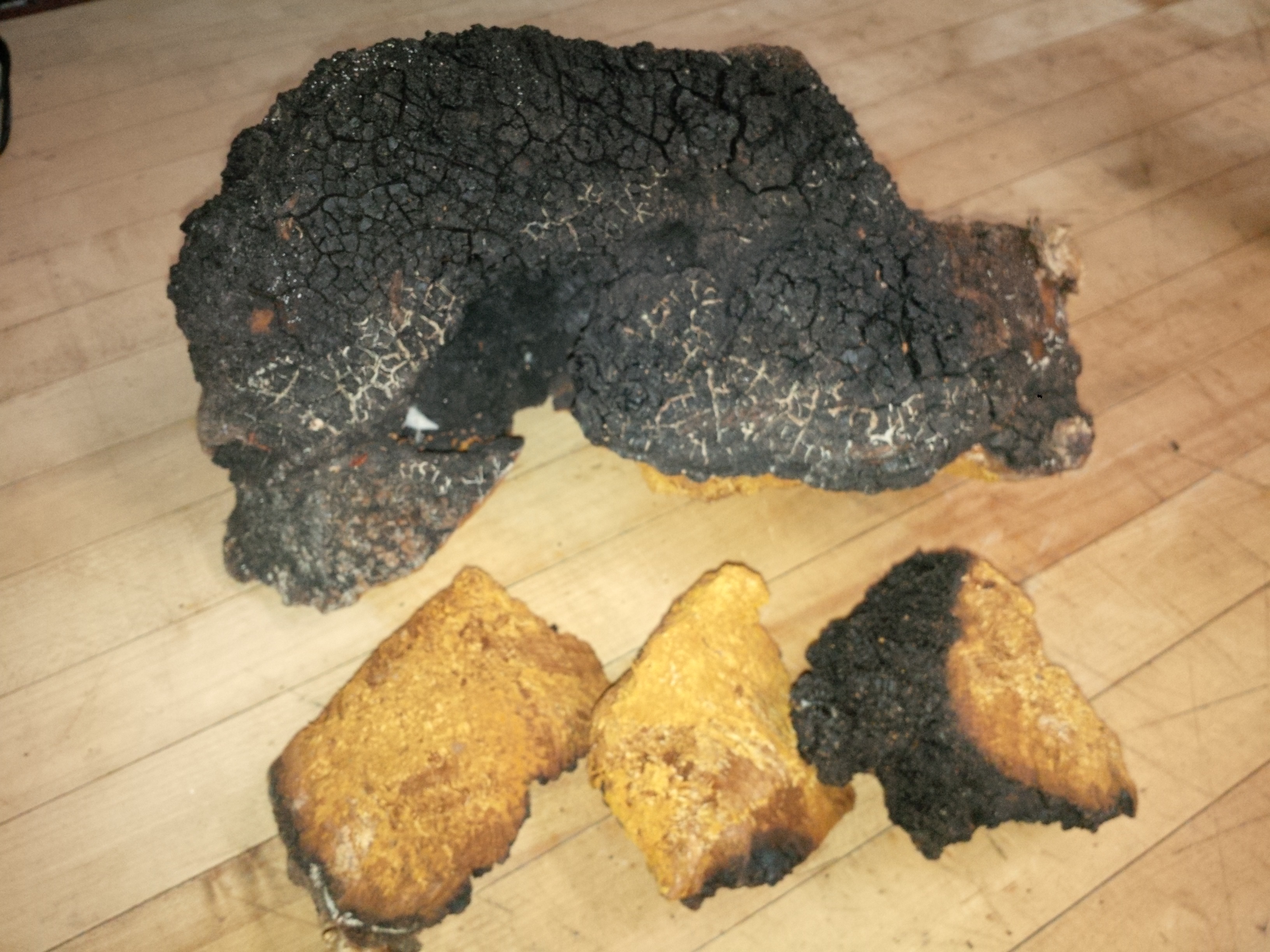
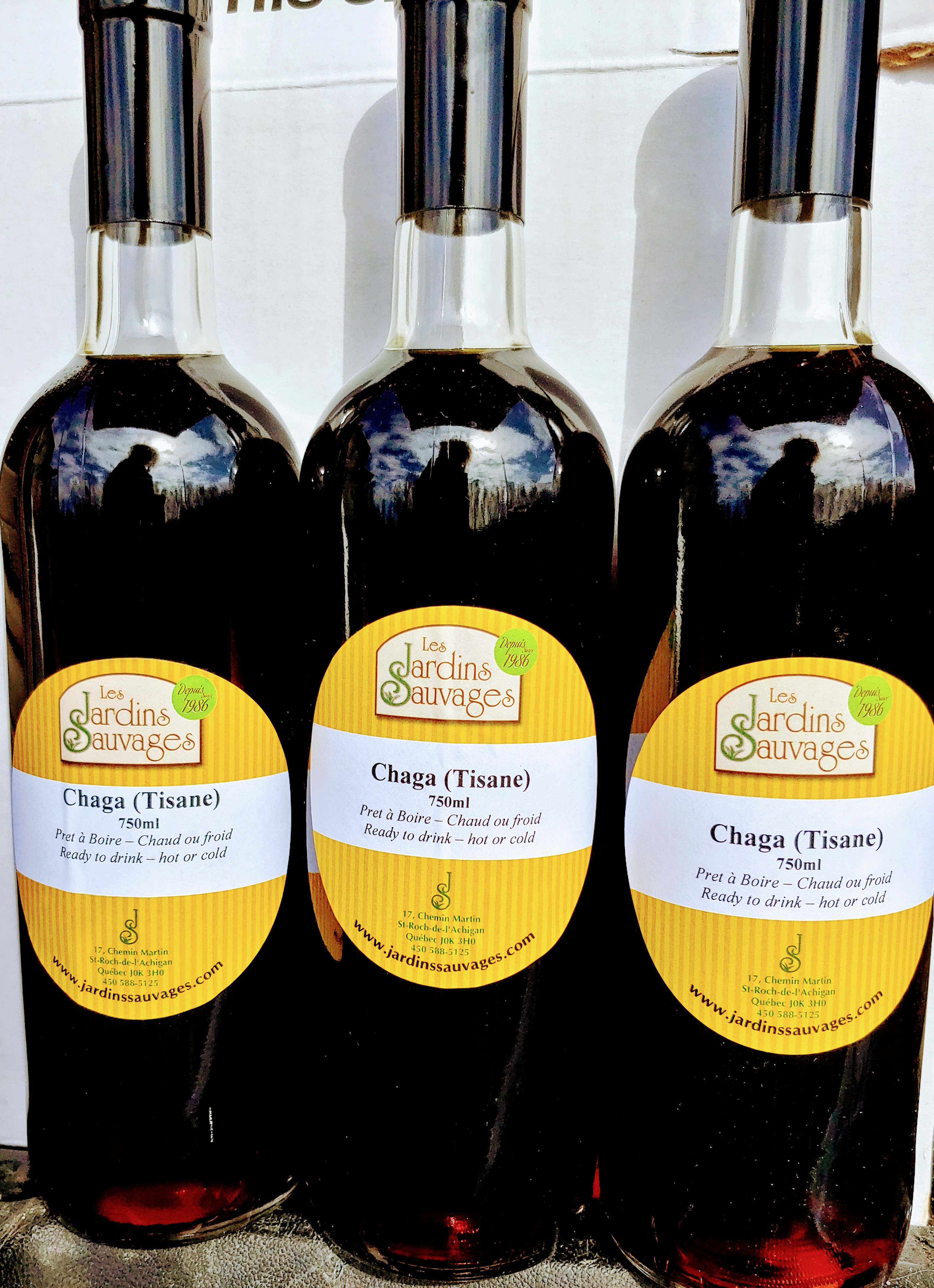
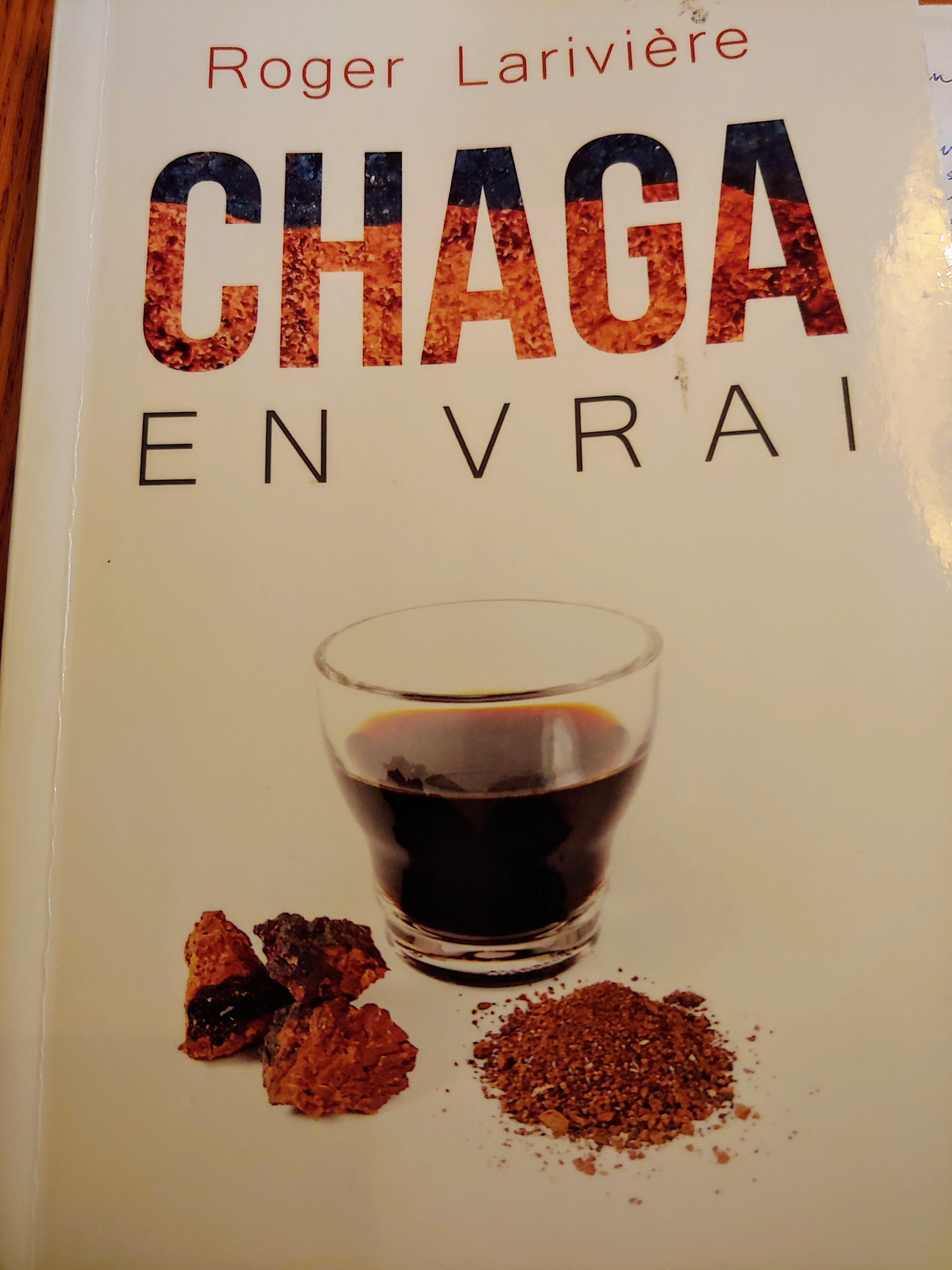
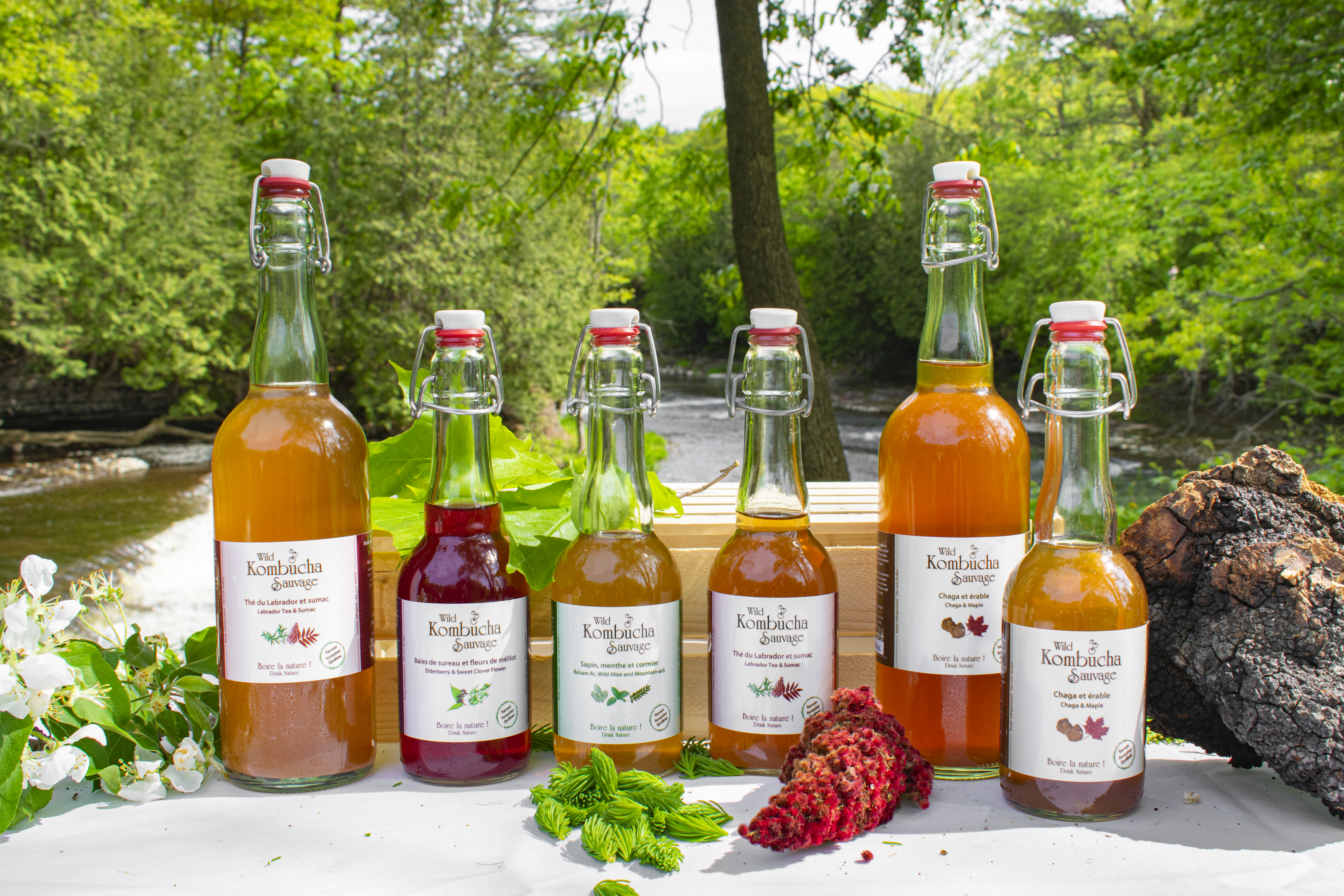
I was skeptical initially, when it came onto our radar like 10 yrs ago. Due to my ‘science background’, I am typically slow to jump on that kind of bandwagon. I do appreciate nature’s alternative ‘medicine douce’ to be used in parallel with conventional practice, but am cautious about miracle claims, equally annoyed with greedy pharmaceutical companies as with loopy charlatans who wreck it for the rest of us..
And at Jardins Sauvages, we were always about gastronomy first, and we still are.
Francois does love the stuff though, he drinks it every day. I find it kind of boring, so I don’t much. Funnily, many think I’m a passionate advocate of nutrition and wellness, when I’ve only ever been a gourmand(e), more like a hedonist. However with ethics and respect for the environment. So the local, seasonal, wild thing just fits, because besides being wholesome and making sense allround - for the soil, community too.. , it often is what tastes best.
We like to eat and cook delicious things period, mostly from the field and forest, small local farms, etc. The healthy or medicinal aspect was always bonus. When we would do tastings to introduce our wild greens /mushrooms/products to people, often they would ask ‘what are the properties?’ François would smartly respond, ‘Le bonheur, c’est délicieux’, (Pleasure, it’s delicious), first and foremost, and then add any other info as secondary. Because its true that yes, stinging nettle, dandelion, many wild greens and mushrooms, wild herbs and spices have documented properties, but we don't shout about it, focusing on instructing people how to prepare them properly for a satisfying meal.
When Chaga and Mushroom teas started to become marginally trendy, we decided to add it to our offer. Mainly because it grows in Quebec, can be harvested sustainably, and people want it.
So naturally, I was inspired to make a Mushroom tisane that was tastier – with other healthy but more flavourful mushrooms in the mix.. It has its fans, but I’ve realized that these are two different clienteles with little overlap. Those who want Chaga don’t care much about taste, they are seeking the medicine.. Those who are eating or cooking want the fresh mushrooms or other products, they aren’t necessarily interested in mushroom tea, haha. Meanwhile I was kind of wasting my time fussing because I found it so important that my mushroom tea be delicious.
Chaga has a light, woodsy aroma. I can appreciate it as is, if it lacks pizzazz. With a little maple syrup, the flavour is enhanced. I see increased complexity and apple notes in my Chaga Kombucha or in recipes with some fat/milk or alcohol/acidity.
As for the medicinal properties....
If you Google it, you will see that there is dizzying amount of info out there, from sketchy to scientific. There is work being done here at the University of Quebec in Trois Rivìeres. I bought this book by Roger Lariviière for François and upon reading it, I find it pretty convincing. Having long known about the anecdotal evidence from cultures like Siberia to Scandinavia, China, Korea and Japan, where it has been used for millennia as the secret to longevity and to treat tuberculosis, ulcers, and all kinds of ailments, it is only in the last couple of decades that research is quickly progressing globally. Now, science is catching up, which is pretty interesting.
In the fifties, when cancer started to take hold of medical journals and diagnoses started increasing worldwide, a Russian doctor noticed that there were no cases in areas where they had a custom of drinking chaga tea daily (a practice adopted when too poor to have imported tea!)
It is a mild stimulant, increasing concentration, which is why some people like to drink it like tea/coffee. But its most winner attribute/what most people are after are - is the overall immune system boosting effects, and anti-inflammatory, anti-viral properties. It has been shown to stop tumours in early stages, and to diminish the secondary effects of chemotherapy/ radiotherapy. It is high in anti-oxidants and enzymes that slow aging of the skin, hair, organ cells and aiding skin conditions like psoriasis.
It supposedly helps stabilize cholesterol and glucose levels, good for heart and blood pressure, slows allergic reactions by breaking the cytokine response, aids digestive tract issues with its anti-ulcer properties as well as the cellulose and chitins providing fibre. Oh and its spermicidal. These bio-molecules are all proven to be there, how bio-available they are upon ingestion depends on how it is prepared and on your microbiome.
Health Canada has it listed as a ‘aliment naturel’ (natural food/ supplement) and recommends not exceeding 3.6g/day (dried), safe except caution for those with penicillin allergies, on anticoagulant medication, with organ transplants and heart tremors.
The medicinal value/potential health benefits depend on how it is extracted and consumed. The active ingredients are either fat soluble or water soluble, so to get lipids like erosterol, inotodiol and polysaccharides like betulin, BTA (anti-cancer/anti-viral), and A, E, D, K vitamins, you need an alcohol extraction like a tincture.
But there is still lots of good stuff in the aqueous tea like the betaglycans, most of the anti-oxidants, melanin and polyphenols, SOD enzyme (also anti-viral/anti-inflammatory, allergies, skin etc), and protein (animo acids), as well as the B vitamins (B2, B3, B5 ) and minerals (Si, Cu, Fe, Al, Mg Na, zn, K). What an impressive cocktail!
But no, it is not a quick fix for anything. Like many medicinal plants and ‘adaptogens’, it is only with regular consumption over time that reveals healing and protection. Like with a varied healthy diet! Which only tends to be sustainable if routine, comforting and/or delicious...
I now find myself taking a glass here and there, and introducing it in my cooking more.
I always used it in tisanes, coffee, and some infusions (sauces, desserts), but often half heartedly; it felt more like a gimmick, whereas now I pick it up to layer it in with intention, and a shot of extra love.
We sell it at the market (and our online store) in dried chunks or powder, and upon demand, we have added 750ml bottles of prepared Chaga beverage that keeps in the refrigerator for a month or so.
When making your own, you want to keep in mind: In order to benefit from the multiple properties, you want a slow and long extraction, but should be careful to not heat it higher than 80C. I heat it in water to cover and turn off, leave overnight (in the fridge ideally), and do that 3x.
You can add drink it hot or cold straight up or mix it into coffee, hot chocolate, tisanes, broth, soups and sauces, smoothies or just about any recipe savoury or sweet at the end.
'Back pocket' Recipe Exchange
Although there are lots of interesting recipe ideas scattered throughout My Bits & Bites Post, here is a more personal list of Covid Confinement inspired Recipes – from an old fashioned Recipe Chain Exchange..
Simple ‘back pocket’ (or 'cupboard’) recipes and family favourites came to my inbox from all over the country, which I found fun and heartwarming. The unpretentious kind of stuff you just don’t really get on the hippest food feeds/websites, from apple cobbler to honey fudge and red lentil soup, beet wellington! - perfect for these times. So, let me share a few and their stories, with thanks..
I start with Carolyn’s 'buns' because she’s my 'aunt' and I love the idea of reviving and passing on an old family recipe, a piece of my Newfie heritage. I wasn’t in the habit of making scones because it’s just not a thing here in Québec; in fact, I’d kind of forgotten about them, although I do appreciate a good scone (thinking back to my time in England with clotted cream). Plus, my partner, François claimed to not be a scone fan, I guess his only reference being something chalky from a crappy café. To me, with still enough 'anglaise' in me, it’s ultimate comfort food with a coffee or tea. And they’re quick enough to whip up. François seems to have come around with this recipe, slathering them with maple butter, or typical guy move - more butter! and homemade jam. Like Carolyn, he likes to heat them up for a few seconds in the microwave. I like them plain. At least early in the day, if/or dressed up later..
‘This was my mother’s recipe . Nancy’s grandfather, my uncle named them “Dottie’s buns”. Since then they have become”Carolyn’s’ buns”. Hope you enjoy them. They are a family favorite.’ |
|
|
||
Newfie buns (scones)
2 1/4 cups flour
1/2 cup butter
3 tbl. sugar
4 tsp baking powder ( don’t level)
1/2 tsp salt
2/3 cup milk
1 egg ,stirred into the milk
Raisins or leave them plain
Cut the butter onto the flour mixture with a pastry cutter or your hands
Add milk mixture to bowl and raisins
Mix with hands until all flour has disappeared. Do not over mix. (Knead it 5-6 times, do not overhandle it!)
Form the dough into a round and place on a floured surface
Pat into a round with your hand to about ½ inch or more. (Don’t use a rolling pin)
Cut each bun without twisting the cutter
Repat and cut . You should have 12-13 medium buns
Bake at 400 for 17 mins or so
Let me follow with one more old Newfie family recipe in the same vein.. As its a similar paste/batter treated differently, with fruit/ jam.. (I guess they didn't have as much to work with back then..) Which is also why I find these recipes more than appropriate now, to show what you can do with the same few ingredients. I love the 'FatBack and Molasses' book!)
From Dorothy Latreille, St Johns Nfld: ‘Nancy, I am sending you a favourite family recipe called Mom’s apple pudding. A minister called Ivan Jesperson at Wesley United Church in St. John’s (the church that your Grandmother and all of the family attended) had a cookbook published as a fundraiser. Our grandfather George Gillingham and his brothers helped build the church! The cookbook was called Fat-back and Molasses! Wednesdays and Fridays were ‘fish days’ just about everyone had fish for dinner on those days for dinner! Guess it was a way to promote the cod fishery. “When we were young, what we liked best about Friday’s fish dinner was Mom’s apple pudding”….
This was a recipe Aunt Dot submitted to the cookbook!
Aunt Dot was the cook and my Mom Rita was the ‘handyperson’ who did everything including the painting of the trim on the windows as well as tarring the roof and bringing up the tar using the ladder and piece of rope!’
*No doubt, In every family, there needs to be at least one cook and handiman/woman! I reckon many people are figuring that out these days.. (my comment)
Mom’s Apple Pudding
Make apple jam or use a large size tin of apple pie filling, sweeten to taste and place in a casserole dish. The filling or jam must be hot. Then:
1 ½ cups flour
1/3 cup butter
1/3 cup of sugar (I use less then this whenever I make this)
2/3 cup water
3 tsp. baking powder
¼ tsp. salt
Sift dry ingredients together into a bowl, rub in butter well, add water and stir well. Drop by the spoonful on the hot apples and bake until nicely browned. (You could also use partridgeberry or blueberry jam). After serving, pour a little milk over pudding , if desired.
Moving West: Sweet and Elegant, Simple enough..
From Anita Stewart, Elora Ontario : http://fooddaycanada.ca/
Honey Fudge
OAC’s Bee Lab (a.k.a. Townsend House)is the oldest school for apiarists in North
America. This fudge tastes like buttered honey and is easy to make. The only special
equipment needed is a good candy thermometer. The results are worth it.
2 cups (500 mL) granulated sugar
1/3 cup (75 mL) OAC liquid honey
½ cup (125 mL) milk or half & half cream
¼ cup (125 mL) unsalted butter
1 tsp (5 mL) vanilla
In a heavy saucepan, stir together the sugar, honey and cream. Place over low-
medium heat stirring to dissolve the sugar. Attach the candy thermometer ensuring
the bulb does not touch the bottom of the pan but is immersed in the liquid.
Increase the heat and bring to a boil. Do not stir till the mixture reaches 240’F.
Remove from heat and stir in the butter and vanilla. With a wooden spoon, beat
constantly till the mixture cools and thickens slightly. Pour into a well-buttered 8 or
9” glass pan. Cool for 10 – 15 minutes, score slightly with a sharp knife. Allow to
finish cooling. Cover and refrigerate if not serving right away.
*Adapted from The Farmers Market Cookbook (General Publishing 1984) by Anita
Stewart, Food Laureate and Jo Marie Powers, Professor Emeritus
Pulla (Finnish Sweet Bread)
This recipe comes from the Finnish community of Sointula on Malcolm Island in north coastal B.C. The Finns settled there to build a 'place of harmony' in the early part of the last century. Tuula Lewis, one of the community's beloved matriarchs, often provided many loaves of this delicious sweet bread for the local museum. When I visited the museum, before I was even allowed into the collection of Malcolm Island memorabilia, I had to have a thick slice of this fabulous cardamom-scented bread, spread with butter and wild blackberry jam…a cup of tea was also de rigeur.
For me this is a festive bread, one that is baked at both Easter and Christmas...and with luck, lots of times in between.
If you are using Instant Yeast, the method will change slightly. See Insert Below:
The yeast puff:
× ¼ cup (60 mL) warm water
× 1 tsp (5 mL) granulated sugar
× 1 package / 1 tbsp (15 mL) active dry yeast
The Dough:
× 1 cups (250 mL) granulated sugar
× 2 cups (500 mL) very hot water
× ½ cup (125 mL) warmed table cream (18%)
× 2 eggs, well beaten
× 1 tbsp (15 mL) ground cardamom
× 2 tsps (10 mL) salt
× ½ cup (125 mL) melted butter
× 6 – 7 cups (1.5 – 1.75 L) all purpose or bread flour
Egg wash made with 1 beaten egg and 2 tbsps (30 mL) water, whisked together
In a small bowl, stir the water and 1 tsp (5 mL) sugar together till sugar is dissolved; sprinkle with yeast. Let puff for 5 to 7 minutes.
Meanwhile, in a large bowl, dissolve the sugar into the very hot water. Whisk in the cream, the beaten eggs, cardamom and the salt. Add the yeast mixture, stirring to combine. Add the melted butter, combining thoroughly.
Add the flour, a cupful at a time to ensuring that it is well blended after each addition. As you add the flour beat well.
(FOR INSTANT YEAST: Into a large bowl measure the sugar and then add all the wet ingredients whisking to ensure that the sugar is dissolved. Stir in two cups (500 mL) of the flour to make a slurry. Whisk in 1 tbsp (15 mL) instant yeast, another cupful or two of flour and then add the cardamom and salt. Continue beating till the all the flour is incorporated.
When the dough is dense and stiff, turn out onto a well floured board and knead in any remaining flour. Knead for 5 – 7 minutes until the dough is smooth and elastic. If the kitchen is warm, simply cover the dough with a kitchen towel and let rise until doubled. Otherwise transfer it to a well oiled bowl, cover and let rise in a warm place for 1 ½ to 2 hours or till doubled.
Punch down and divide into four. Roll each piece of dough into a flat rectangle, about 10” (25 cm) long. Make two lengthwise cuts to within 1 “ (2.5 cm) of the end of the rectangle. Braid the dough, pinching the loose ends tightly. Place on a parchment-lined baking sheet. Let rise a second time for about 50 to 60 minutes. Brush with egg wash and bake in a preheated 350’F oven for 25 – 30 minutes.
Makes 4 braids.
*Recipe is from Anita Stewart's CANADA: The Food, The Recipes, The Stories (Harper Collins Canada 2008/2014)
Going Savoury..
This recipe comes from Shawna Gardham in BC :
Shawna Gardham, Executive Director, Chefs' Table Society www.chefstablesociety.com
If you are like me, you have dried lentils and beans in your cupboard that have been neglected for ages. So here is a recipe to help..
Red Lentil Soup – 6 servings
1 cup red lentils, soaked overnight and drained
6 cups water or chicken broth
2 medium onions grated
2 carrots grated
1 tsp paprika
salt to taste
2 tbsp butter
2 cups tomato juice or 2 tbsp tomato pasted diluted in ½ cup cold water
Dressing
1 tbsp butter
½ tbsp paprika
Place lentils, water or broth, onions, carrots, paprika and salt into a saucepan. Cook until lentils are tender.
Remove from heat and press through a sieve or blend in a food processor or in a blender. (I like to use a hand blender right in the pot).
If you used the food processer or sieve put the liquid back in the saucepan.
Add butter and tomato paste and bring to a boil.
The consistency of the soup should be creamy.
Dressing – melt butter in a pan, add ½ tbsp paprika, stir and trickle over the soup.
|
|
|
|||
|
From Joy Shinn : Beet Wellington This is a vegan recipe I make for my daughters. I've been making a lot lately for some reason - but despite it's name and list of ingredients, it's pretty easy and flexible with ingredients. (Ingredients below with measures, but for the most part, not essential to have exact amounts) Bake the beets in oven to fully cook. Unpeeled, in foil or not. Good to have beets equalish size. 4 or 5 depending how big. While cooking finely dice the onions or shallots or leeks (whatever you have)/garlic & mushrooms -and fry in pan until nicely browned. If you have some spinach, fresh or frozen throw in pan until just warmed. Season with rosemary, or thyme, salt, pepper. If have panko you can add 1/4-1/2 cup to this. Also throw in some chopped walnuts (or pecans in lieu). Then set aside and have a sip of wine. When beets are cooked, slip of skins and chop off ugly ends if haven't already. Take your puff pastry sheet and lay flat on pan (to save hauling it over later). On the left long edge, spread some vegan cheese, or Boursin, feta or similar (optional) and then lay out 2/3 of the mushroom mixture on top. Arrange the beets on top of this (touching). Then add the remaining 1/3 mushroom mix on top of the beets. Likely it will fall between the beets but that's ok. If you have balsamic reduction you can drizzle 1-2 tbsp over the top of the beets, or just plain balsamic. Then cover the beets+ with the other side of the puff pastry and crimp the edges. That's it other than bake in oven mainly to warm the inside and cook puff pastry as everything else is cooked. Have more wine while you wait! Of course, you can sub the veg for other things you have like zucchini, squash, etc or apples. Most goes well with beets. INGREDIENTS · ½ cup walnuts
From Susan Vardy: I’ve attached a couple of muffin recipes that we really enjoy. The Christmas Morning Muffin Recipe – I’ve been making every year since Christmas morning 1985 - I have a little note on the recipe! I’ve also made them with blueberries and a local berry here in Newfoundland called partridgeberries. I try to keep cranberries in my freezer- it’s one of our go to recipes. The other cheese yogourt muffin recipe we enjoy as well- I don’t make the apple butter very often though. |
||||
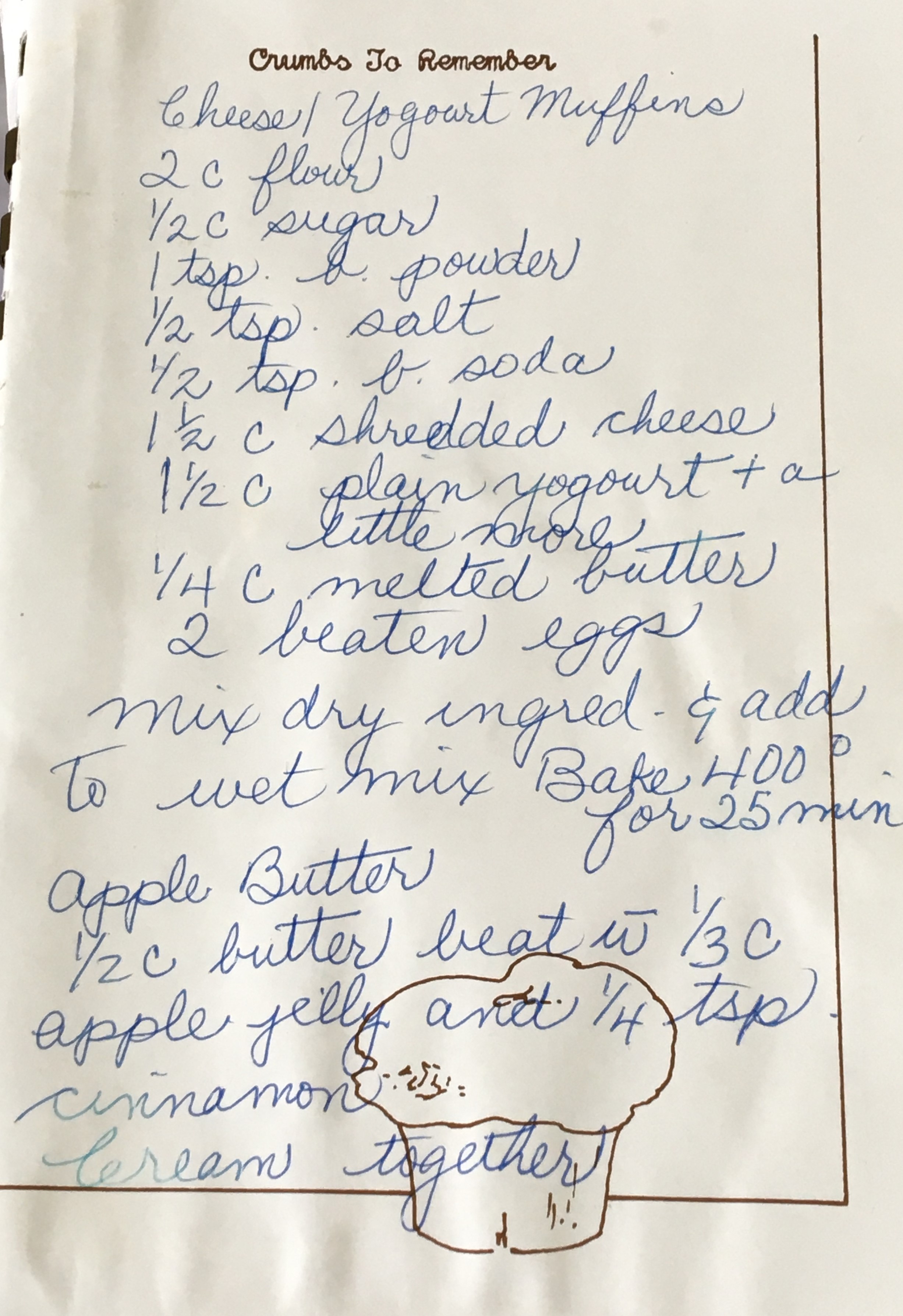
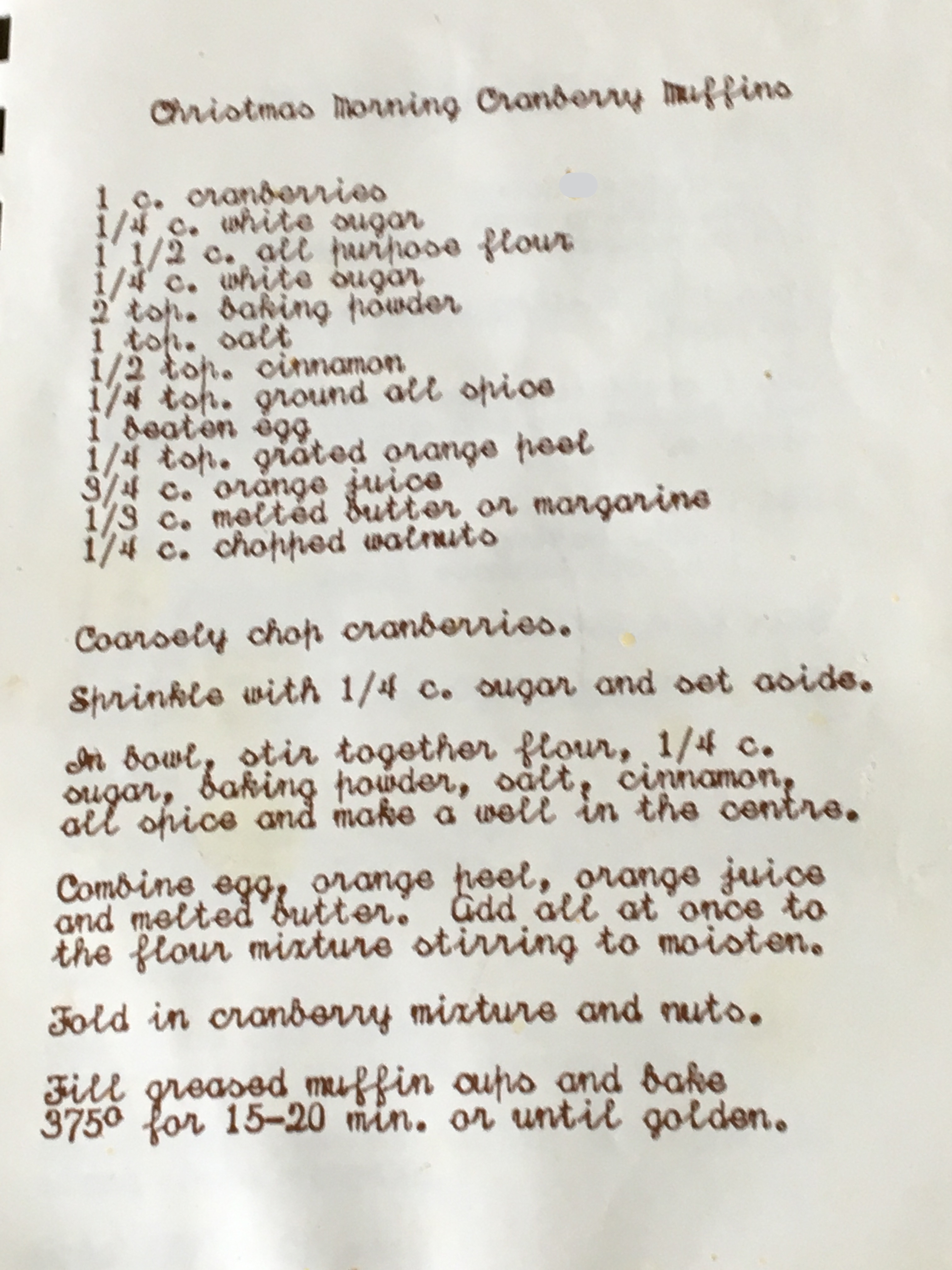
Here are a couple of my own :
Buckwheat crepes (and/or Fried cheese)
Chef Nancy Hinton, Les Jardins Sauvages
I love buckwheat and we live right next to a mill, so that explains it as a back-pocket recipe for me. Plus it’s versatile in that you can just make crepes, straight up or stuffed, either savoury or sweet. Or use the batter to coat and fry cheese, which has been one of my classics for years.
8+ portions
1 cup buckwheat flour *or substitute half regular flour and another nutty flavourful flour of choice ..
1/3 cup AP flour
3 eggs
¾ cup milk
2Tbsp melted butter (+ s.q to cook crepes).
Pinch salt
Pinch sugar if so desired
Water s.q.(to desired consistency)
(s.q.=sufficient quantity)
Optional : A semi-firm ripened cheese that melts well ex. swiss/gruyere, cheddar, gouda style – cut into 2cm thick squares/pieces (50-60g ea)..
Make crepe batter by mixing dry ingredients together and wet ingredients separately (eggs and milk), then slowly mixing the wet into the dry while whisking, until smooth. Whisk in the melted butter. Let the batter rest for 30min at room temperature or longer in the fridge.
When ready to cook, adjust the consistency with some water. (up to about 1/2cup, like the flow of cream for a thin crepe).
If you’re frying cheese, keep the batter on the thick side, you probably won’t want to add much water. Lightly coat cheese pieces in flour then dip in batter and fry like a pancake.
Cook your crepes (or crepe coated cheese) in butter on medium-high heat to start, lowering heat when necessary, flipping when nicely set and coloured, a minute or two per crepe. For fried cheese, leave a minute more on low heat until cheese is warm/starting to melt. (Or you can finish/ reheat later in oven).
To serve, you can go savoury or sweet: Stuff or top your crepes with ham, eggs, cheese, tomato, cooked spinach or mushrooms etc, a dash of maple syrup, or with fruit and ricotta, jam.. I like to layer them in a vegetable ‘lasagne’ too.
If frying cheese, serve with pickles or on a salad with a punchy vinaigrette, or again with fruit preserves like cloudberry jam..
Use up any extra batter to make crepes for the freezer! Wrapped well, they freeze nicely/keep well.
Dorie Greenspan’s Apple Custard Cake
A grand dame of the sweet kitchen, Dorie Greenspan refers to this cake/pudding as ‘custardy apple squares’, one of her back-pocket recipes, and it has become one of mine. It’s not too sweet, the kind of thing that can serve as breakfast, a snack or dessert. I like it plain and cold/room temperature, François likes it warm with (whipped cream/ice cream) .
Jardins Sauvages Covid Update
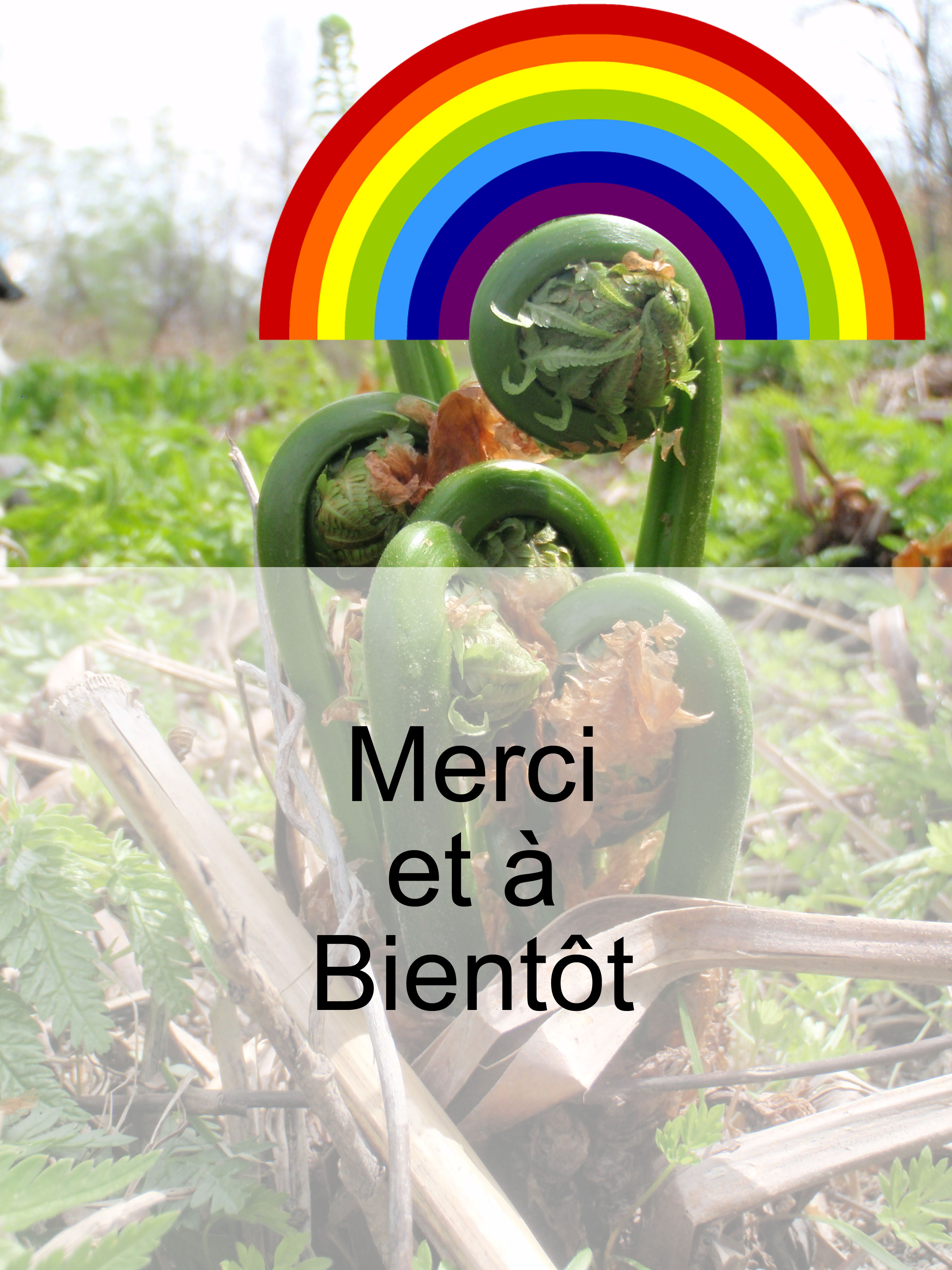 While our Jean Talon Market stall remains closed for April, we now have an online boutique to make placing orders for pick-up or delivery possible.
While our Jean Talon Market stall remains closed for April, we now have an online boutique to make placing orders for pick-up or delivery possible.
Jardins Sauvages Online Store You can also call the restaurant to place an order and pay by credit card or e-transfer.
For now, to keep activity risks to a minimum, it’s once a week : you place your orders before Wednesday night for pick-up/delivery on Friday. The Pick-up schedule will be Friday 10-13h at Jean Talon Market; Delivery 13h- ; while in St-Roch de l’Achigan Pick-up and Delivery 15-18h
We plan on opening the market stall in May along with the first spring greens, fiddleheads and morels!! (thankfully, Mother Nature and Spring follow their natural course) - if with reduced hours to start.. 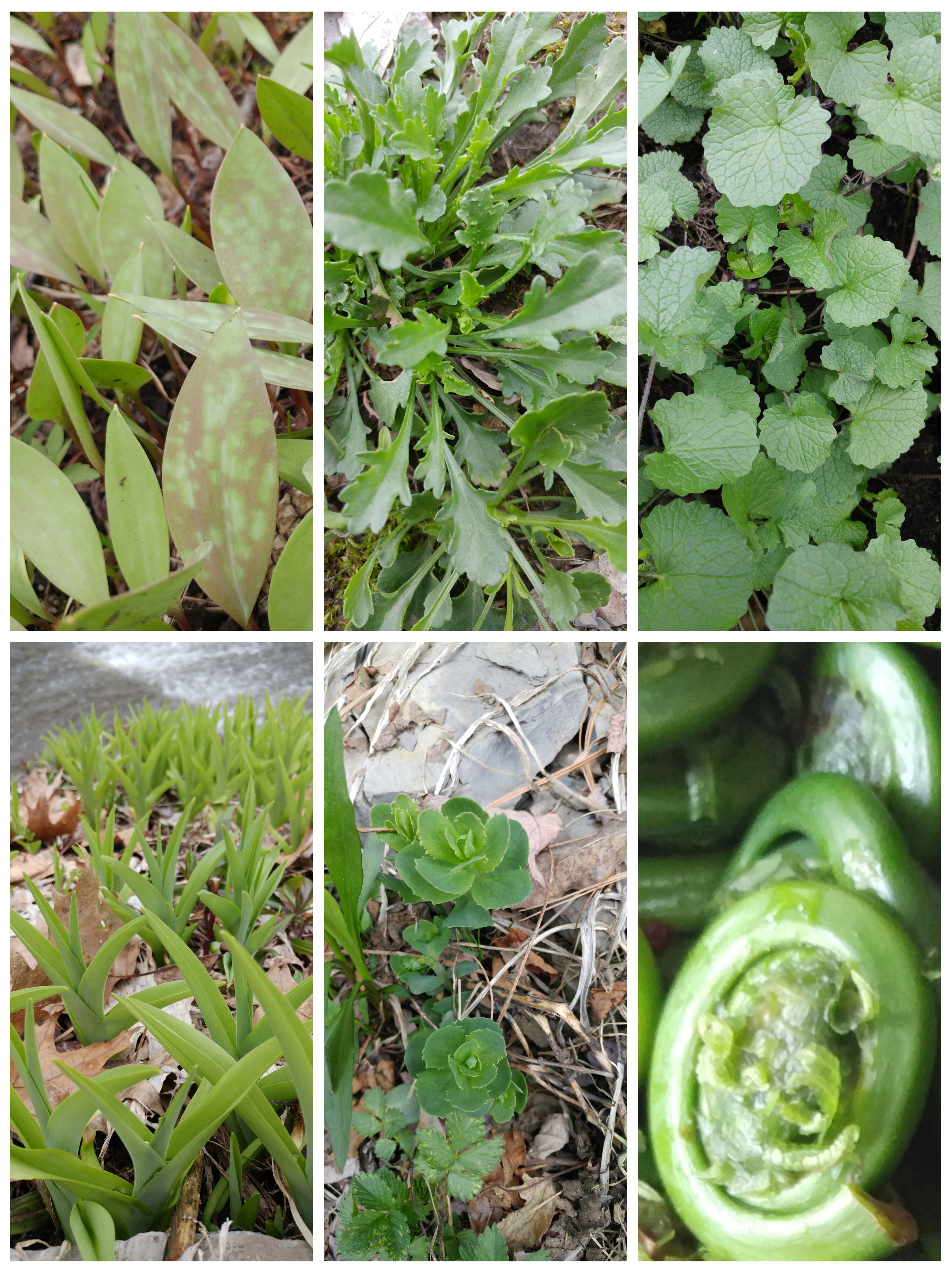
The country restaurant is closed until further notice, and spring workshops on hold as well.
Stay tuned to our website or even better, follow us on Facebook for the latest news! https://www.facebook.com/JardinsSauvages17
Cheers , Santé
Take care and hope to see you soon on the other side,
Nancy H. and François B.
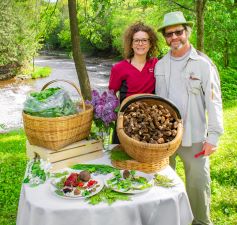
From Wild Booch back to Wild Shrooms
My new baby – ‘Wild Booch’ - Kombucha Sauvage
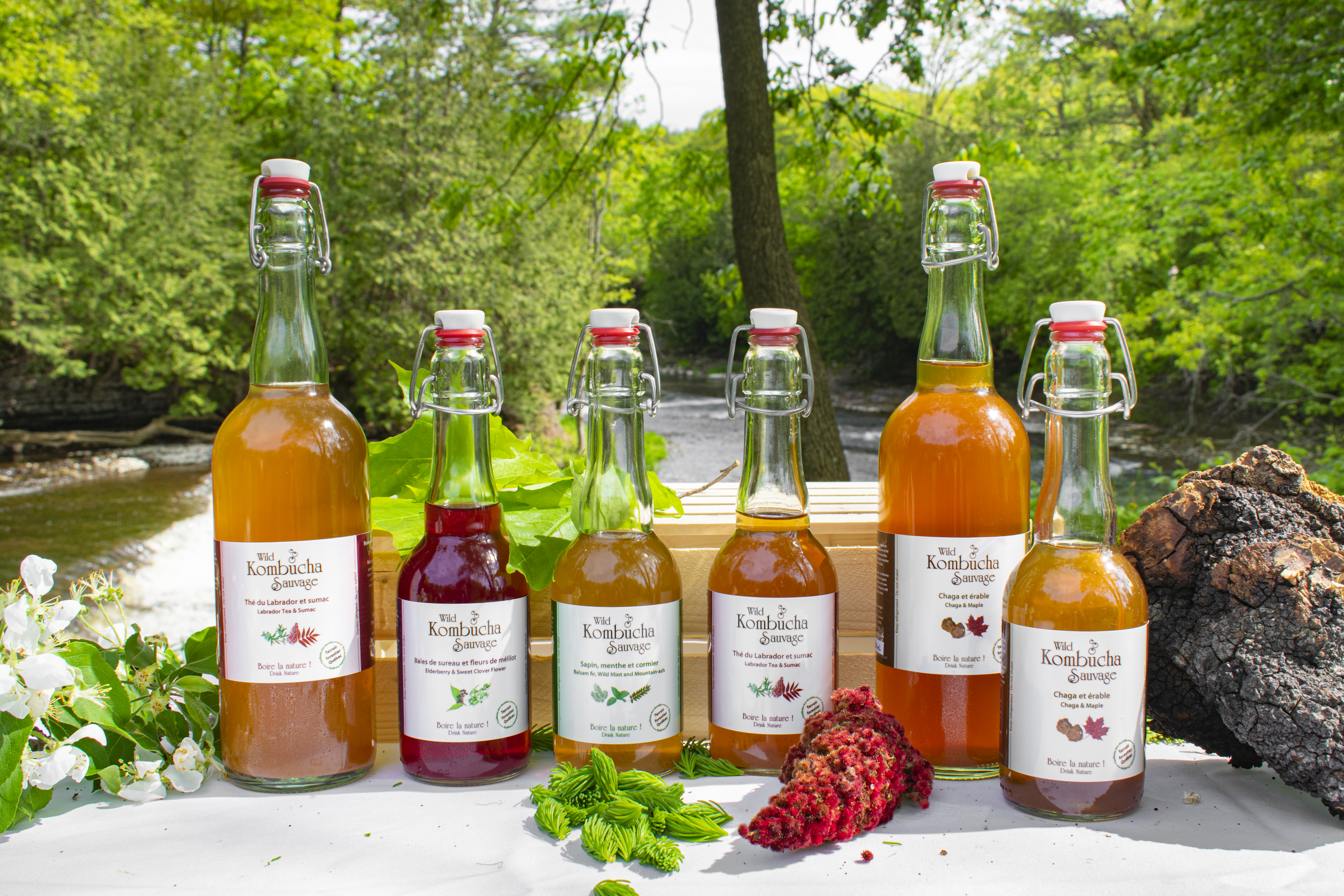
 My sexy labels are thanks to Yves (Menu&Cie)
My sexy labels are thanks to Yves (Menu&Cie)
More than a year into this adventure now!
A curiosity turned hobby turned little side business..
It all started with ‘the sodas’ (Soda Sauvage) which I had been working on bringing to market for a couple of years since we began carbonating our maple sap in spring 2016 for fun. François liked it plain, but I wanted flavour! I got to playing around and finally called on Ryk, a soda enthusiast, who coached and lent me equipment for my first bottling. With some further research, trials and a few explosions later, I invested in the basics and got it down. Once my sumac maple sparkling water was set and adopted, it spawned a line of ‘sodas’ featuring clean and subtle flavours from the forest.
Then I caught the fermentation bug after taking a class for professionals with Sebastien Bureau (Mannanova), and began fermenting everything in sight. Scary looking (and smelling?!) experiments were bubbling all over the place between the restaurant and our house kitchen counter and cupboards, François found it frightful - until he was sold. Kombucha became a daily libation for both of us, as well as an amusing project for me – an open template for exploration.. As I have been cooking with all these local wild plants and mushrooms for so many years, it was only natural that François’ foraged treasures would end up in our glass as well! The Kombucha came to overshadow the sodas only because it happened to be trendy and more punchy, more market friendly in the moment.
(In case you’re not familiar with Kombucha, it is a naturally sparkling beverage made from fermented sweet tea that is refreshingly sour, and supposedly super good for you and your gut.) Look it up!
I just think it’s delicious, when well made.. Besides the composition of your mother (SCOBY), and kind of tea, ingredients, herbs and spices you use that go into it, not to mention the brewing temperature and method, there are many different styles. At Montreal’s Boochfest recently at Jarry Park, I tasted everything from sweet, commercial, ultra filtered carbonated ‘phony’ Kombucha to super pure, bland tonic, as well as super dry, overly aromatic concoctions and everything in between. Every aroma under the sun and a wide range of effervescence, on offer from big international companies to hyper-local artisans, all with a unique booch. And from observing customers, it became obvious that everyone seems to appreciate something different too.
Personally I favour a fermented product (so acidic) with minimum but some residual sugar to balance, with a real tasting flavour that is not overpowering. I find that almost every beverage on the market tastes artificial even if they claim to use ‘natural’ flavour; my pet peeve! Although there might be slightly more authenticity in the Kombucha world than with soft drinks or ‘waters’, marketing remains omnipresent and just as misleading as it goes mainstream, the bigger brands already in supermarkets..
I love my bubbles, but I stop them short a bit to have stability in the fridge since I don’t extreme filter out all the good stuff. At home, I often allow for a longer 2nd fermentation and even leave the fruit/herbs in, but not a good idea for business.
My four flavours offer up each a different personality: The Chaga-Maple is Soft and Easy, intriguing for the medicinal mushroom factor; Labrador Tea-Sumac is sharp, astringent and refreshing, my favourite but apparently the least so with customers beyond Booch old timers.
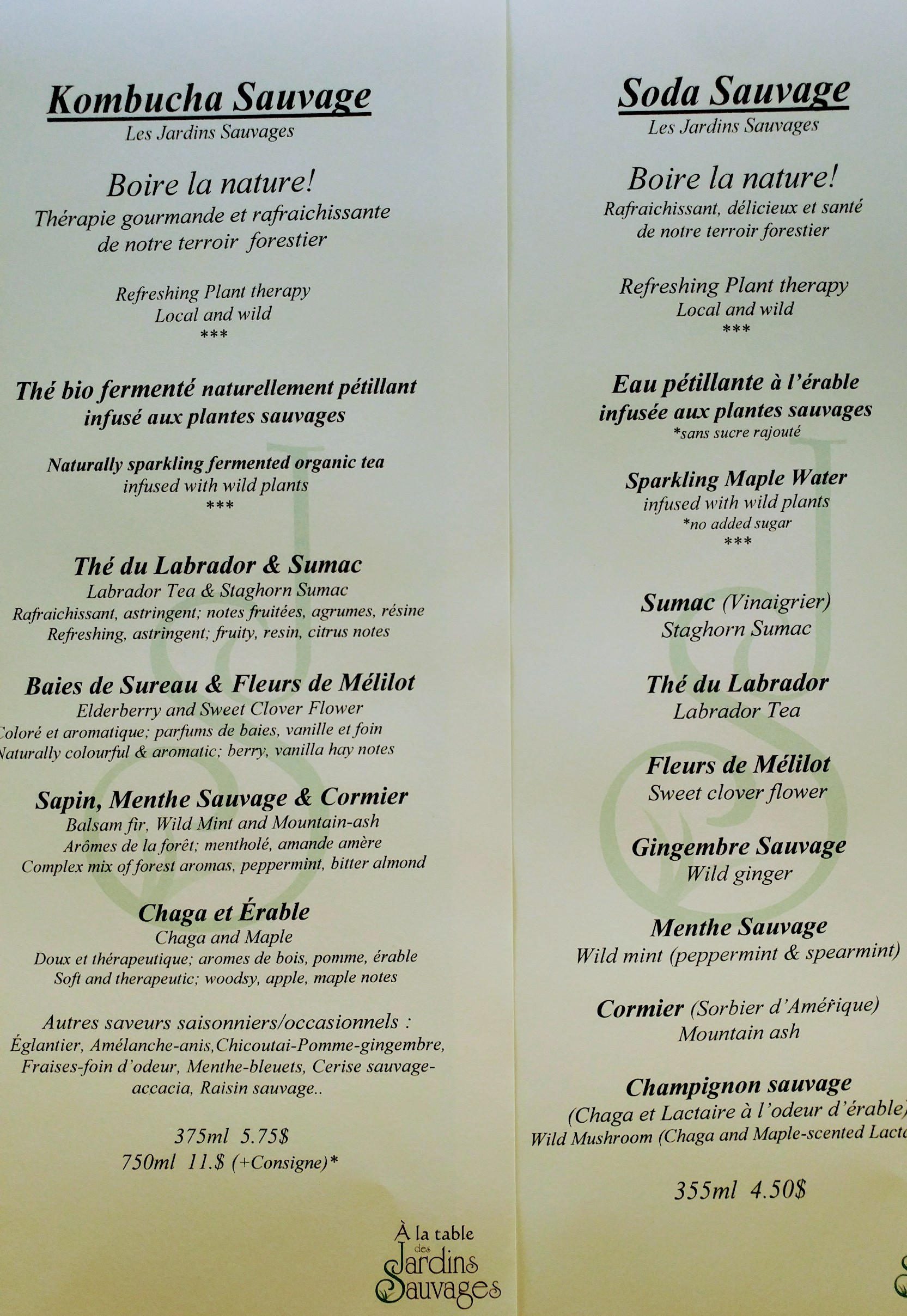
The crowd favourite seemed to alternate by the week at the market, but now has settled on the Balsam Fir, Wild Mint and Mountain Ash. It is the most complex, like a walk through the forest. ‘The chicks’ seem to like the Elderberry-Sweet Clover Flower with its pretty colour and wild vanilla-like grassy notes. We also have many seasonal flavours that we serve by the glass (Kombucha du Jour) at the market like Strawberry-Sweetgrass, Black Raspberry-Anise, Wild Mint-Wild Blueberry, Cloudberry-Apple-Ginger, etc.. http://jardinssauvages.com/index2.php?nom=Kombucha_Soda
Good stuff.
It is not hard to make at home for your personal consumption, if you’ve got some SCOBY *(Mother) and are on top of it. (*A symbiosis of good bacteria and yeasts that turn the sugar /alcohol into acetic acid, among other organic acids)
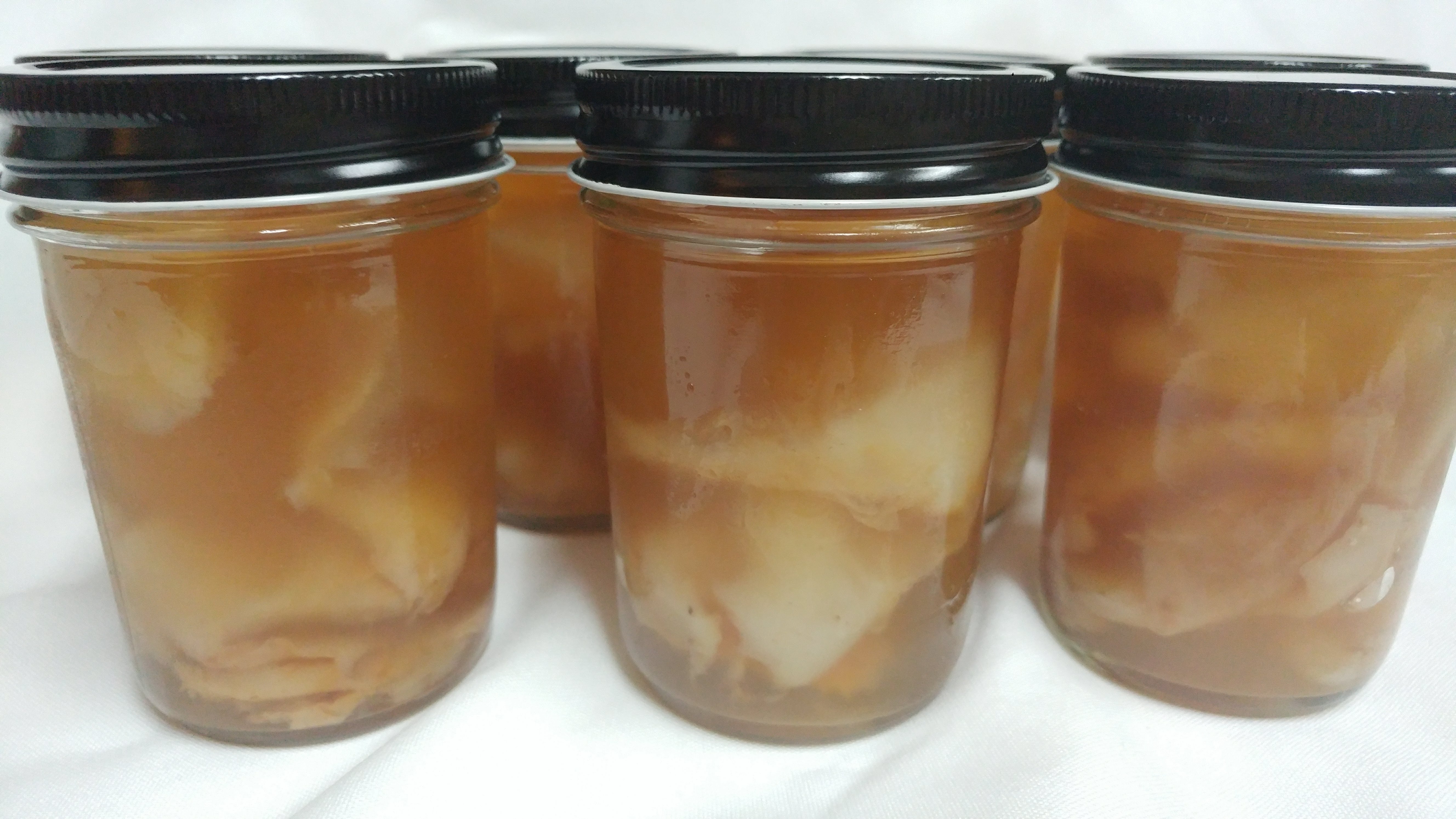
Of course, as I soon discovered, brewing booch at home is one thing, doing it on a larger scale and commercially is whole different game. Achieving a regular, consistent and stable product while remaining artisanal, favouring a top-quality and healthy alive product is a challenge. I learnt a lot in the past year growing slowly, organically, tinkering with all the parameters, doing everything on my own from the recipes to the heavy lifting, methodology, logistical troubleshooting, adjusting variables, tweaking... Alongside my reliable refractometer, I have two Ph-o-meters, but my tongue is the best. All to say, I’m humbly quite pleased with my progress and my line.
As I’m rolling in hundreds of liters and not thousands or hundreds of thousands, my operation is still way small relative to the commercial booch, and we are not distributed - only sold at our store (Jean Talon Market, Mtl), our country table in St-Roch de l’Achigan and on order, for a select few restaurants with a local menu/beverage program, like the Monkland Tavern in NDG ..
At a crossroads, I’m unsure what the next step should be, as I’m maxed out with my current set-up. I could take on a couple of clients, that's it. My plan. We’ll see what the future holds for my Kombucha Sauvage.. I am taking a commercial class on big-scale brewing to enlighten me before further investment.
Who’s kidding who, I am a chef first and quite like it that way. I kind of want to keep up this beat, with my brewing as a sideline, but I can’t help but be excited about the possibilities. But it’s not like I can go BIG anyhow; it must remain artisanal as it is made with REAL, WILD, SUSTAINABLY hand harvested plants and berries, ie. Can not be mass produced. Which is what makes it so special – delicious and therapeutic! Not to mention expensive.. That's why I think it's meant to be just for this scale and a handful of clients with the right clientele - who are ready to pay for something special, like a glass of wine.. A suivre!
One thing for sure, for now, I need to focus on the wild mushrooms and the rest of our business as it is fall, our busiest season. Already!
It’s been a beautiful, yet very dry summer, and so a slow start to the mushroom season; we’re like a month behind, yikes!
Normally by now, I’m several hundreds of pounds into my putting up, not twenty (out of an average of 2 tons/year on average!). Besides some chanterelles and Lobster, a smattering of this and that: a few boletes and milkcaps, not much going on. No puffballs, porcini or hen of the woods to speak of, the stars of late summer/fall.
However, with the recent rainfall, nice days and cool nights, it just might explode. Fingers crossed! A few inspiring photos from last year on our facebook page and this year's menu
https://www.facebook.com/JardinsSauvages17/
The reservations are coming in for our annual mushroom fest, so it will be a mad dash as usual, weehoo.. http://soupnancy.squarespace.com/wild-mushroom-event-october/
Always a tad stressful, yes, but I do love this dance with nature. And everything about the seasons.. How delicious is life now? Not just talking wild things here - the peaches, the corn etc! Yum. It's hard to not want to celebrate these gorgeous days, the glorious harvest season, and all that we are so lucky to have..
Foremost, here’s to Mother Nature, our dance partner throughout the seasons, and the marvelous bounty she offers up for our food and drink, not to mention in sights and sounds; the moon, the cricket/birdsong and the whole shebang.
Cheers!
Happy Mushroom season to us! Let the season of the dirty fingernails begin..
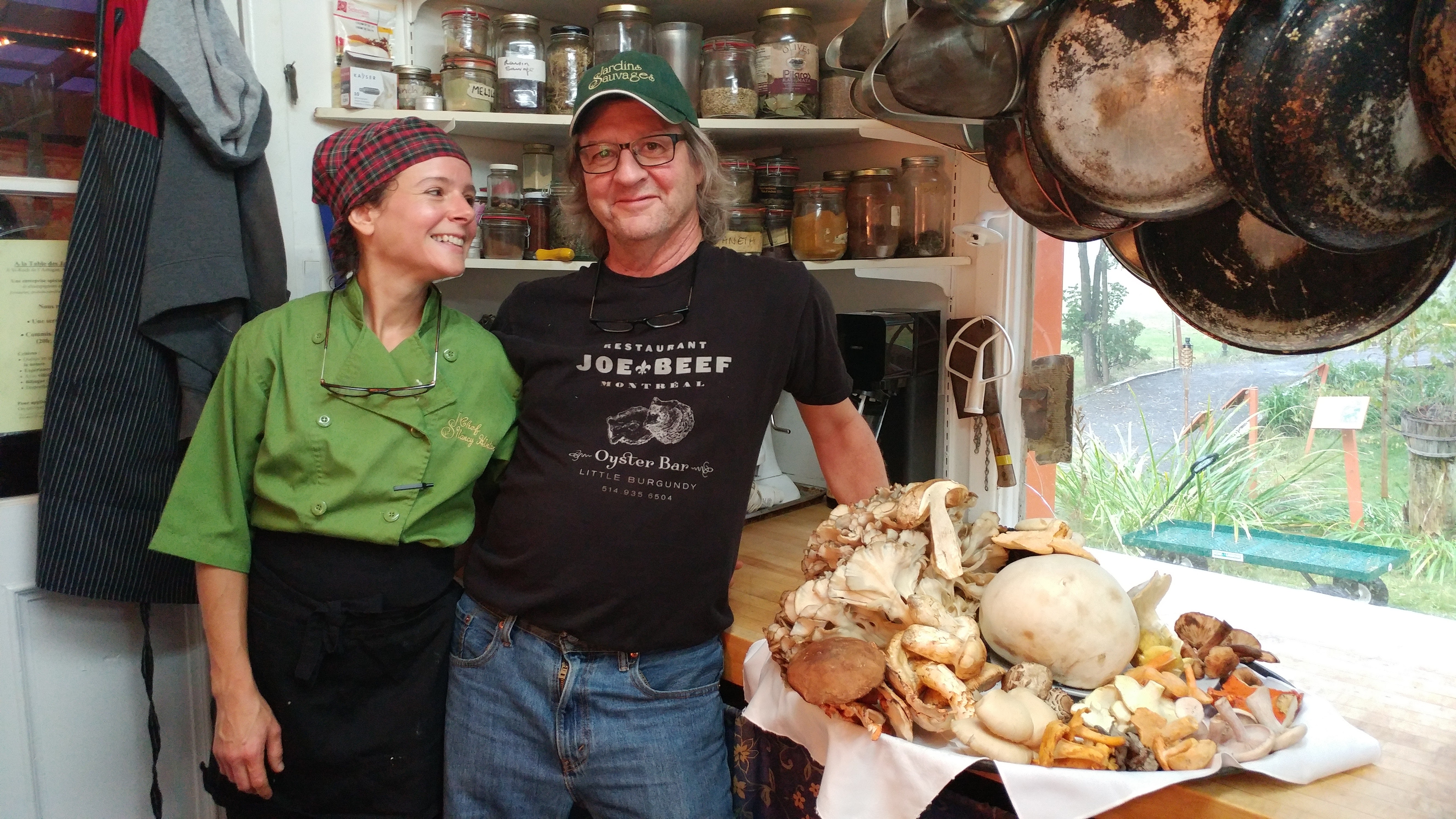
Wild Kombucha Sauvage
Kombucha Sauvage
Boire la nature
Wild Kombucha Drink Nature
Thérapie Gourmande et Rafraichissante de notre terroir forestier
Refreshing Plant Therapy, Local & Wild
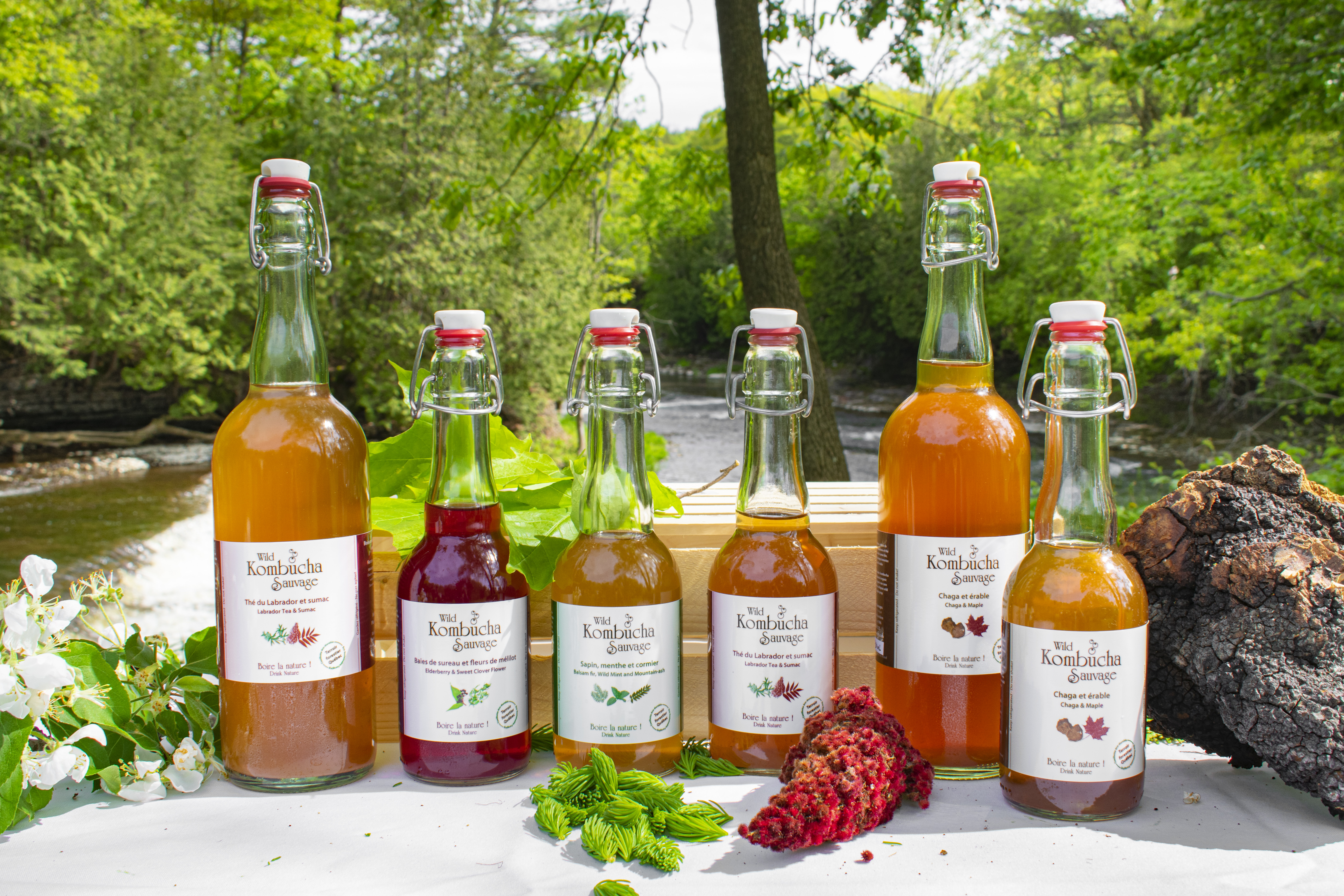
Thé du Labrador-Sumac ; Baies de sureau & Fleurs de mélilot
Sapin, Menthe et Cormier ; Chaga-Érable
+Saveurs saisonnières : Fraise-Foin d’odeur ; Pomme-chicoutai ;
Framboise noir-Anise ; Menthe- Bleuets sauvages..
Disponible à notre kiosque au Marché Jean Talon à l’unité (verre/375ml/750ml) ou sur commande à la caisse/keg
info@jardinssauvages.com ; 450-588-5125
http://jardinssauvages.com/index2.php?nom=Kombucha_Soda
Les Jardins Sauvages, Gastronomie Forestière depuis 1986
The rites of early spring and a tribute to my Dad
The sun is bright and spring is in the air! Finally.
Although food-wise, locally, it’s a ways away – with 2-3ft of snow still in the woods!
The sap is barely running, at least for artisanal bucket operations like ours that rely on natural flow. (Commercial outfits on big plantations siphon with tubes). However it will go fast with the double digit forecasts on the horizon..
Perfect timing, our annual Wild Maple Menu at Les Jardins Sauvages is underway this week end with a dressed up version of a sugar shack themed menu – Maple mushroom popcorn and soda, Cattail crepes with cretons and pickles, Pea soup with maple sap and maple smoked ham, wild beach peas, reduit poached egg with soba and sea lettuce, Wild boar and cassoulet, Maple scented Mushroom maple desserts etc.. Maple menu photos 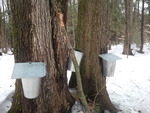
So, I’m prepping for that, while keeping the JeanTalon Market stall supplied with our soups, 'wild' Kombucha and our line of products/preserves. The slow season can be just as busy for me flying solo in the kitchen.. Yup, it’s also time to hire for the season! To plan and promote our spring menu and May events, workshops and etc. The first greens and fiddleheads kick of the season for us in a mad rush; we have to be ready. It is at the end of April that it typically all starts, then bang in May! when there is the widest variety of wild edibles around here from dandelion and crinkleroot leaf to spring beauty and live-forever for salad, nettle, live-forever, linden and day lily shoots etc, foraging heaven..
But the thing is.. I am having a hard time focusing, ‘feeling it’ and being pro-active – that normal excitement/anticipation for the change of seasons.. It feels far off. And I don’t feel much like writing about food, let alone updating my decrepid blog.
Because I just lost my Dad. https://groupegarneau.com/avis-deces/donald-hinton-4305/?fbclid=IwAR3uN77MQ58YDOwZhlPIAQQKzFYrKmXnLr5ltI4qvyb2_IHwPi_onF7a_Aw
Even if he was 85, had a full life, was at home with his wife until his stroke, with no chronic illness or medication beyond the likes of Tylenol. Even if he went peacefully with my mom and all of us ten kids around him living tender moments until the end. Even if I know that death is a part of life, and that we are blessed. Everyone has lost a close one or worse. I am grateful to have had him as a Dad, to have my sweet mom and all my wonderful brothers and sisters who are all chips off the old block.
Nonetheless, I’m sad. I worry about my Mom, and it’s just that Everything reminds me of him. The little wooden bowls and engraved cutting board in my kitchen. The food.. Peeling potatoes. He loved his ‘spuds’, everyway, but especially baked.
As I make my pea soup and cassoulet, I think of him, how he loved both, his beans. And everything Maple! Every year, he would splurge on maple products to our delight while my Mom scolded him for spending so much money. It was a seasonal treat!
The cloudberry in the pot is soo Dad as he was from Newfoundland and loved his ‘bakeapple’. So scrumptious with cheese. We Hintons eat a lot of cheese!
As I make a salad dressing, the anchovies recall childhood memories of him and his sardines, I would dramatically run out of the house pinching my nose and screaming about the stench. Once a week, we had to eat fish and I would kick up a fuss. Now, I appreciate all fish, especially fresh but canned too: anchovies in a Caesar dressing, Puttanesca (see my recipe* below) or Bagna Cauda.. (Recette en français) If top quality, even straight up on bread with butter -Imagine, Dad!
That said, my Dad was a delicate man with a delicate palate. When I was a young chef, I remember him finding my cooking over-seasoned, but then he came around. Accustomed to traditional ‘English’ fare, he found garlic and pepper spicy! But somehow hot mustard was fine. Later in life, he was fond of hot sauce too. He would taste a dish a bit at a time analytically before making up his mind or giving a compliment, but how he savoured his meals. Always the first to line up at the buffet. Seated at the table before anyone, ever eager for dinner, but not before grace!
It’s hard to not choke up at all the little Dadisms that lurk about, popping up surprisingly as I go about my business. I’m listening to CBC in the background of course like my Dad, and it seems that every show or tune has some connection. I check up on my mead and my cider, he would want a wee drop just to 'wet his whistle'. I figure the choucroute is ready, but I can't quite decide, so I stick it in the fridge wishing I could ask his opinion. Besides my soups, he particularly liked my pies and choucroute (sauercraut)… ‘My, that’s some good’, he would say.
As winter recedes, the darn raccoons are out, so it’s time to stop leaving the birdseed kicking around and using the outdoors as a freezer.. Such banal day to day things elicit a Dad flash. Amused with my raccoon stories from summer camp (I could not keep the devilish critters from my peanuts and snacks), he gave me a stuffed raccoon, which I found to be a silly gift as a teenager (thinking I was too cool for tou-tous.) But I slept with my Raccoon into adulthood, nibbling on his whiskers when I couldn’t sleep. I still have my Raccoon.
My Dad was so special, you see. He was my prince, my hero. A great Dad and model human bean (who appreciated a good pun). He was so fun, so cool, so wise. Deep. Sweet. Just a good egg.
A man of mind, heart and soul; So ‘up there’ with the gods, yet so ‘down here’ with us.
A man of words and big ideas, between his literature, poetry, philosophy and religion.
But who also appreciated the small things in life and simple pleasures – good ‘grub’, a glass of red wine, cracking nuts, star-gazing, or a picnic on the Plains with some sightseeing and rough and tumble play. He was a lover of nature, of art and history; He enjoyed carving wood and working with his hands, as well as fixing things around the house.
And music! From the hymns, Scottish melodies and Newfoundland tunes he played on the piano to strumming with Paul and the boys at family gatherings, always a ukulele or guitar in hand. 

He was so disciplined and serious, yet so playful. My first and fondest memories of him revolve around fun. He would read us stories on his lap with all the character voices and movement, he was the best storyteller. And the airplane rides, wow! Or even rides in the snowshovel, or his car, which he called ‘she’. On Sunday afternoons, he would take us for ‘randies’ (car rides through the countryside to pick up apples or corn.) ‘Grocery day’ and ‘Pizza night, traditions like his Christmas crackers’ - he made every little thing so exciting. When I said ‘higher, faster’ on the swing, he was all for it, while Mom had a heart attack.
He was my chauffeur, dropping me off at school with his 'Work hard, have fun!' or 'Be good!'
I was his alpha, and so we fought too, as I grew into a mischievous kid and teenager who challenged him.. He contained my fight and taught me nuance and critical thinking throughout our debates, instilling values like honesty with his disapproval of my profiting from the fact that I looked young to pay less on the city bus or at the movies, say.. He earnestly tried to teach me patience.
He wrote us humorous poems on our birthdays. Besides the words of wisdom and quotes he flung about, He also said the most amusing things: Holy Mackerel! Winkle dinkle donkle! His swearwords more like a poetic exclamation: ‘Blessed Fortune, Night and Day!’
A real gentleman, a stickler for manners, proper grammar and rules, all that stuff you find tedious as a child that you are thankful for later. Yet, a real boy with his love of planes, trains and automobiles, puzzles and mystery stories. Ready for anything, his pockets were full of trinkets and tools, paper clips and rubber bands. A real charmer, he had a special twinkle in his eye. Deep down, he was a romantic. He loved my mom fiercely and completely until the end. His last wish I know was to make her happy. He often told me to be kind and take care of my man.
 A family photo from their 50th anniversay
A family photo from their 50th anniversay You'd think it was Richard & Liz, but no, my young parents
You'd think it was Richard & Liz, but no, my young parents
‘Aimez vous les uns et les autres’. Felix Leclerc
His love and quest for meaning was inclusive not exclusive, which is what made him a tremendous example for conventional religion in the modern world when it frequently gets a bad rap as an answer to our spiritual needs. Because he did it right; he never forced his beliefs on any one. It seemed to be all about interpretation, an exchange of ideas and honing in on the essential. About faith, community, being a better person for the good of all. He spoke of other religions in parallel, and listened to our musings on it all. He once suggested that I was in effect praying to God in expressing myself wholly through my life and vocation, being true and working hard, with mindfulness and meaning, by striving to be a good person. It didn't seem to bother him much that I didn’t go to church or do bible talk. He was a missionary in the sense that he shared moral values, showed by example and that he helped the less fortunate of all stripes.
He was a discrete man of tradition, yet curious and open to the world. It’s amazing how he evolved throughout our lives (no doubt, with us 10 kids as catalysts, but still). In so many ways.. It was heartening and inspiring to see him navigate the changing times. His emails were adorably adorned with emoticons. He loved his meat and potatoes, but his favourite restaurant of late was Les Saveurs de l'Inde on Maguire (Indian). He was acquiring a taste for Kombucha too! And how he softened up with age, hugging us to death.
A quiet man of faith, a teacher and scholar, a Newfoundlander and francophile, a loving and playful father of ten and grampy to 14, all that and so much more.. My Davinci-esque Dad. And my favourite customer at the restaurant, he loved coming to la table champêtre, wine bag in tow. He claimed he didn’t care much for mushrooms, but he devoured our wild mushroom menu with 35 kinds. Ha!
As I write this, I can’t help but wonder about my punctuation, if I have enough paragraphs… Relentless about correcting our English in a Quebec city sea of French and Franglais, he once chided that I was one big run-on sentence; ‘strike the enter key, Lass’. My sister Louise is here to correct my English, now.
Back to the grind at Les Jardins Sauvages. He would probably tell me to settle down and get on with it.
I always said that in the dance and race with nature that is our life, how each year, the passage of seasons was thrilling, each time around different, unique and full of surprises - Thanks to the weather, Mother Nature, the Gods that be and the 'je ne sais quoi'. So true. Who knows if it will be a late spring, when the trout lily, or the first morels will show up..
One thing is for sure, now Maple season and early spring will not only be about sugaring off, snow crab, Easter eggs and planning the green season, but about Dad’s passing and remembering him. Which is fine. Like my Dad, we like our rituals, more meaning in everything with the years, and life is richer for it. With his legacy woven throughout the fabric of our lives, in the heartbeats of my beautiful siblings, nieces and nephews. So much to toast to, right!
‘C’est grand la mort, c’est plein de vie dedans’ Felix Leclerc
 At the funeral home, us kids, Mom and Uncle Maurie
At the funeral home, us kids, Mom and Uncle Maurie
Here’s to the season ahead, and to my Dad, Rev. Donald Macintosh Hinton, Cheers!
Our goodbye words to him at the hospital and funeral were from his beloved Shakespeare, ‘Good night sweet Prince, and flights of angels sing thee to thy rest. ‘
Since this is supposed to be a food blog, I will finish with a food story and some cooking tips (as well as a few links to real spring posts about wild edibles below**), after
my entertaining ‘Dad cooks fennel tale’..
One day later in life after the kids had moved out and my mom was starting to do her own thing once and a while or maybe delayed who knows; anyhow my dad saw that it was 5pm and there was nothing happening on the stove, so he made himself dinner ('supper' to him). He got to enjoying cooking on occasion. He would write me about his culinary exploits. He once saw an intriguing looking vegetable at the store and cooked it up, ‘my, ‘twas deeelicious indeed’ (he hadn't a clue what the white bulb that resembled celery but with the aroma of licorice was?!). He bought it again and repeated the exercise only to find it tough and inedible. So, I asked him what he had done. ‘Well, I put it in the oven!’, he replied. ‘Ok Dad, did you add oil, some water or cover it in foil or what?’ ‘No, I just put it in the oven’. ‘But Dad, you can’t just stick a big head of fennel in the oven like that. (like a potato?!) You must have gotten lucky the first time, perhaps because it was a small, young, naturally water gorged fresh specimen, and then you probably used a dish that had sides to provide some steam, or your oven wasn’t too hot or..' Oh. OMG did I find that hilarious, so cute. And then followed up by giving him instructions for better, more consistent results in the future:
Fennel tips:
- Cut in wedges and pan-fry in olive oil/butter to color, add garlic, deglaze with white wine and chicken broth, season with salt, pepper, thyme or herbs of choice and optional tomato, and finish in oven covered until tender (30min+)
- Cut in wedges and pan roast in oven coated in oil and herbs or on BBQ, finishing on lower heat (or covered) until tender
- Make slaw: Shave thinly and marinate for 30+min with salt, pepper and a sprinkle of cider vinegar/white wine vinegar or lemon. Add a good oil and serve in salad or as a side dish for fish, poultry, pork, meat or in a poke bowl or pasta with parmesan style cheese..
*My Puttanesca Recipe - making 'stinky' fish yummy
(I like to add a wild green like daisy, but any tender green like arugula or baby spinach could be used, or not):
Pasta Puttanesca à la Marguerite
Chef Nancy Hinton, Les Jardins Sauvages
4 portions
150g spaghettini ou pâtes de choix
30ml (2 cu.à soupe) huile d’olive
30ml (2 c.a.s.) échalotes françaises émincés (1)
15ml(1 c.a.s.) d’ail émincé (2-3 gousses)
20ml (1 grosse c.a.s.) anchois hachés (4-5)
45ml (3 c.a.s.) câpres (et/ou boutons de marguerite marinés)
5ml (1 c.a.t.) ch. origan et basilic séchés
2ml (½ c.a.t.) flocons piment fort
500ml (2 t) tomates en des (2 tomates)
15ml (1 c.a.s.) beurre
125ml (1/2 t) parmesan râpé
50g (3t) feuilles de marguerite
2ml (1/2 c.a.t.)+ poivre noir au goût
1ml (1/4 c.a.t)+ sel au goût
Méthode:
Cuire les pates dans l’eau bouillante jusqu’à ‘aldente’ environ 8min ou 1min de moins que les instructions sur la boite. Égoutter en gardant une partie de l’eau de cuisson. Mettre de coté.
Dans le même chaudron, faire suer les échalotes dans l’huile avec ail, anchois, câpres et épices 1-2 min.. Rajouter les tomates.
Retourner les pates au chaudron avec 1/2t d’eau de cuisson et le beurre et brasser. Fermer le feu. Ajouter le parmesan et les feuilles de marguerite et brasser. Rajouter un peu plus d’eau de cuisson si nécessaire/si sec. Assaisonnez au gout et servir. Garnir de quelques feuilles fraiches.
Some relevant posts from the archives for my Dad
An ode to my Dad’s Newfoundland, my Hard Tack piece http://soupnancy.squarespace.com/blog-journalessays/2015/5/4/connecting-with-my-newfie-roots-via-hard-tack.html
From 2008, A reflection on ‘God’ that I remember my Dad appreciating if only in that I was contemplating these things. And for the record, I certainly don't believe that praying is bogus, especially now.. http://soupnancy.squarespace.com/blog-journalessays/2008/3/23/for-easter-eggs-and-god.html
**A few real Spring posts (about food/ wild edibles and not death)**
Late spring edibles and foraging guidelines http://soupnancy.squarespace.com/blog-journalessays/2017/6/15/spring-meets-summer-foraging-issues-and-guidelines.html
Spring pickings http://soupnancy.squarespace.com/blog-journalessays/2015/5/5/officially-spring-2015.html
Jardins Sauvages News and Schedule for 2018: Valentine's menu, Pop-ups, Workshops and more..
Bonjour, (an English message will follow..)
Notre menu St-Valentin, ‘Sauvage et Aphrodisiaque’ est disponible samedi le 10 et 17 février à 19h; sur réservation seulement; vous pouvez venir en couple ou en groupe.
C’est un menu dégustation cinq services (entrée, soupe, salade composée, plat et dessert); Apportez votre vin, bière ou porto.
120$ par personne tout inclus. 150$ pour La Totale, Menu Deluxe (menu 7 services avec foie gras et fromage)*
120$ (90.75+ 15% pb 13.61 + 5.22TPS+ 10.41TVQ); 150$ (113.45 + 15% pb 17.02 + 6.52TPS +13.02 TVQ)
Payable en argent comptant ou par chèque le soir même, ou par carte de crédit au téléphone lors de la réservation.
Vous pouvez consulter le menu ici : http://www.jardinssauvages.com/?nom=menus&m=mval18
Pour réserver, SVP appelez au 450-588-5125.
Je vous invite à visiter notre site pour l’horaire de nos activités pour l’année 2018, incluant le calendrier de dates pour les menus ‘pop-ups’ saisonnier (quand vous pouvez venir 2 ou 4 sans accompagner un groupe) et notre fameux menu champignon..) En dehors de ces dates, le resto ouvrira que pour des groupes de 6 et plus. Le menu thématique suivra les saisons comme toujours avec plantes et champignons sauvages à la une, gibier et produits du terroir, toujours affiché sur le site à l’avance.
On va continuer la visite libre le dimanche après-midi cet été.
*Le prix du menu est maintenant ajusté ‘tout compris’ (incluant taxes et service), nous n’avons pas monté nos prix! Ça fait longtemps que nous voulions adopter cette formule mais nous hésitions à la faire parce que ça paraît plus cher et qu’on paie tous plus de taxes (sur ce qui aurait été pourboire). Par contre, c’est juste plus logique et plus simple pour tous. C'est aussi important par principe (impliquant le partage des pourboires/équité salariale). Nos serveurs sont payés un salaire régulier comme tous les employées, selon compétence et expérience inclus dans le prix.
Ateliers et Stages au printemps
Autre nouveauté, ce printemps, il y aura une série d’ateliers le dimanche après-midi, ouvert au publique sur les plantes sauvages et champignons sauvages de la cueillette à la cuisine (sur réservation avec dépôt). http://www.jardinssauvages.com/?nom=une
Et des jours de stage les lundi matins en mai (ou les gens peuvent s’inscrire pour apprendre en travaillant, cueillir avec/pour François (places limitées).. Liens
Avez vous gouté à nos soupes et plats cuisinés ‘prêt à manger’?
Notre kiosque au marché Jean Talon est ouvert 7 jours : où nous avons notre gamme de légumes et champignons sauvages du Québec congelés, plats cuisinés et conserves, notre grande variété de produits transformés ‘local et sauvage’ – vinaigrettes, moutardes, épices, aromates et thés.. Nouveautés : confiture aux fraises des champs, ketchup chicoutai, notre menu de tisanes et notre soda sumac-érable (sans sucre rajouté).. http://www.jardinssauvages.com/?nom=produits
L’Actualité
Un petite article dans la revue l’Actualité qui nous mentionne : http://lactualite.com/art-de-vivre/2017/12/08/la-foret-dans-lassiette/
Au plaisir,
François et Nancy
Vous pouvez aimer notre page facebook aussi pour avoir les nouvelles et menus à jour.
Twitter/Instagram : @soupnancy #LesJardinsSauvages
Merci
Greetings,
Our Valentine’s Day Menu is Wild & Aphrodisiac and available two Saturday nights at 7pm the 10th and 17th of February,
The menu: http://www.jardinssauvages.com/?nom=menue&res=m&m=val18en
It’s a five course meal (entrée, soup, composed salad, main, dessert) for 120$ all included* or the Delux Menu 150$* for 7 courses with foie gras and cheese.
(120$ (90.75+ 15% tp 13.61 + 5.22TPS+ 10.41TVQ); 150$ (113.45 + 15% tp 17.02 + 6.52TPS +13.02 TVQ))
Bring your own wine, beer or porto.
On reservation only.
Payment is by cash or cheque on spot, or by credit card by phone in advance/upon reserving.
We are 45 minutes NE of Montreal on Route 341 (15 minutes from the 40). For more information, you can visit the website www.jardinssauvages.com or call the restaurant.
To reserve, please telephone 450-588-5125.
*You will notice that the menu price is now adjusted to be ‘all included’ (tax and service), so no tipping necessary and no, we haven’t upped our price. This formula makes more sense all-round, being more logical and simple for everyone, not to mention on principle (implying tip-sharing for more equitable pay structure). The waiters are paid a salary based on their job description, competence and experience, like all employees, that is included in the ticket price. We have long wanted to adopt this but held back due to ‘sticker shock’ and fact that more of the bill goes to taxes (on what would have been tip), and this remains frustrating/a challenge. We hope our customers will understand and appreciate the change, figuring that most people were tipping more than this 15% before tax.
Our schedule for the season is up on the home page of the website, starting with the maple menu in April and including all dates for our seasonal pop-up events, as well as the famous fall mushroom event.. Beyond these set calendar dates when you can come 2 or 4 people without a group, the restaurant will only open for groups of 6 or more.
We will continue our open visit on Sunday afternoons this summer.
This spring, there will be a series of workshops on foraging and cooking wild foods on Sunday afternoons (on reservation with deposit).
As well as the possibility of ‘stage’ Mondays in May where people can sign up to pick with François, learn while working.. http://www.jardinssauvages.com/?nom=une
Have you tasted our soups and ready-to-eat cooked dishes?
We invite you to visit our stall Jean Talon Market open seven days: On offer alongside a few local cultivars are our wild and local mushrooms and vegetables that are frozen, vacuum packed and ready to eat as well as our soups and sauces, cooked dishes and long line of preserves. Beyond dried mushrooms and teas, herbs and spices, mustards vinaigrettes and pickles.. Novelties: wild strawberry jam, cloudberry ketchup, sumac maple soda (with no added sugar).. http://www.jardinssauvages.com/?nom=produits
L’Actualité magazine – An article in the current L’Actualité on wild herbs that features us. http://lactualite.com/art-de-vivre/2017/12/08/la-foret-dans-lassiette/
Enjoy the winter!
Hope to see you soon,
Nancy and François
La Table des Jardins Sauvages
17 Chemin Martin, St.Roch de L’Achigan
450-588-5125
You can always like our Facebook page to follow our news and up to date menus.
Twitter/Instagram @soupnancy #LesJardinsSauvages
Thank you.
Fall Mushrooms and Puffballs
Finally, the local wild mushrooms are out in full force!
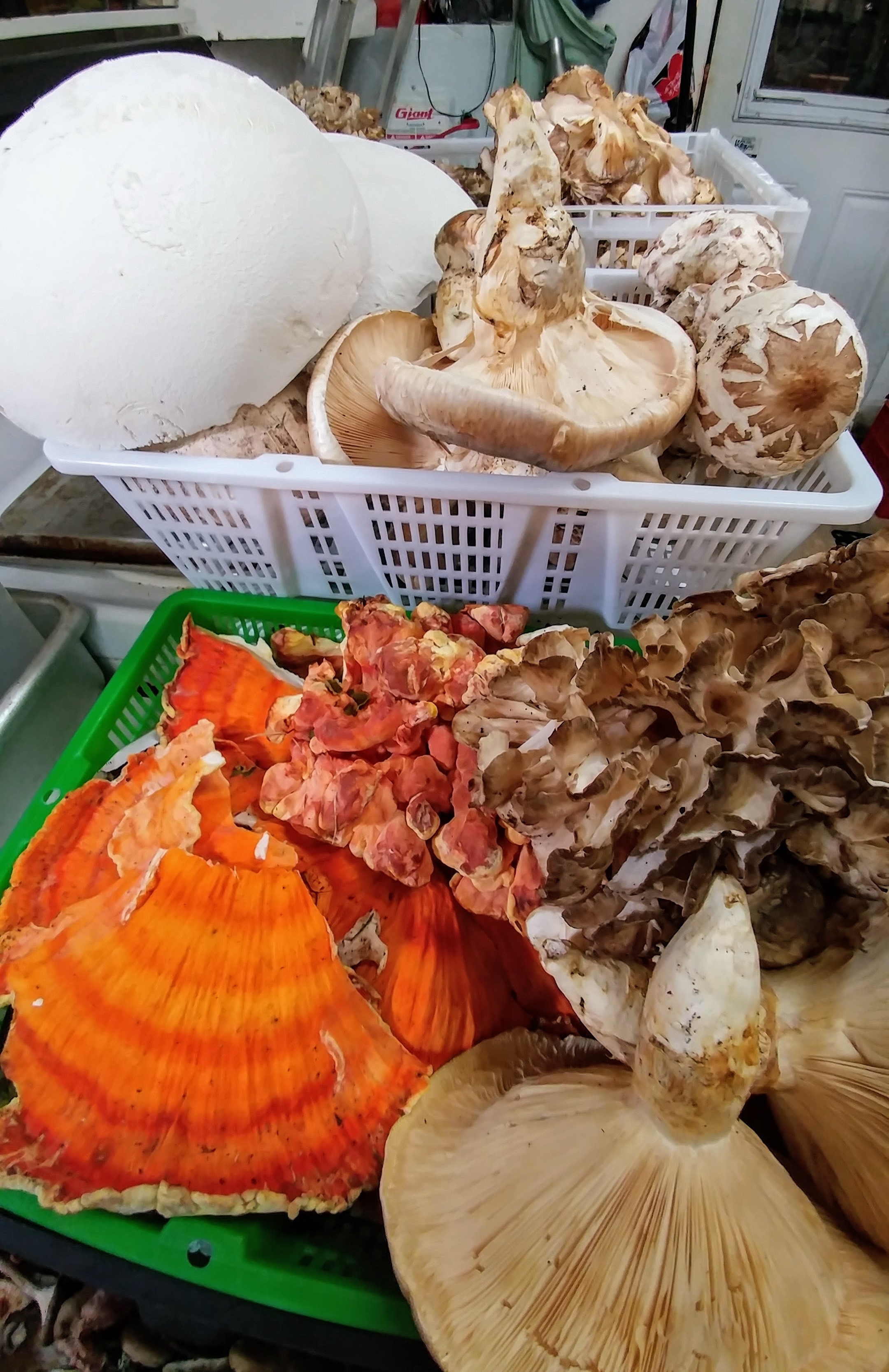 An autumn day harvest
An autumn day harvest 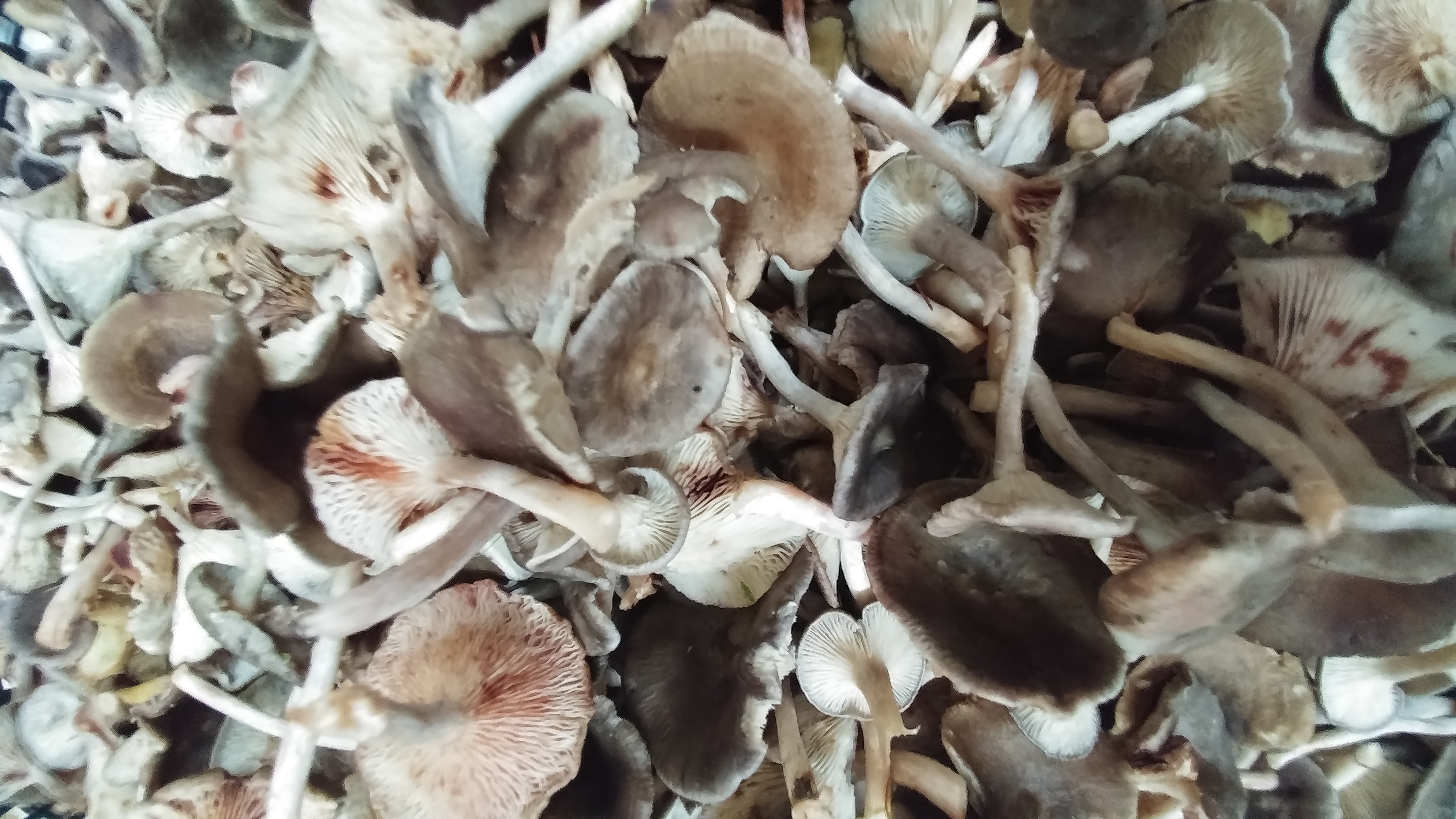 graylings - a rare treat in the chanterelle family
graylings - a rare treat in the chanterelle family
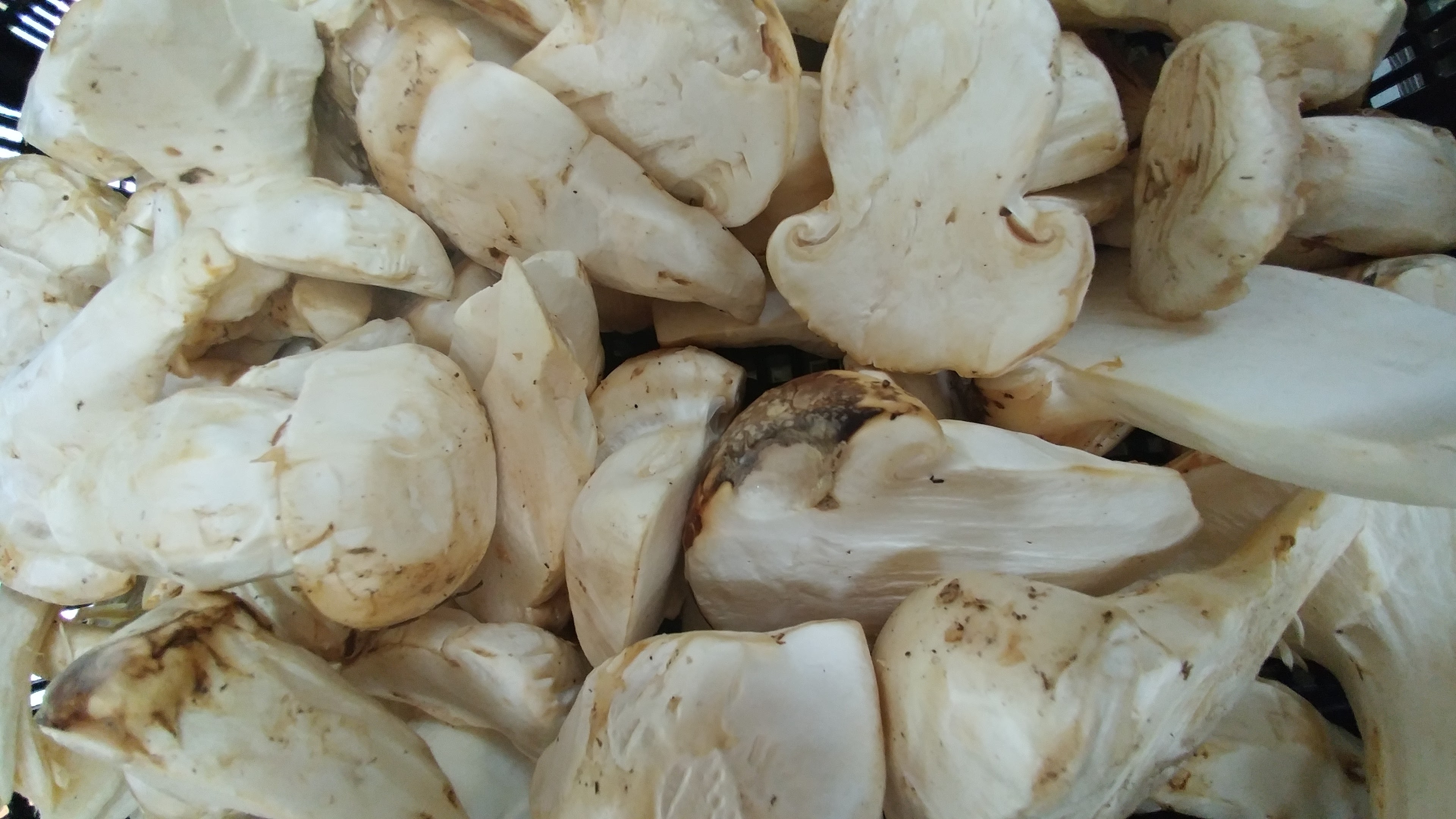 Armillaire pesant; Swollen Stalked Cat
Armillaire pesant; Swollen Stalked Cat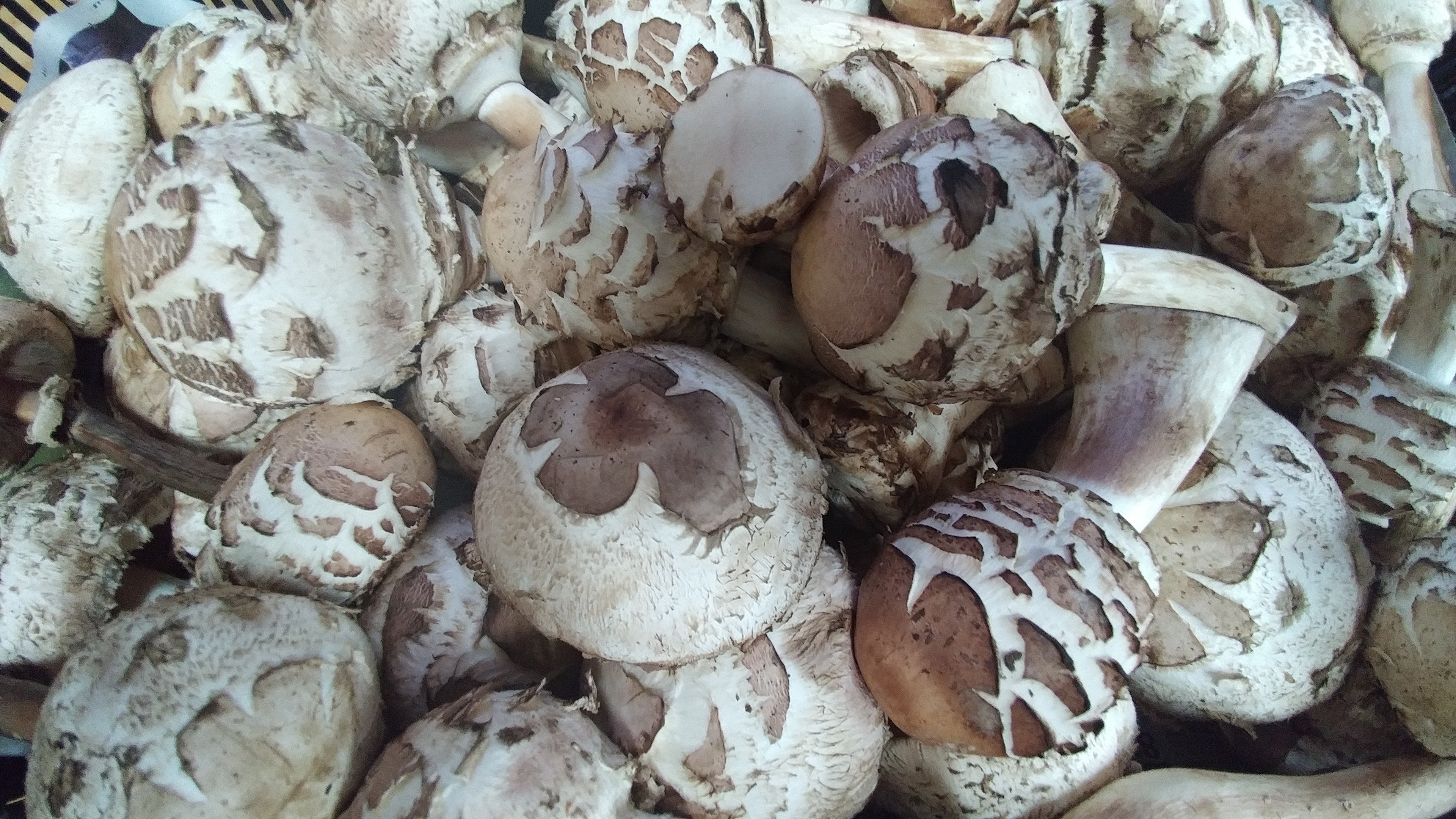 Parasol
Parasol
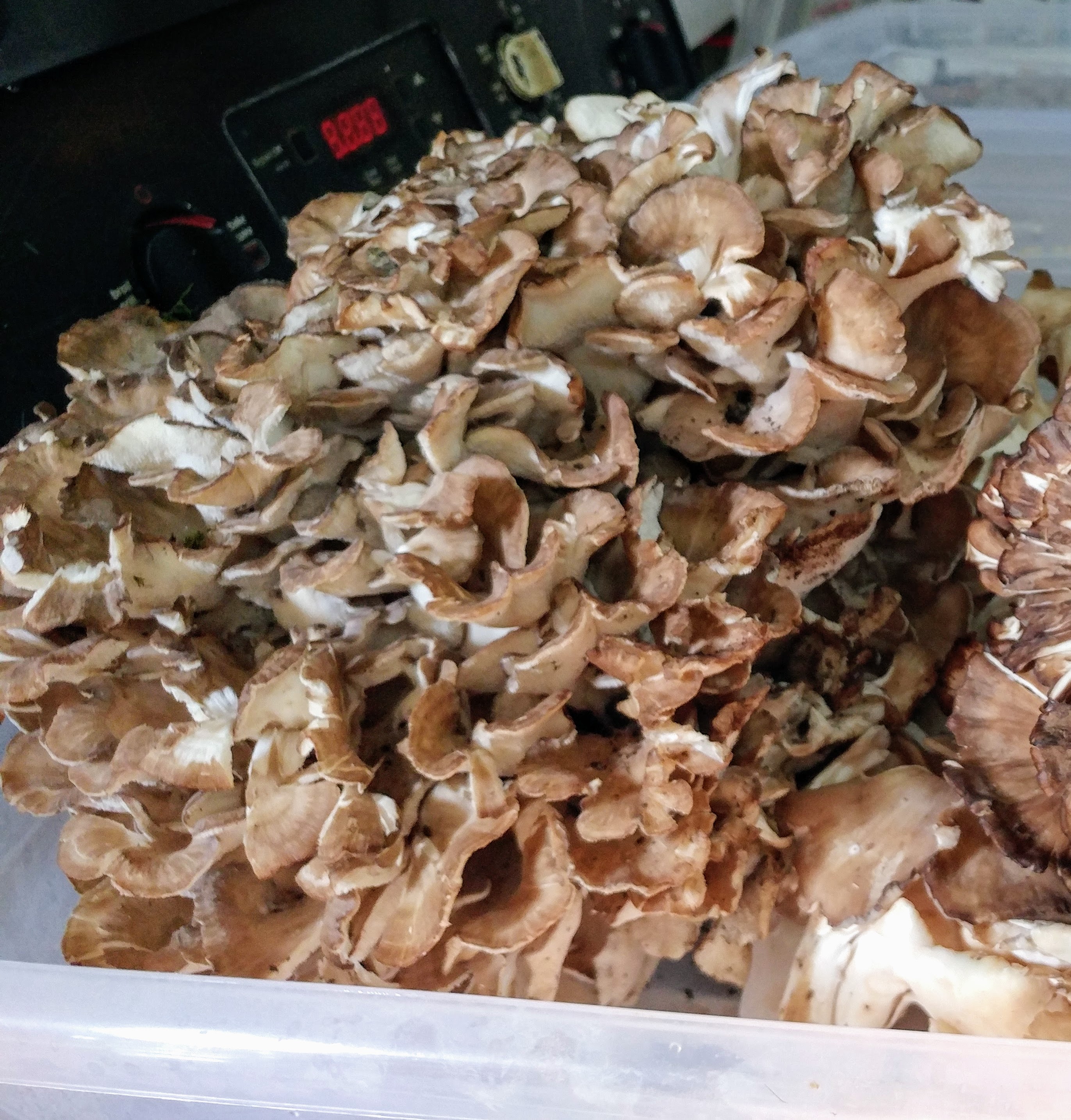 Hen of the Woods
Hen of the Woods
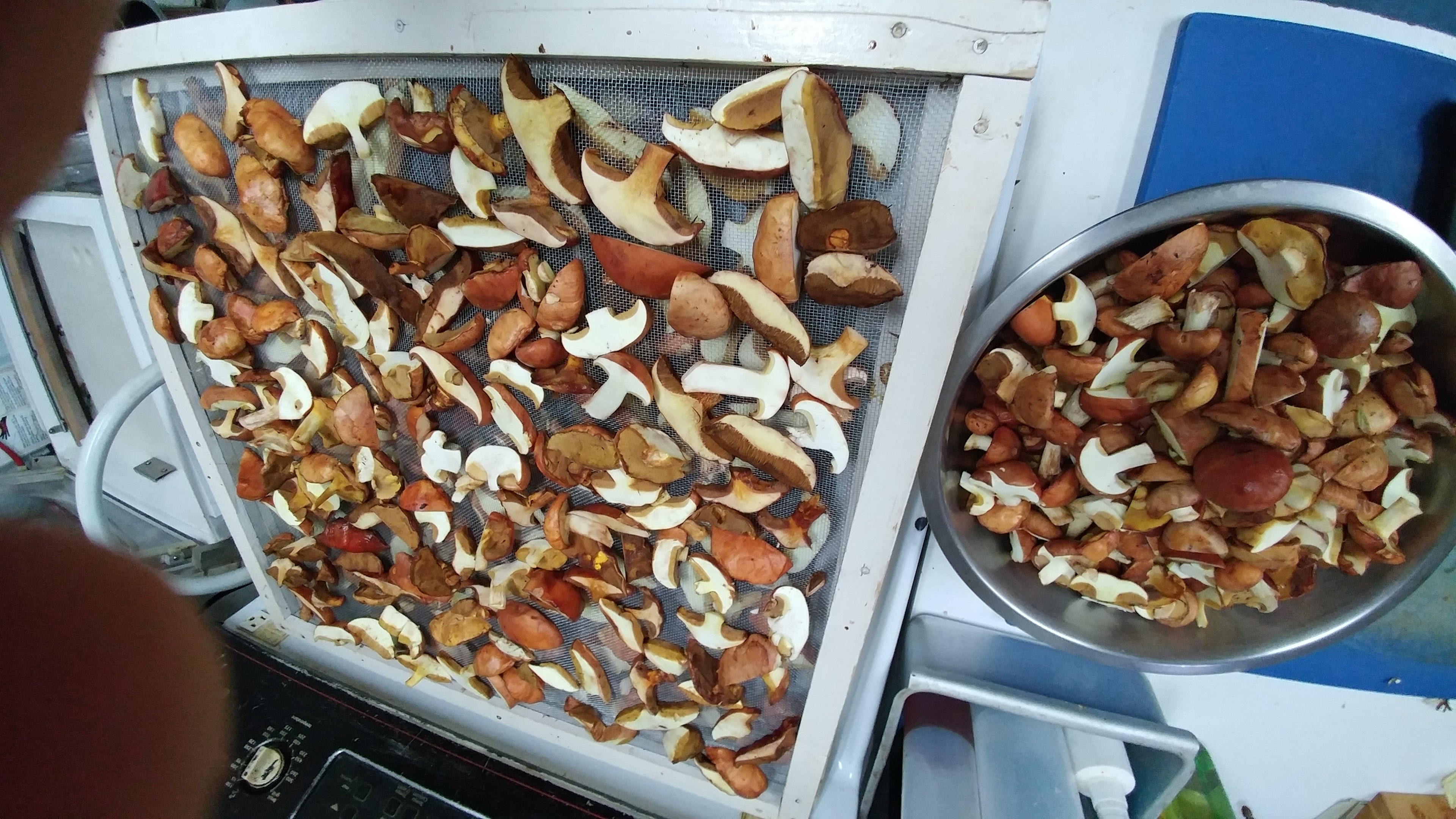 Slippery Jack - a yellow bolete that is especially good dehydrated.
Slippery Jack - a yellow bolete that is especially good dehydrated.
 Poule des bois/Hen of the Woods haul
Poule des bois/Hen of the Woods haul
Besides the Hen of the Woods (our favourite), the most spectacular is always the giant puffball, in season now.
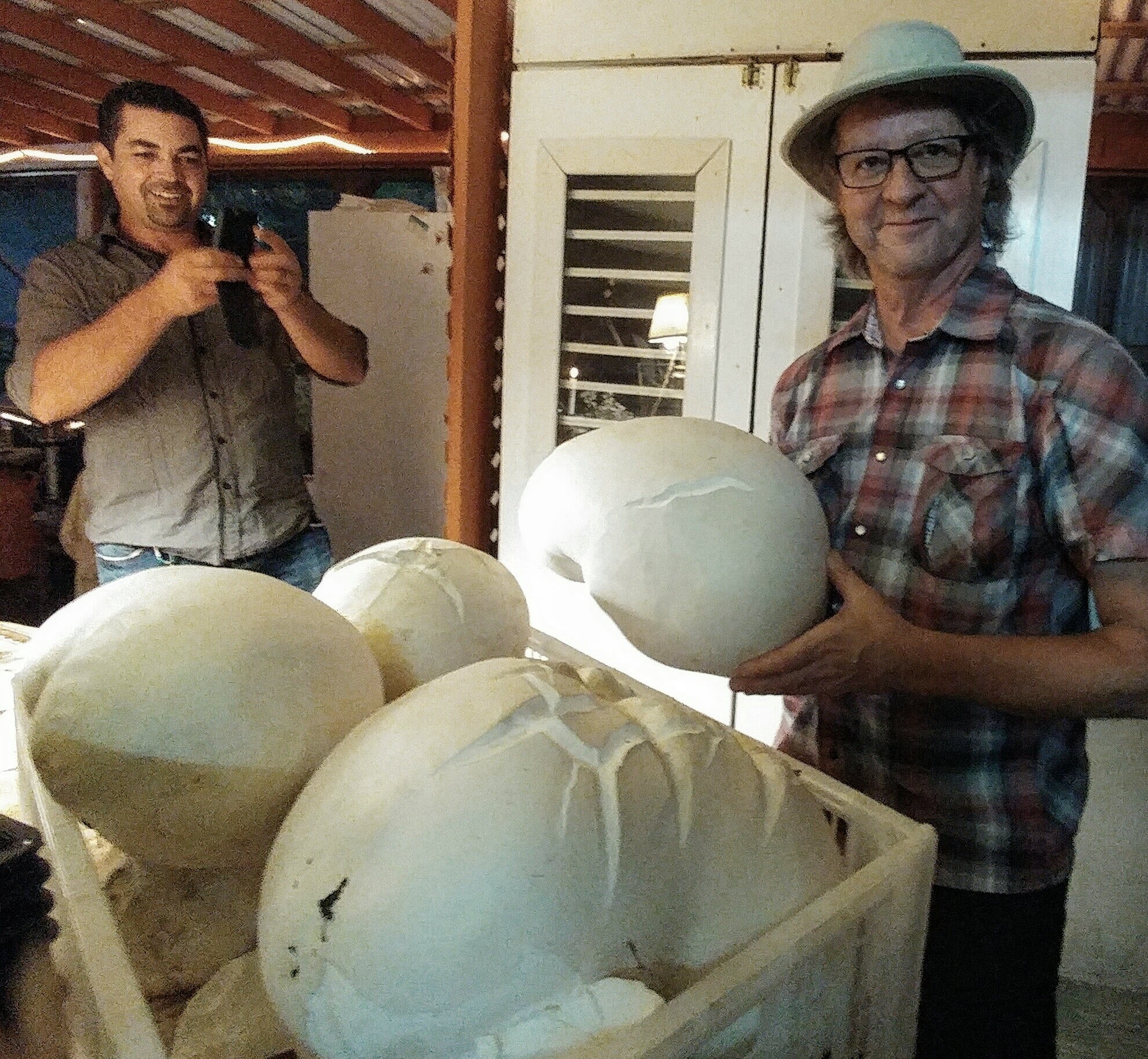
I have had multiple inquiries on how to cook it.
So, here’s the deal. It is easy enough to identify; if it is still firm and pristine white throughout when you slice it, it is good to eat. They go yellow and soft (not to mention) pungent smelling as they age past their prime.
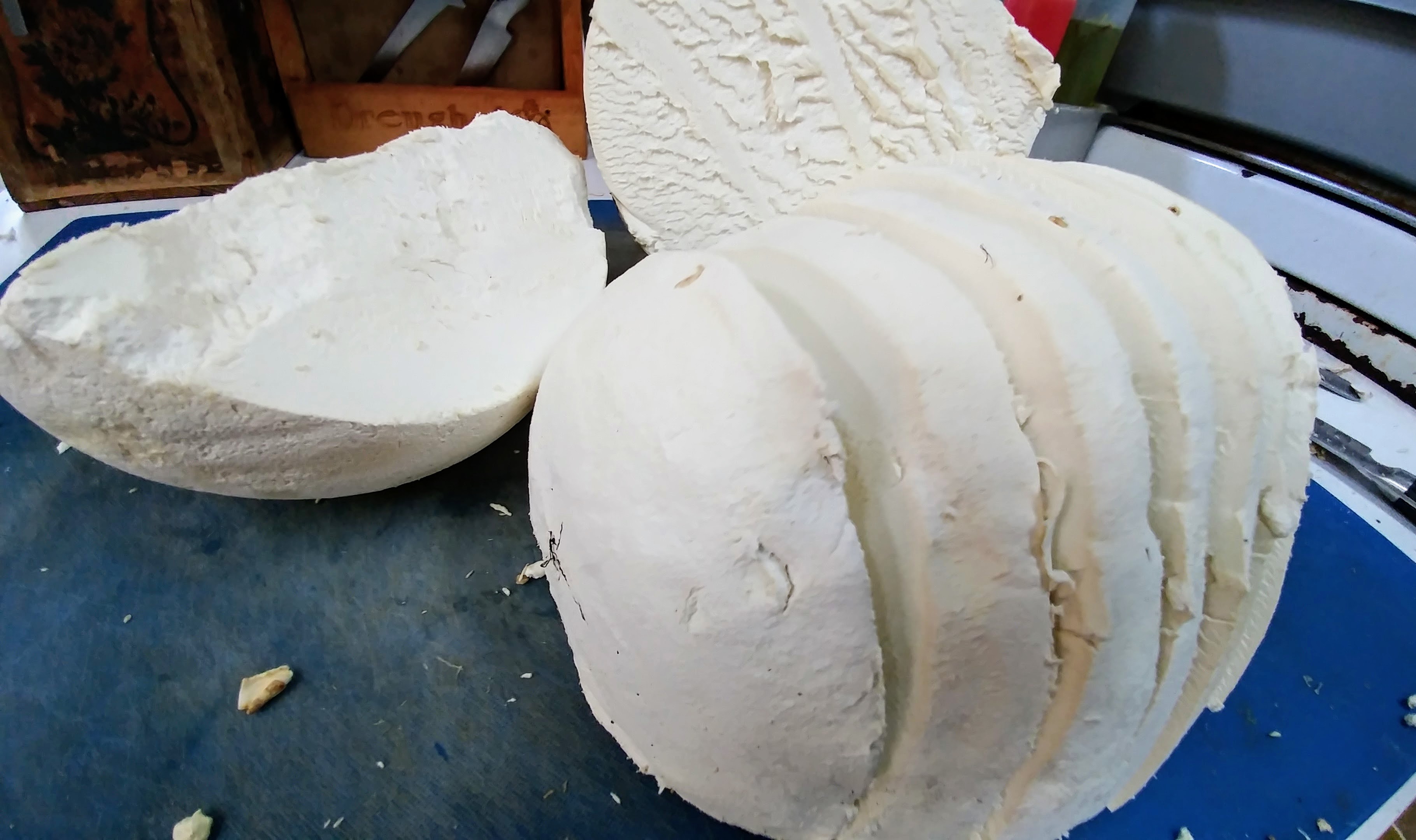
The best way to cook a giant puffball:
Peel and slice. Pan-fry or bake on parchment with a good amount of fat (I start with oil and finish with butter), flipping half way through. You want to gently brown it, on medium heat as opposed to high.
With its sponge-like texture, I find that it cooks up quite like eggplant. Best eaten straight out of the pan, it gets soft and loses volume as it sits, although it will taste good no matter.
It has a strong (ish) mushroom flavour, so I like to layer it with other flavours like tomato, cheese or root vegetables in a lasagne or gratin for example. It makes good soup too. You could dice it up and make spaghetti sauce, the options are endless.
It's not all about the puffball, especially with Matsutake season starting. I'm busy putting up the fall boletes for our dried mixes and butter etc, as well as yellowfoot chanterelles and hedgehogs, hundreds of pounds a week. We are still waiting on the autumn oysters and another half dozen varieties to complete my upcoming annual mushroom fest menu.. http://soupnancy.squarespace.com/wild-mushroom-event-october/
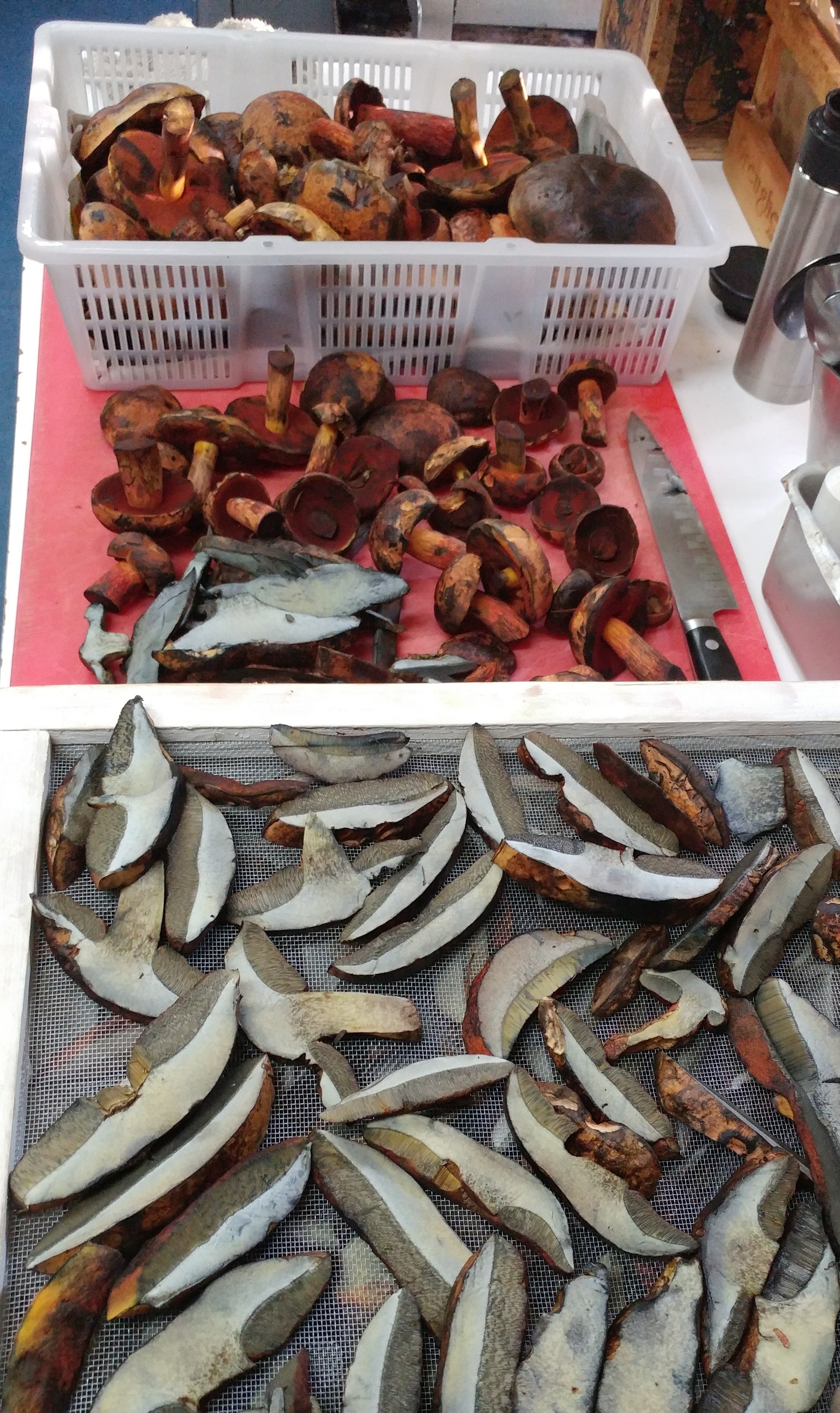
Red Mouthed Bolete, a dessert fave
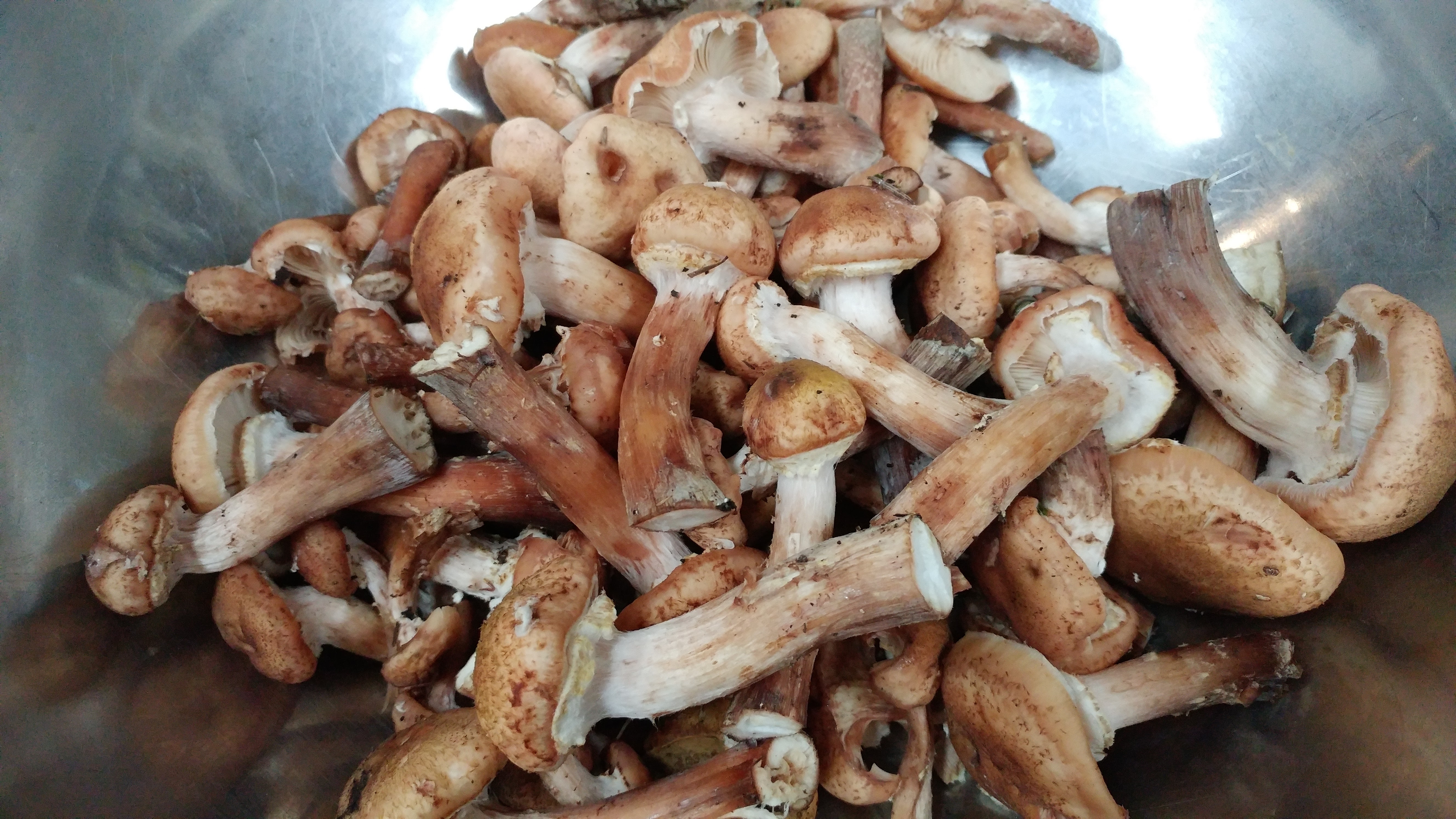 Armillaires Couleur de Miel; Wild Honey Mushroom
Armillaires Couleur de Miel; Wild Honey Mushroom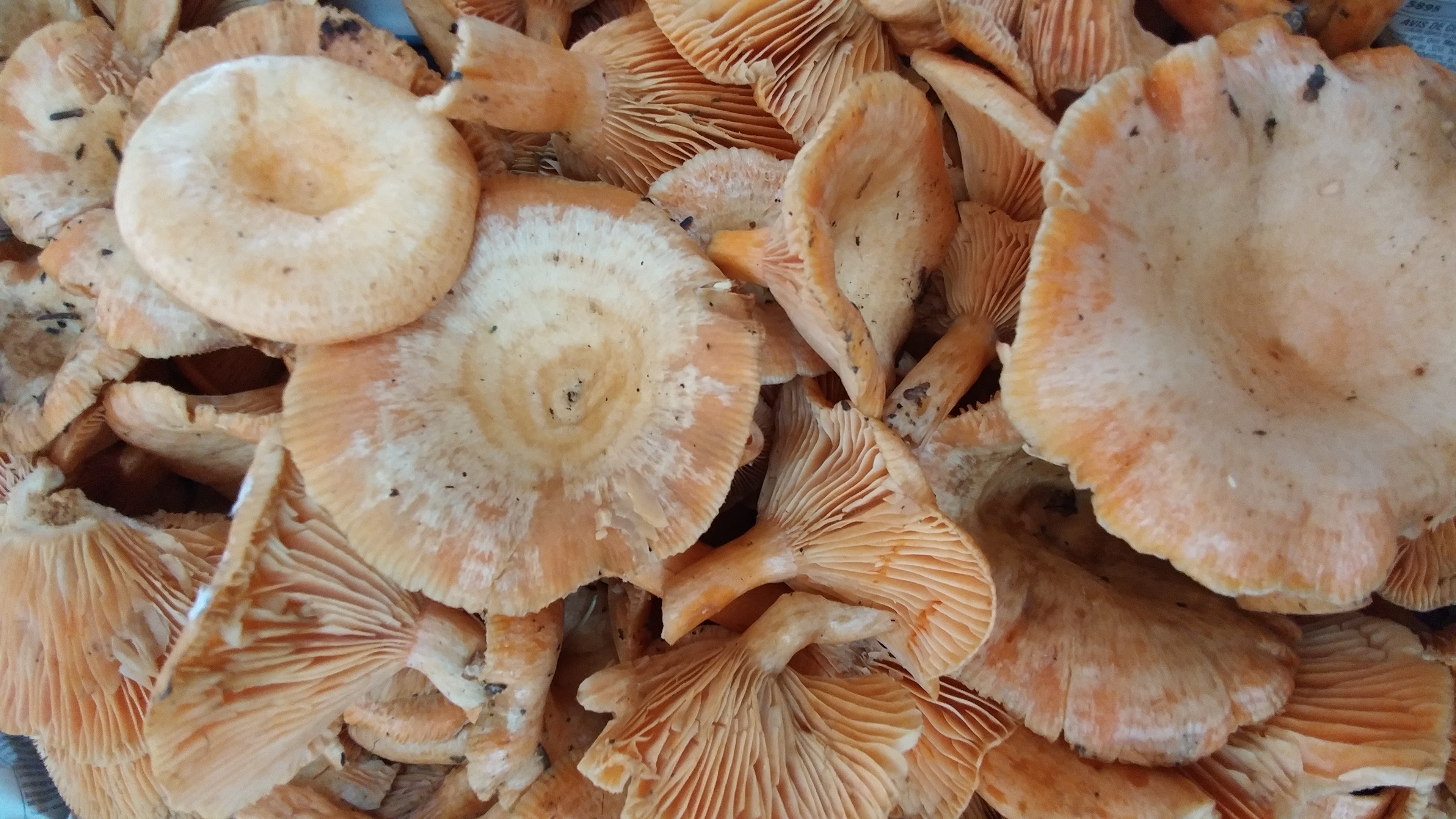 Lactaires Delicieux
Lactaires Delicieux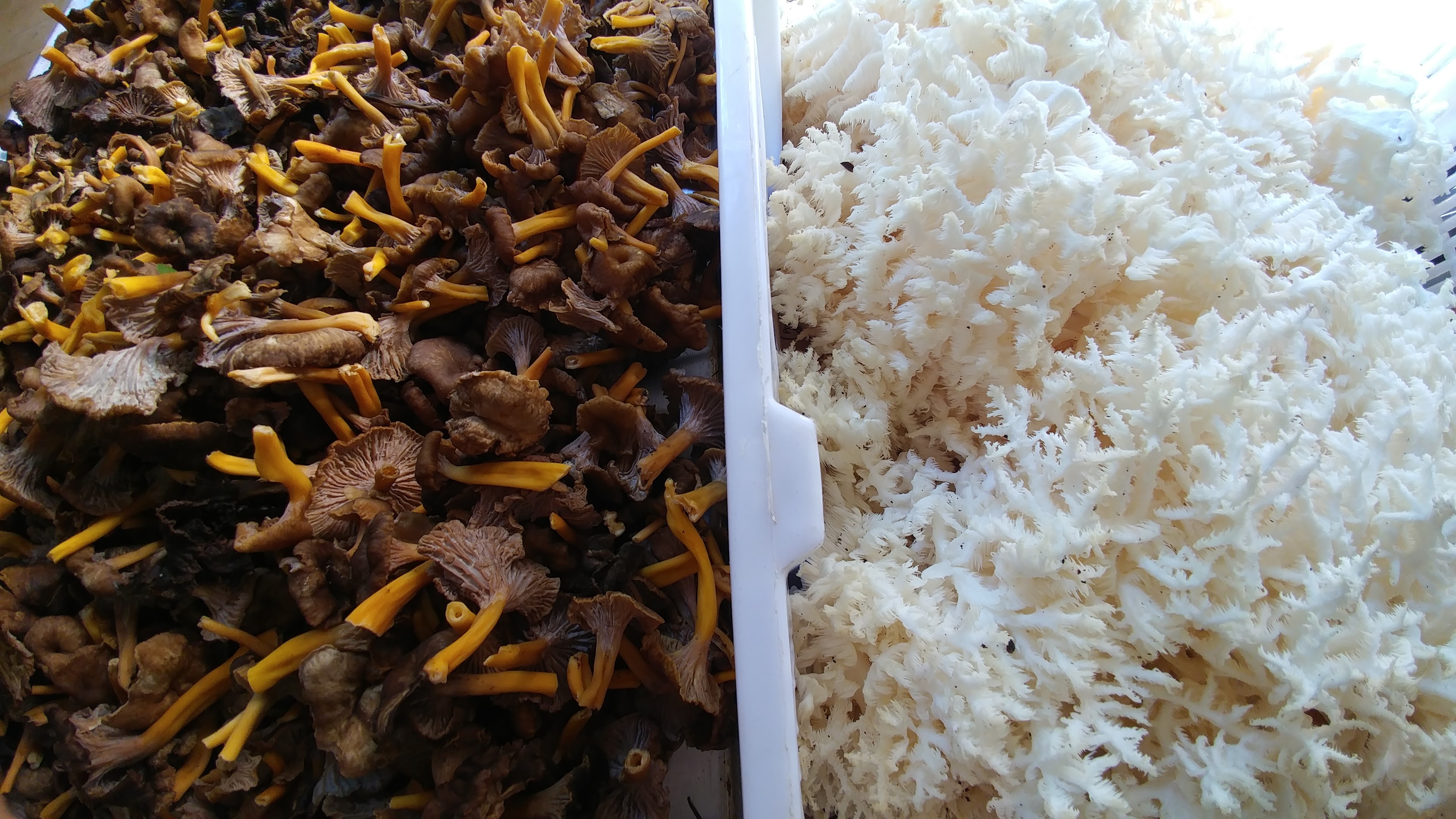 Comb tooth and Yellowfoot Chanterelles
Comb tooth and Yellowfoot Chanterelles
François' tomatoes, and a few summer recipes
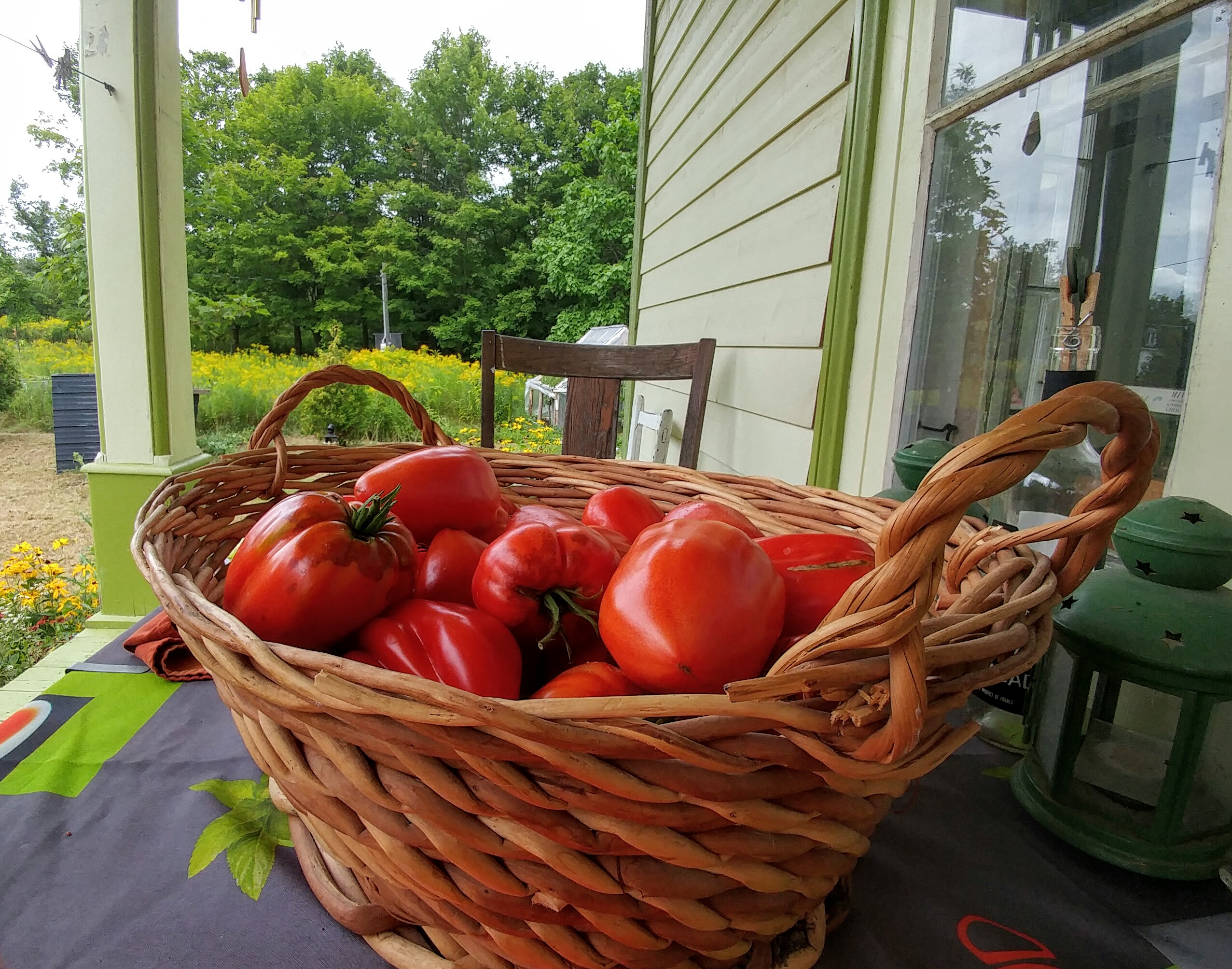 We may as well talk about tomatoes since there isn’t much going on in terms of local mushrooms. What a crappy season so far. I mean we’ve had a few good harvests but we are not meeting the demand at the market, and with a trickle for the restaurant menu, I haven’t started putting up. When you consider that I typically process 2 tons of mushrooms for our year (to supply the restaurant and make our products), I will have to get started soon enough.. Pretty frightening. Fingers crossed.
We may as well talk about tomatoes since there isn’t much going on in terms of local mushrooms. What a crappy season so far. I mean we’ve had a few good harvests but we are not meeting the demand at the market, and with a trickle for the restaurant menu, I haven’t started putting up. When you consider that I typically process 2 tons of mushrooms for our year (to supply the restaurant and make our products), I will have to get started soon enough.. Pretty frightening. Fingers crossed. 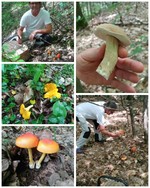
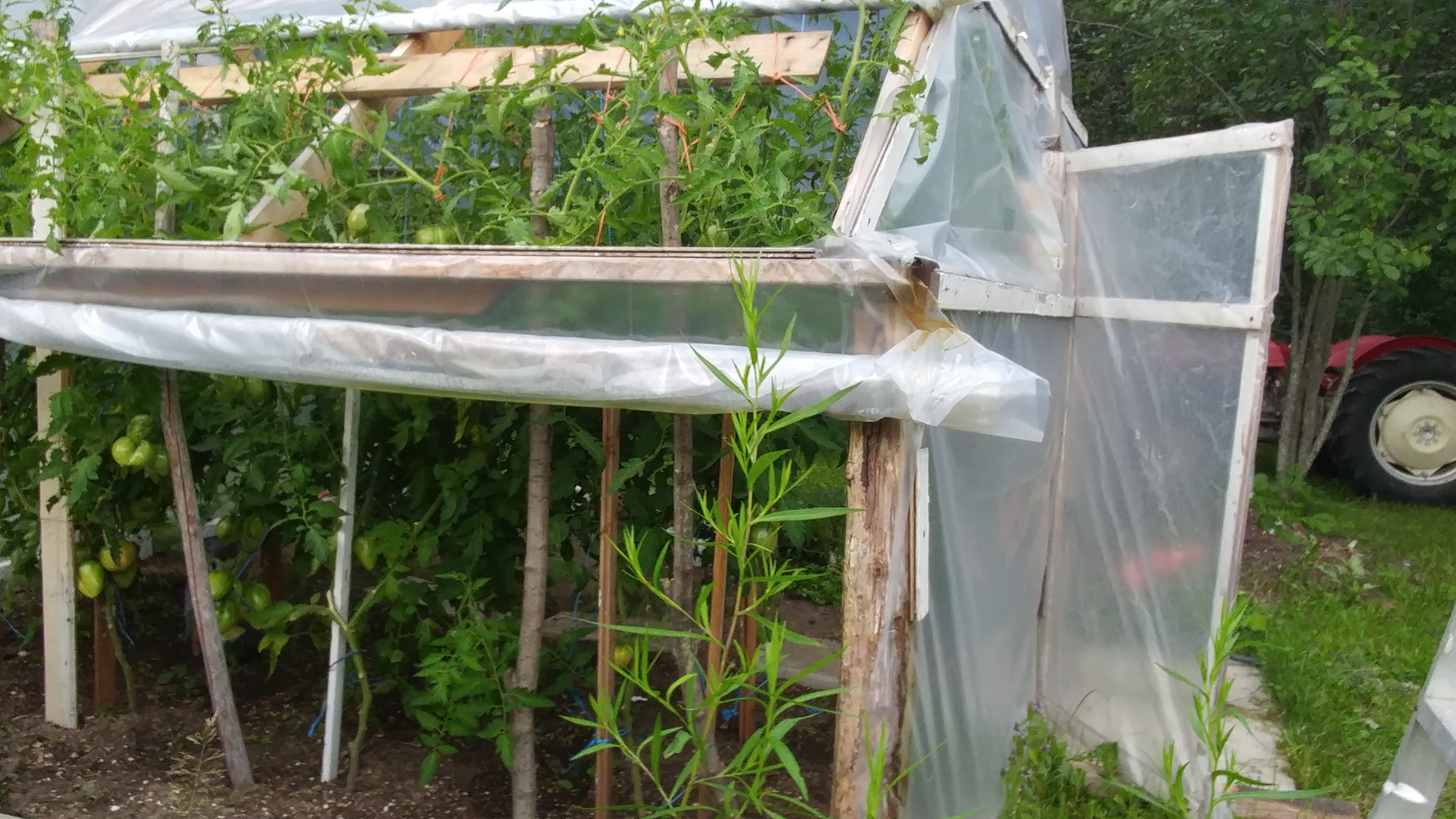
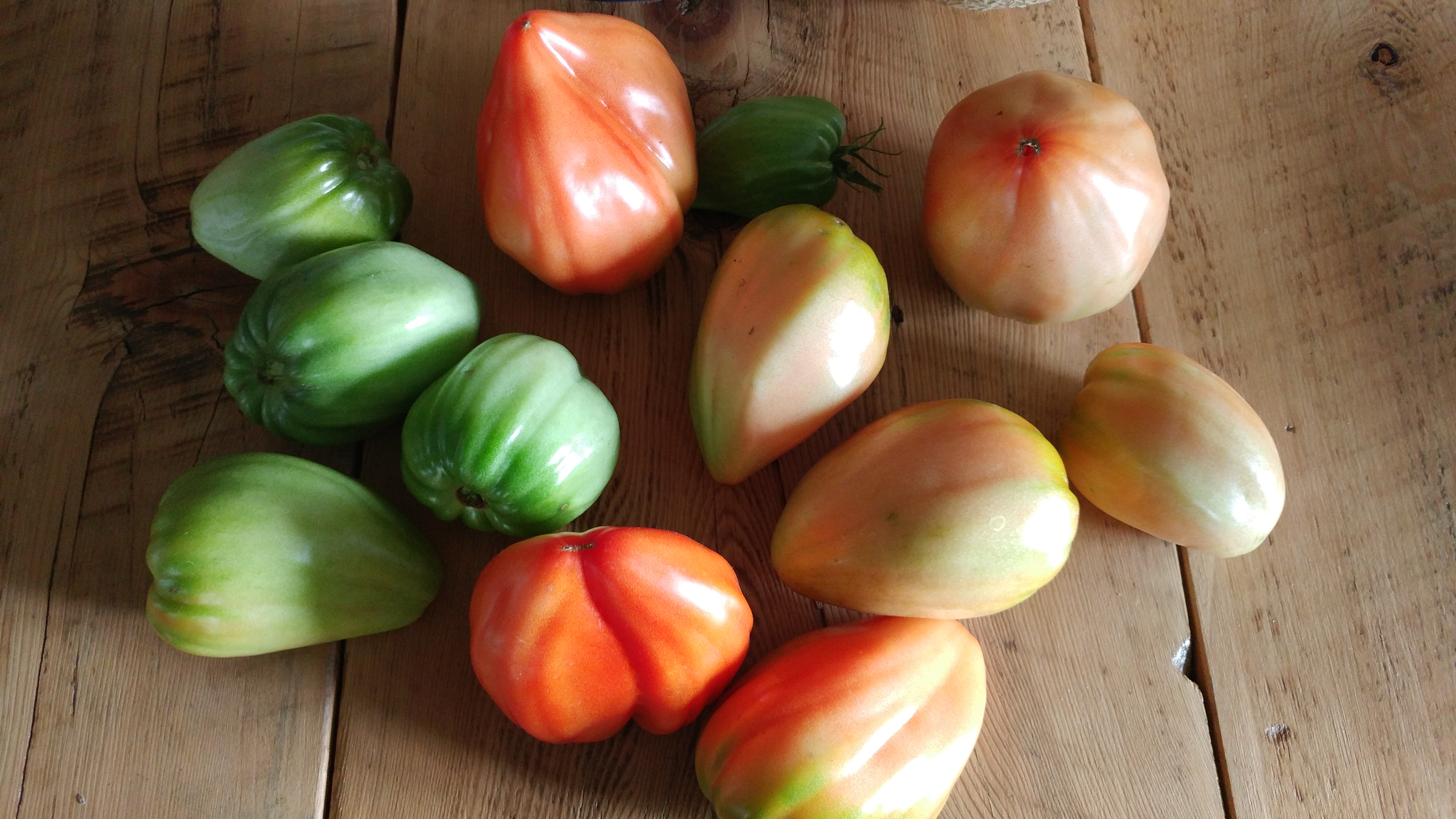
So anyway, back to the tomatoes. Anyone who knows us (or follows me) has heard of François’ famous tomatoes. They are an old heirloom variety whose name eludes us, from seeds passed down generations in Pasquale’s, (one of his Italian mushroom pickers) family. His great grandfather brought them over here like a century ago. François kept the seeds from the tastiest of his specimens and started them this winter, moving them into a greenhouse in the spring, and he lovingly tends to them every day with water and suckering, tying them up (they are 9ft tall!) and etc. He has planted some in the garden too and distributed seeds to other gardeners as well, in hopes to keep the variety alive.
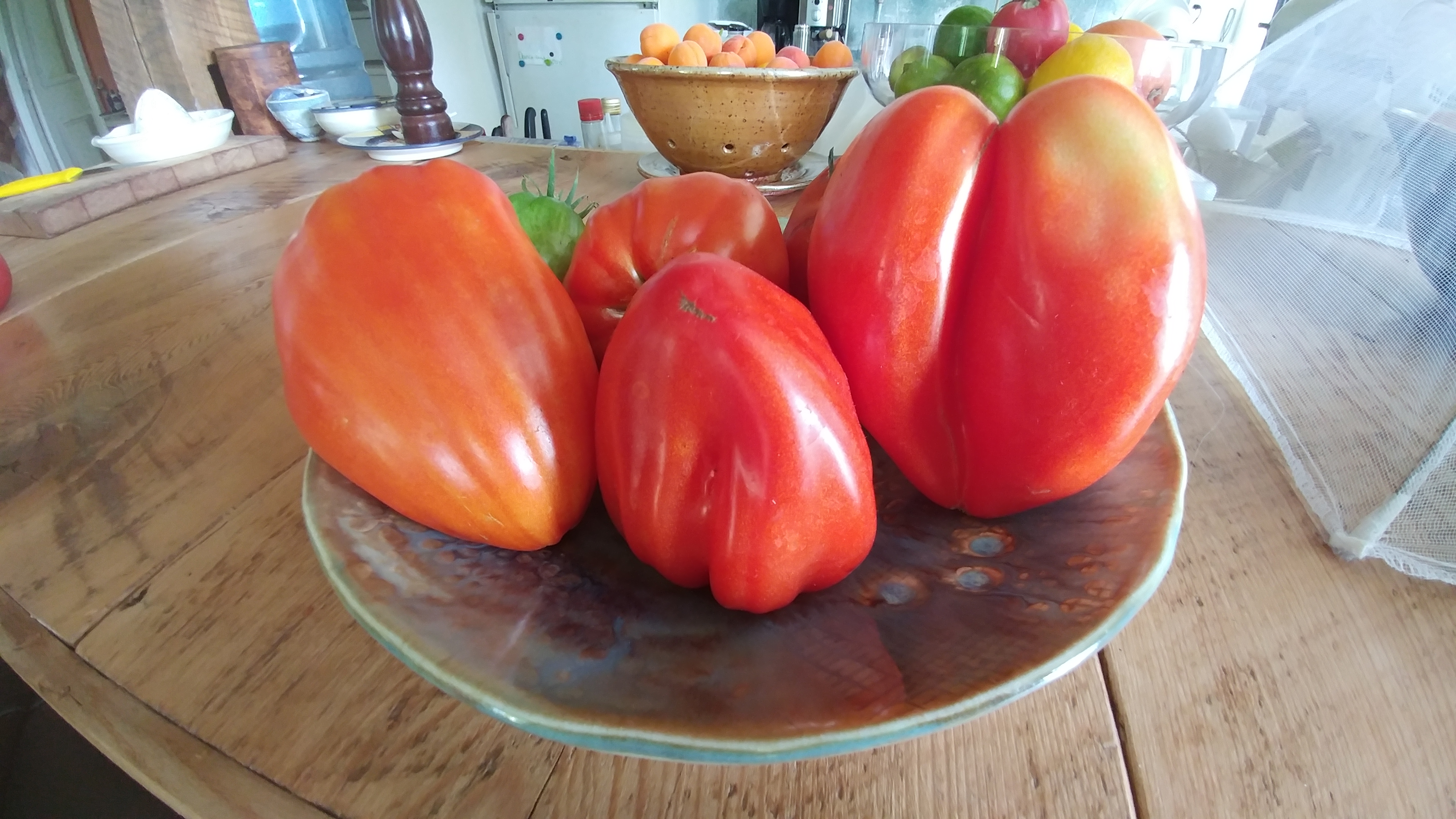
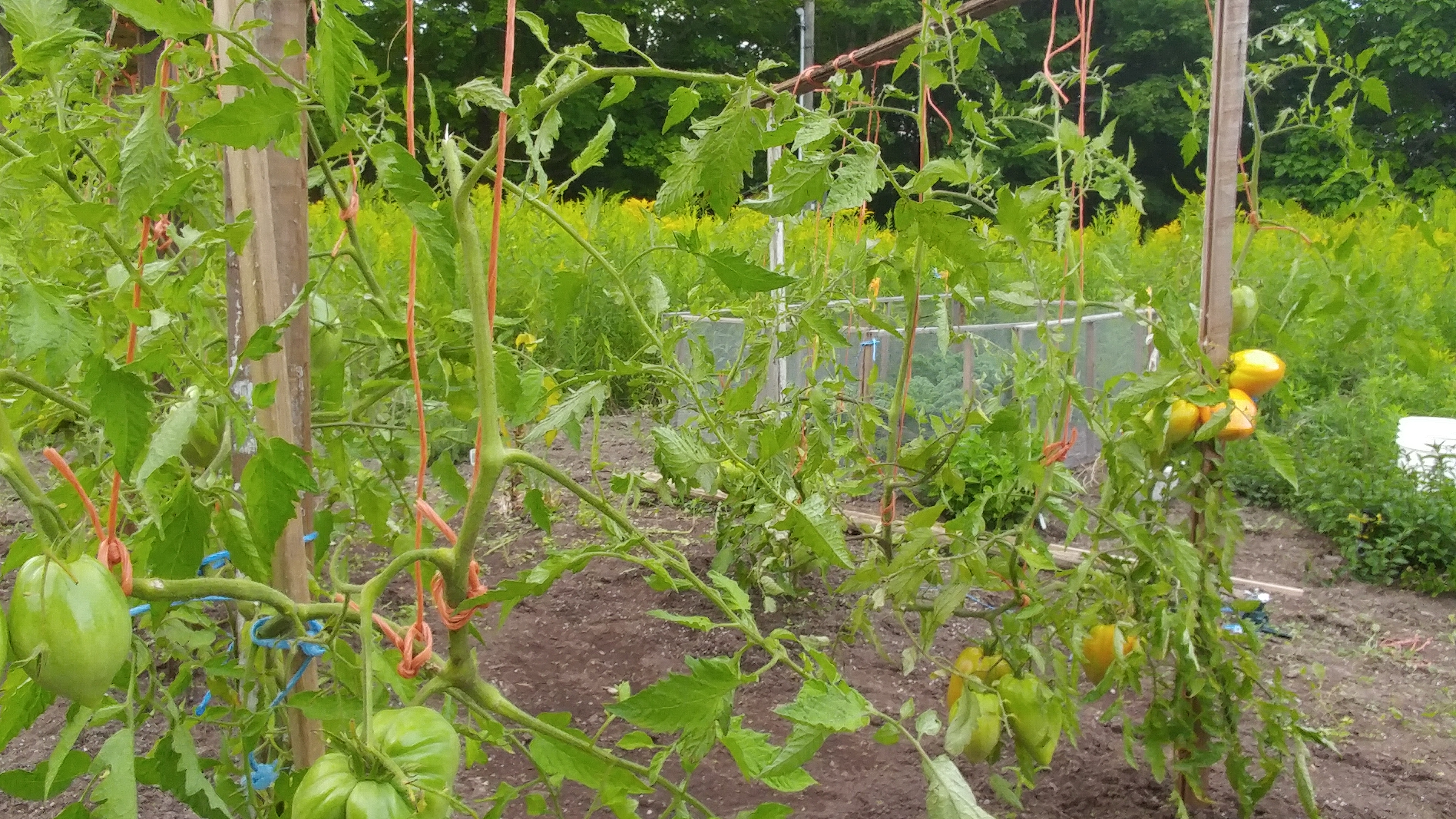
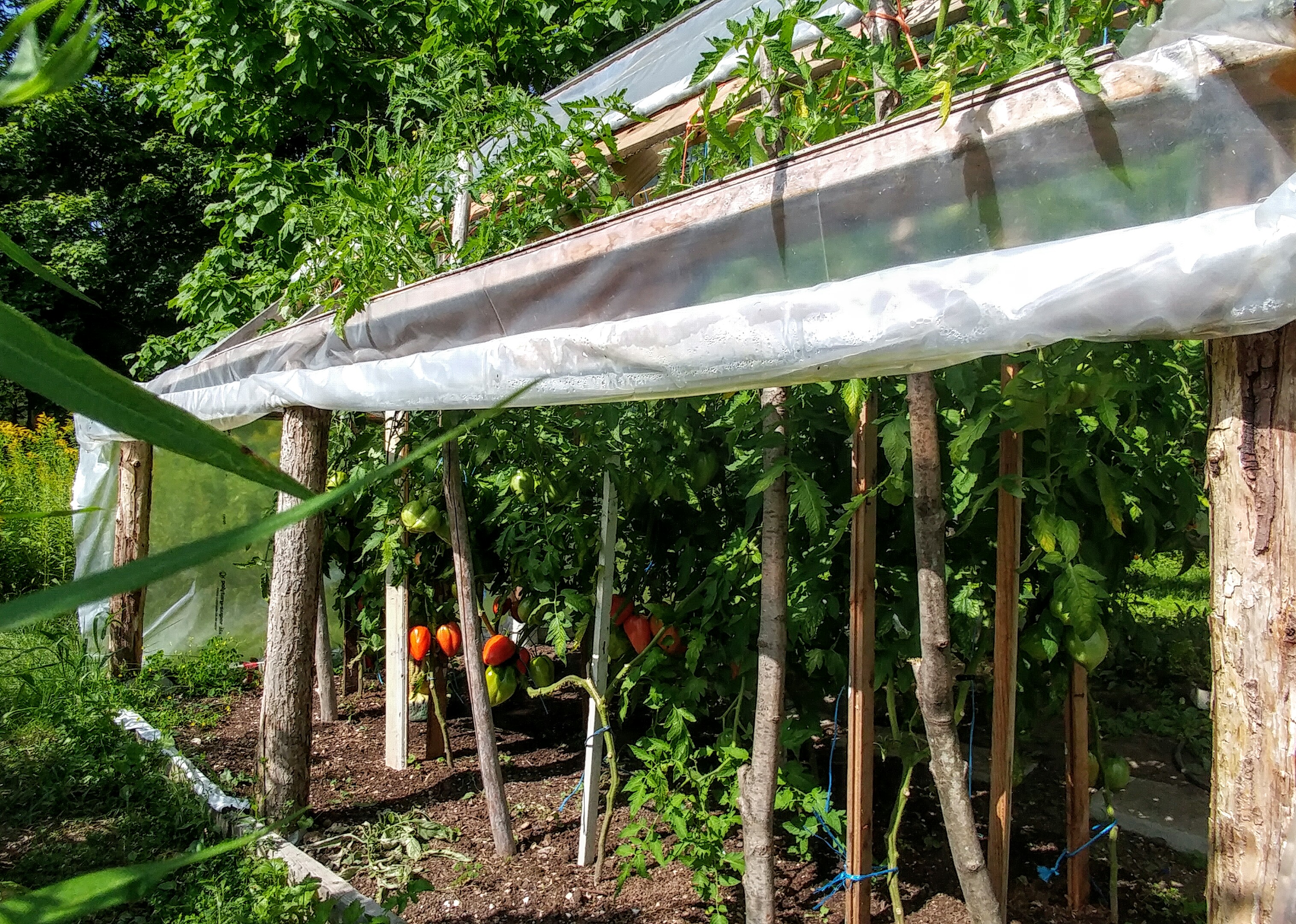 Greenhouse vs field, the taste test is on..
Greenhouse vs field, the taste test is on..
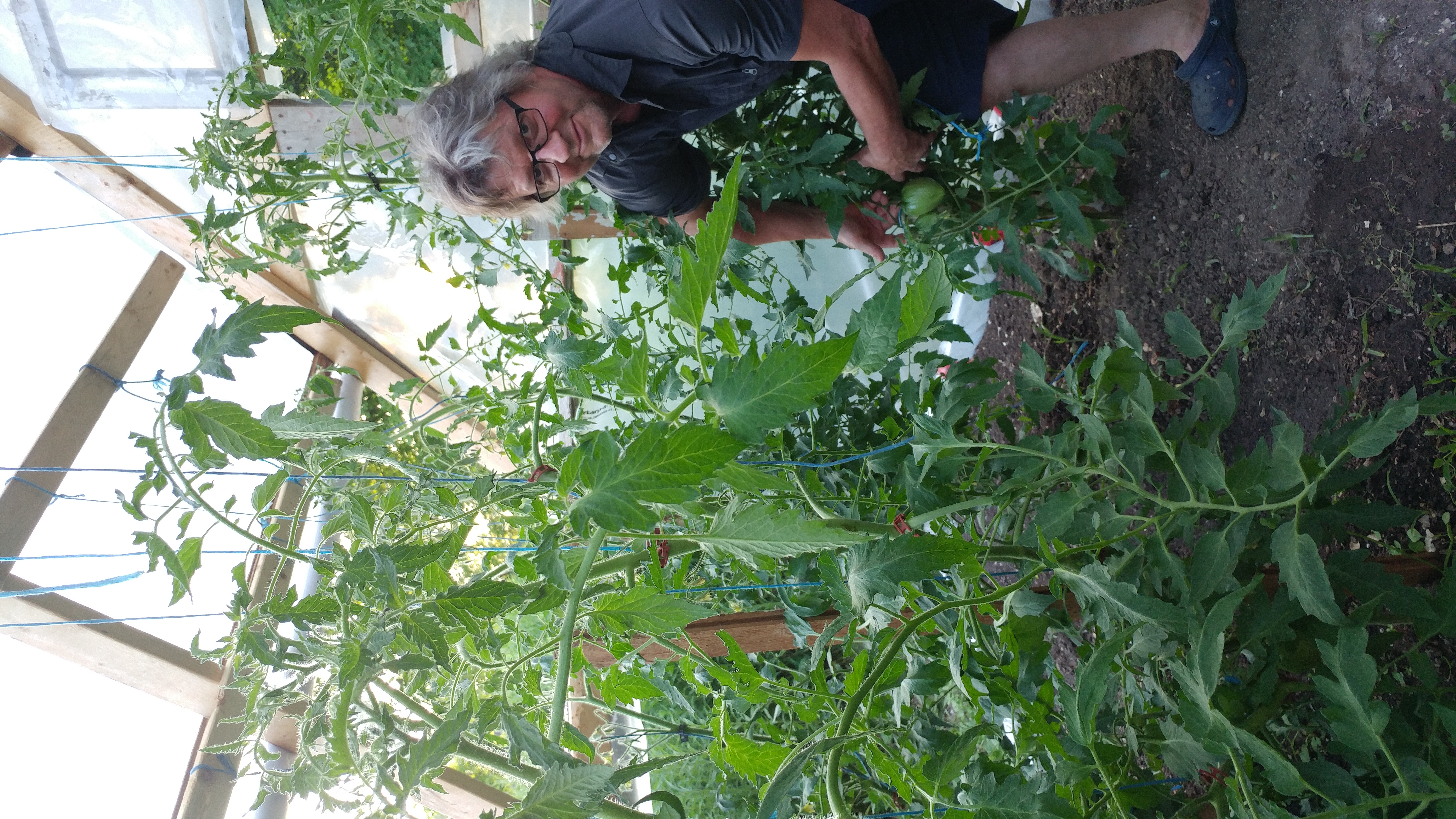 Proud green thumb
Proud green thumb
I can’t tell you how important his tomatoes are to him, and hence what an exciting time it is in our household now that they are finally becoming ready. He lays them out on the counter in order that they will be eaten and for different uses.. Woe and behold if I take too many to the restaurant or if I chop up the one that was meant for a sandwich, or yikes, slice it ‘the wrong’ way - Watch out for the St-Roch tomato police!
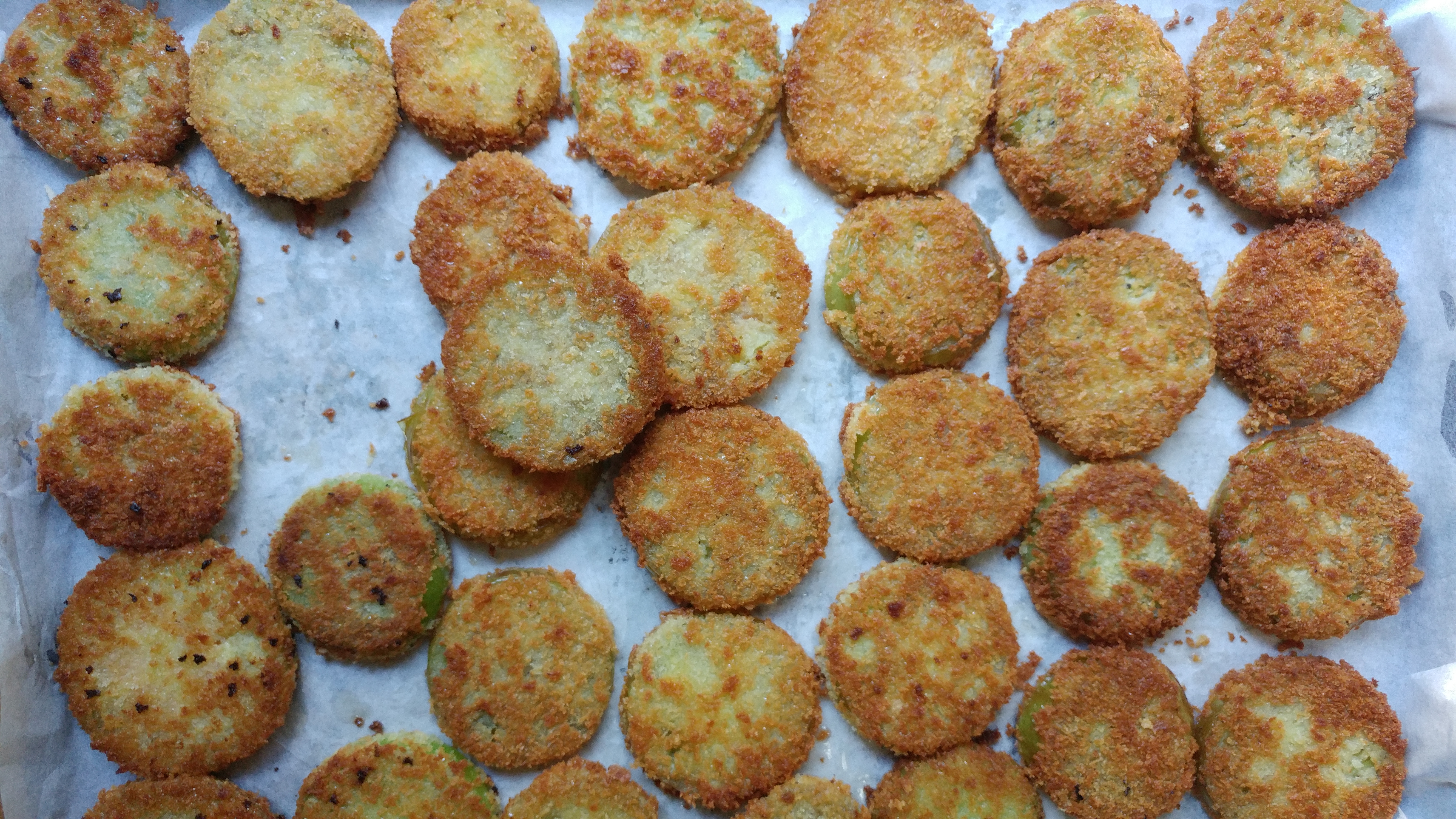
The first dish was of course Fried Green Tomatoes, which has become an annual ritual since we started making them (http://soupnancy.squarespace.com/blog-journalessays/2009/10/7/fried-green-tomatoes-finally.html), François just adores them. And besides, what else are you going to do with green tomatoes. Now that they are ripening, we are eating them in salads and salsa, with pasta and fish. They are meaty, not many seeds buy juicy, sweet and tomatoey, with a bit of tart. I like some acidity but François expects them to be succulent sweet and is banking on the garden ones.
He apparently has tomato tarts and pizza on the agenda, as he has ordered his dough (from me)..
At the restaurant – 1st entree of the moment: Fried green tomato with ripe and smoked tomato, corn, cucumber salsa, sea spinach and sea asparagus, crinkleroot lovage yogurt dressing, smoked eel, bee balm 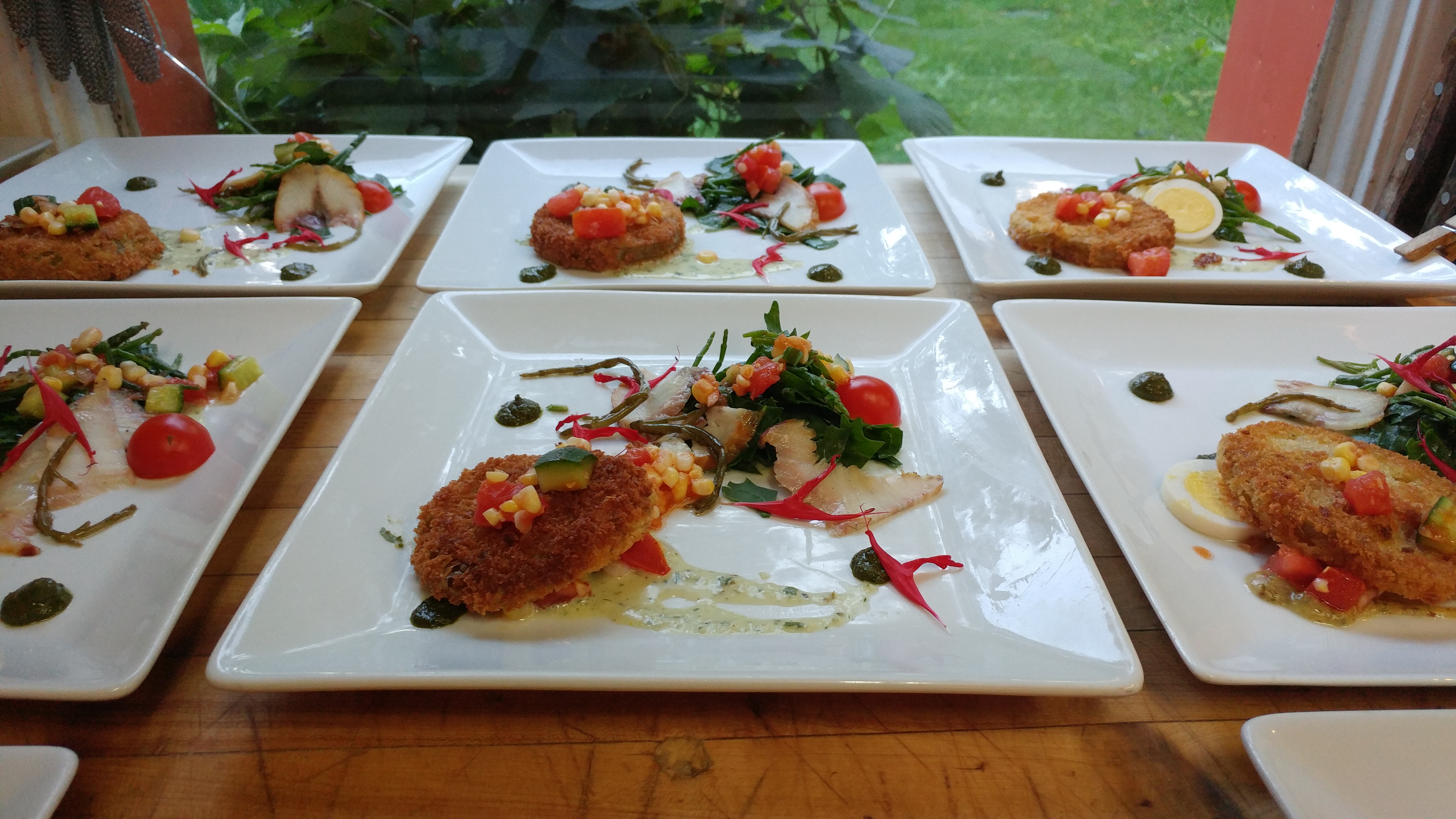
As the harvest really explodes later this summer/fall, I will be canning, smoking, making ratatouille and ketchup, etc..
But it’s not all about tomatoes or even the wild edibles, with the corn and beans, peas, favas, zuchinni and peppers, garlic, kohlrabi.. Lettuces, herbs, Plums, melons and peaches.. Not to mention the wild blueberries! And it will only get better in the month ahead, alongside the mushrooms. September is the best month of the year for food!
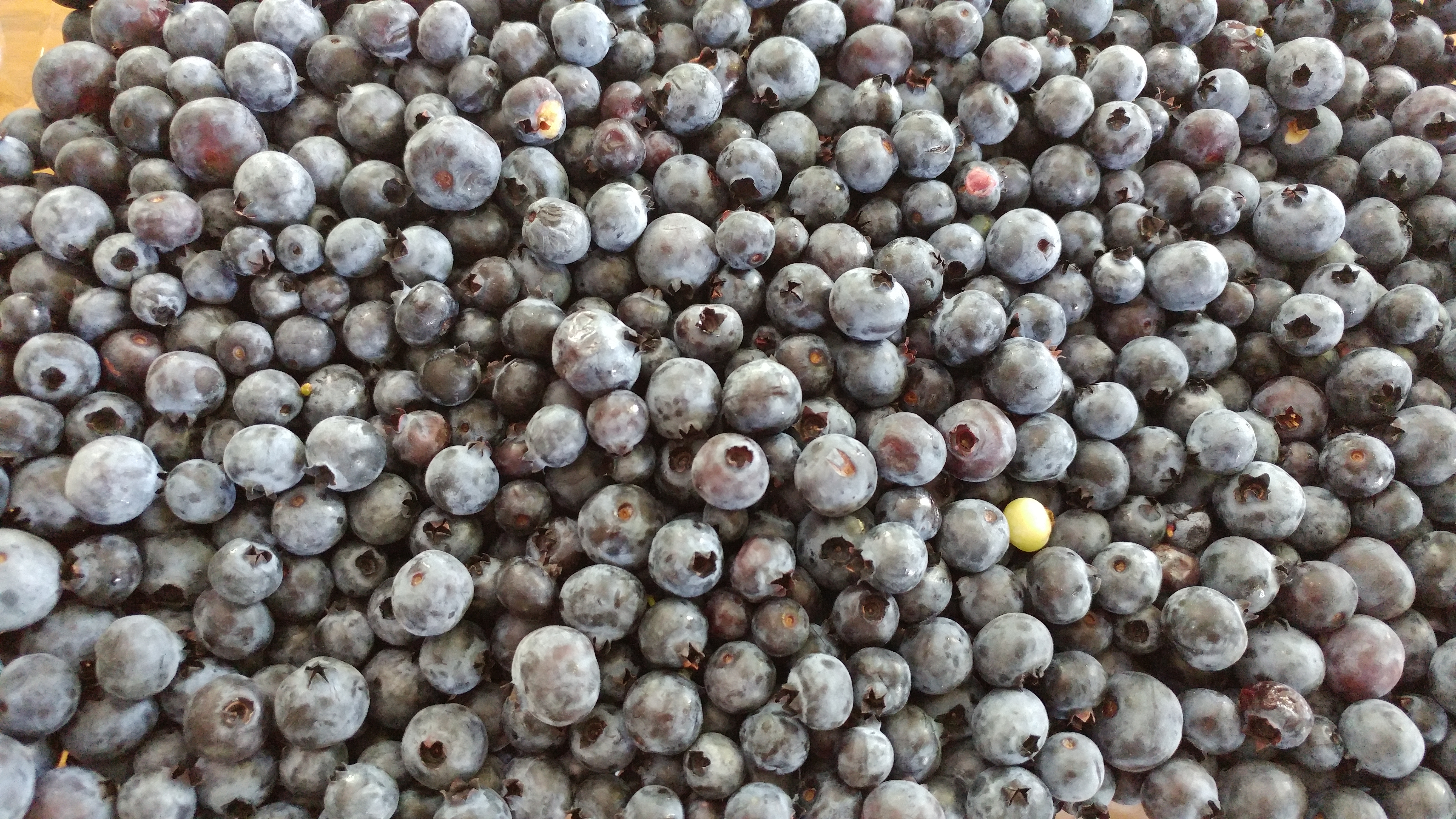
Some other summer hits:
A vegetable stew thickened with bread: ribolita - panzanella meets ratatouille, just a different delicious way to use the garden bounty or what’s hanging out in your fridge. Stew onions with celery/leek, peppers, add zucchini and whatever other veg you like (corn, beans..) Herbs and spices, A bit of white wine and stock or just tomatoes with their juice. At the end, throw in some croutons or dry bread, season and serve on salad with a good oil, aged vinegar and cheese shavings. Good as is or as an accompaniment to sausage, chicken or steak. At the restaurant, I was serving it with confit rabbit. 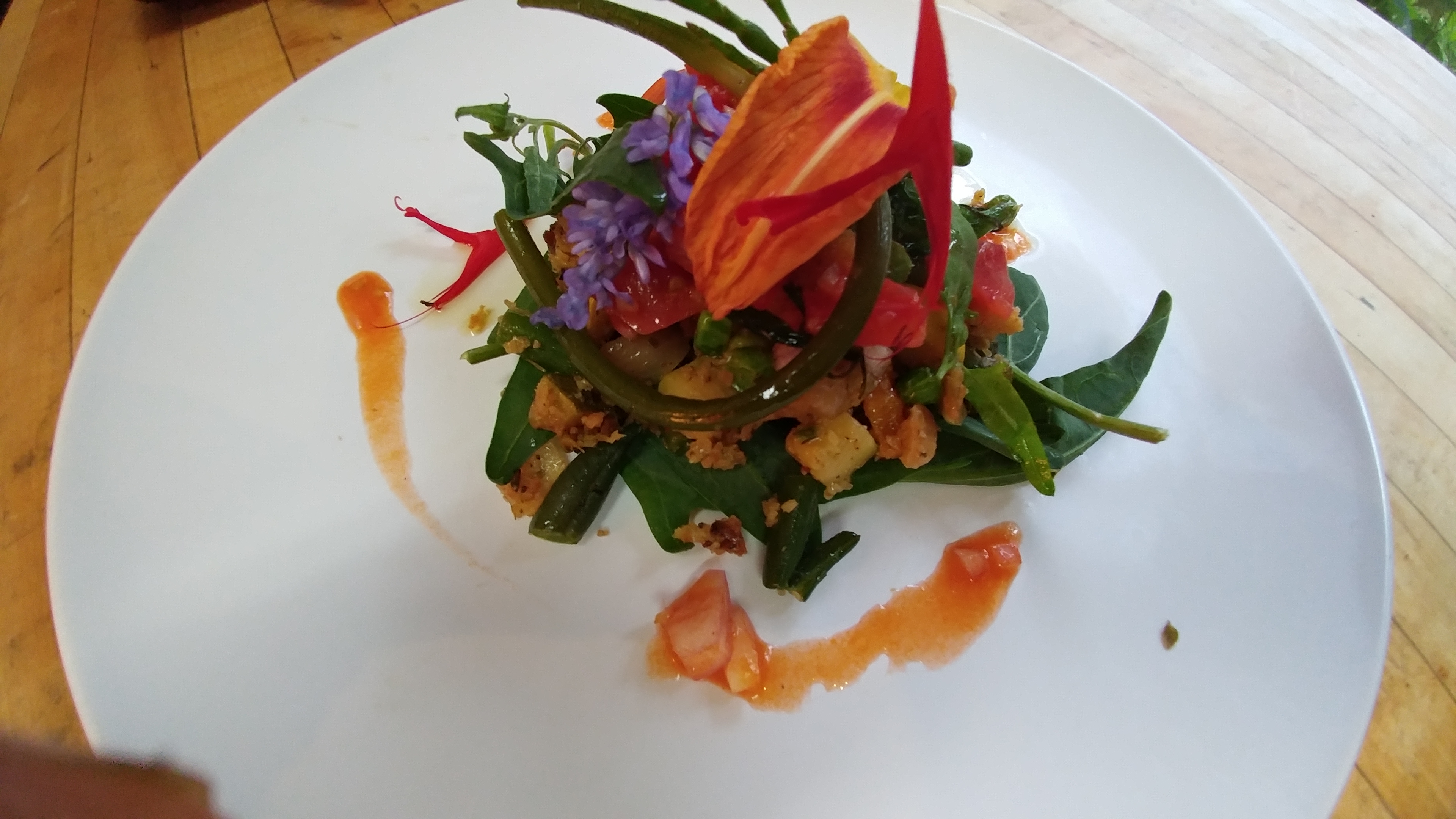
Fleur d’ail (Scapes) as a vegetable and as a condiment
In July when it’s scape time, we put them up for the year, alongside the wild stuff, a raw, green garlicky pesto. But it’s a beautiful time and a 2-3 week window (one for picking one, 2-3 for storing), when you can eat the scape as a vegetable, like an asparagus or green bean. It takes a 5 min. Boil. It is tender when it loses its bright green, sorry. Mildly garlicky, delish. Here the raw pesto is tempered into the hot potato mash, and the cooked scapes are a garnish. Alongside chanterelles which are in season at the same time. Just missing the corn, which would be perfect now. 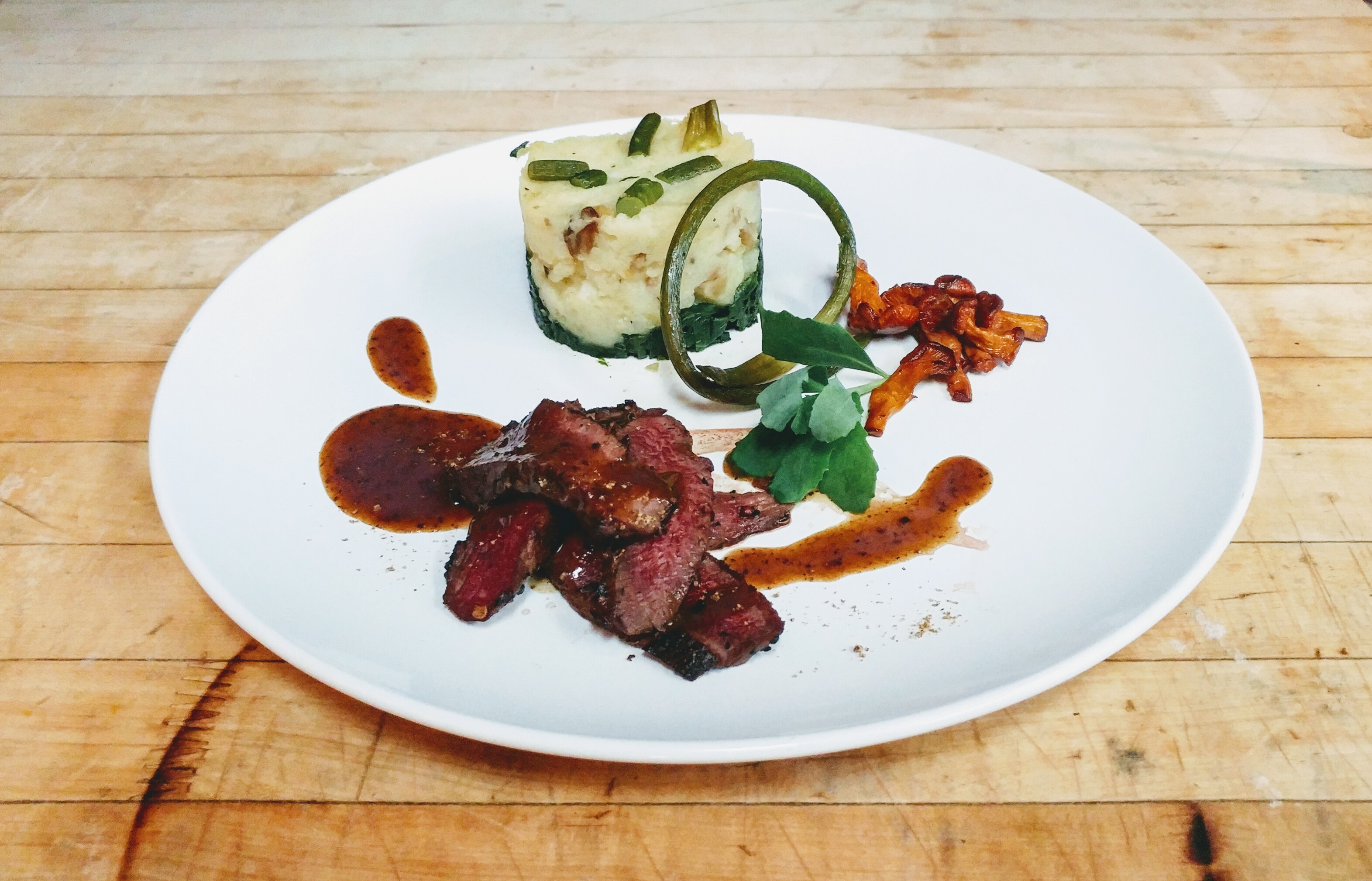
Vichyssoise (Stinging nettle)
Like a Parmentier or any puree/ green soup thickened with potato (so less cream). With stinging nettle and sea parsley, this soup is delicious, but it could be/is with many greens. I make a seasonal green soup with what is abundant, always good. Not only delicious, but nutritious. Served cold on a hot day or hot the rest of the time. Just a basic soup with onion, leek, celery, a touch of wine or vinegar, stock, herbs and spices, potato. Add wild greens. Finish with cream, milk. Tweak with salt, pepper, spice, acid, maple syrup.
Add a little garnish like this: cucumber, radish, lovage, sumac to lighten it up, or it could always be another to make it more hearty like bacon or smoked duck.
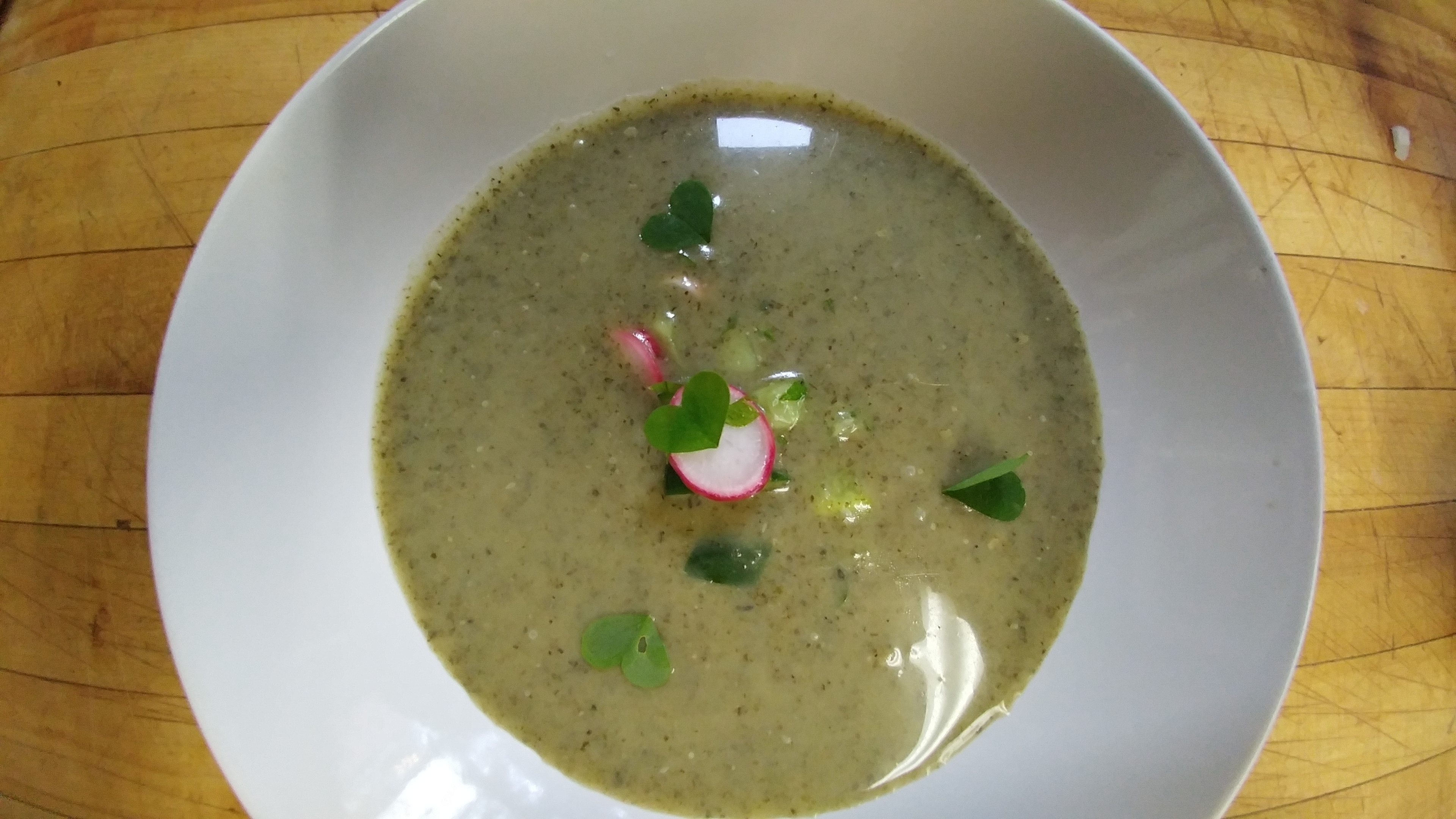
Mushrooms or not, it’s time to be hitting the market (and/or garden) and cooking up a storm!
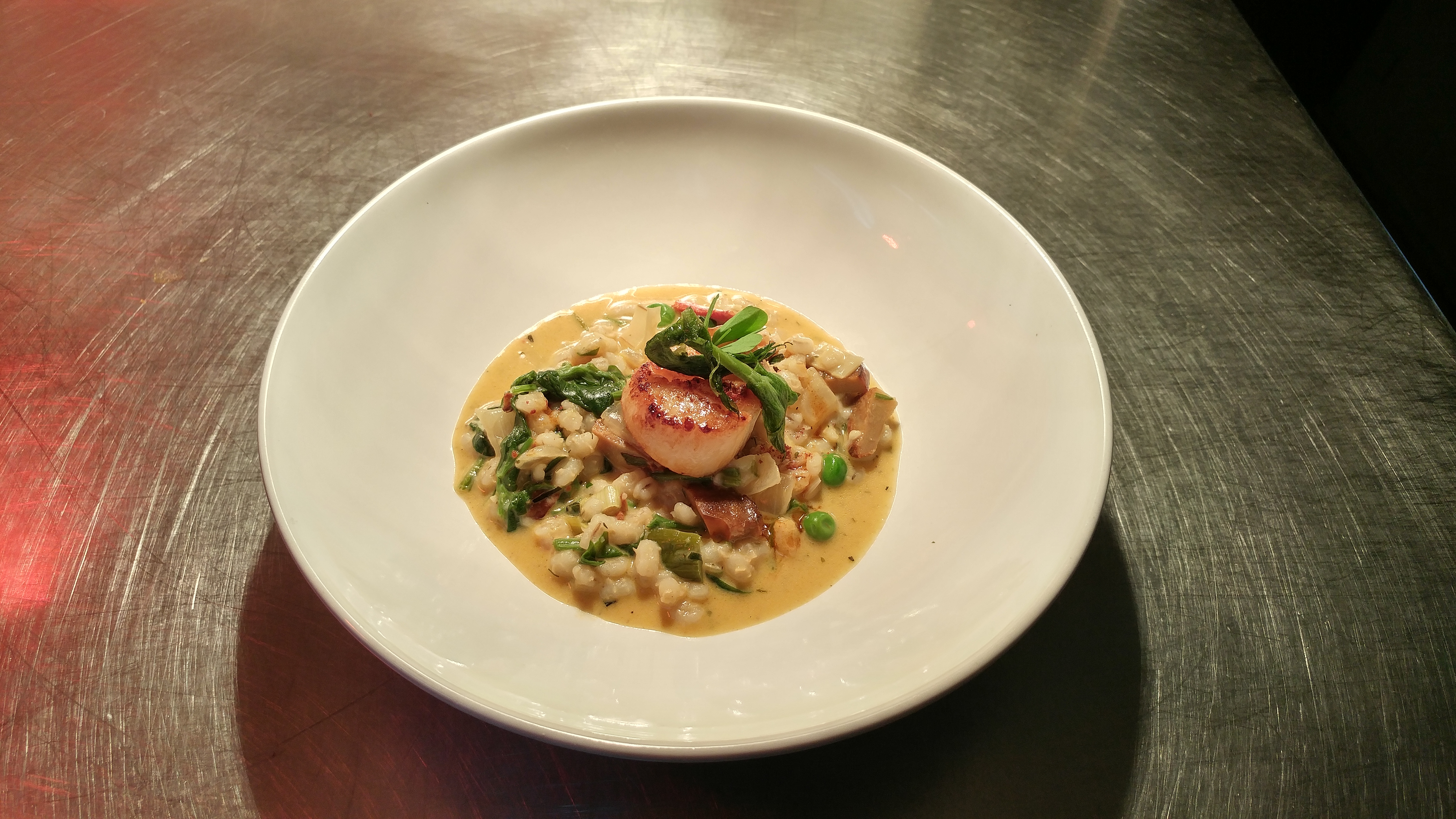 Lobster mushroom and lobster bisque risotto with beach peas, sea spinach and sea scallop
Lobster mushroom and lobster bisque risotto with beach peas, sea spinach and sea scallop 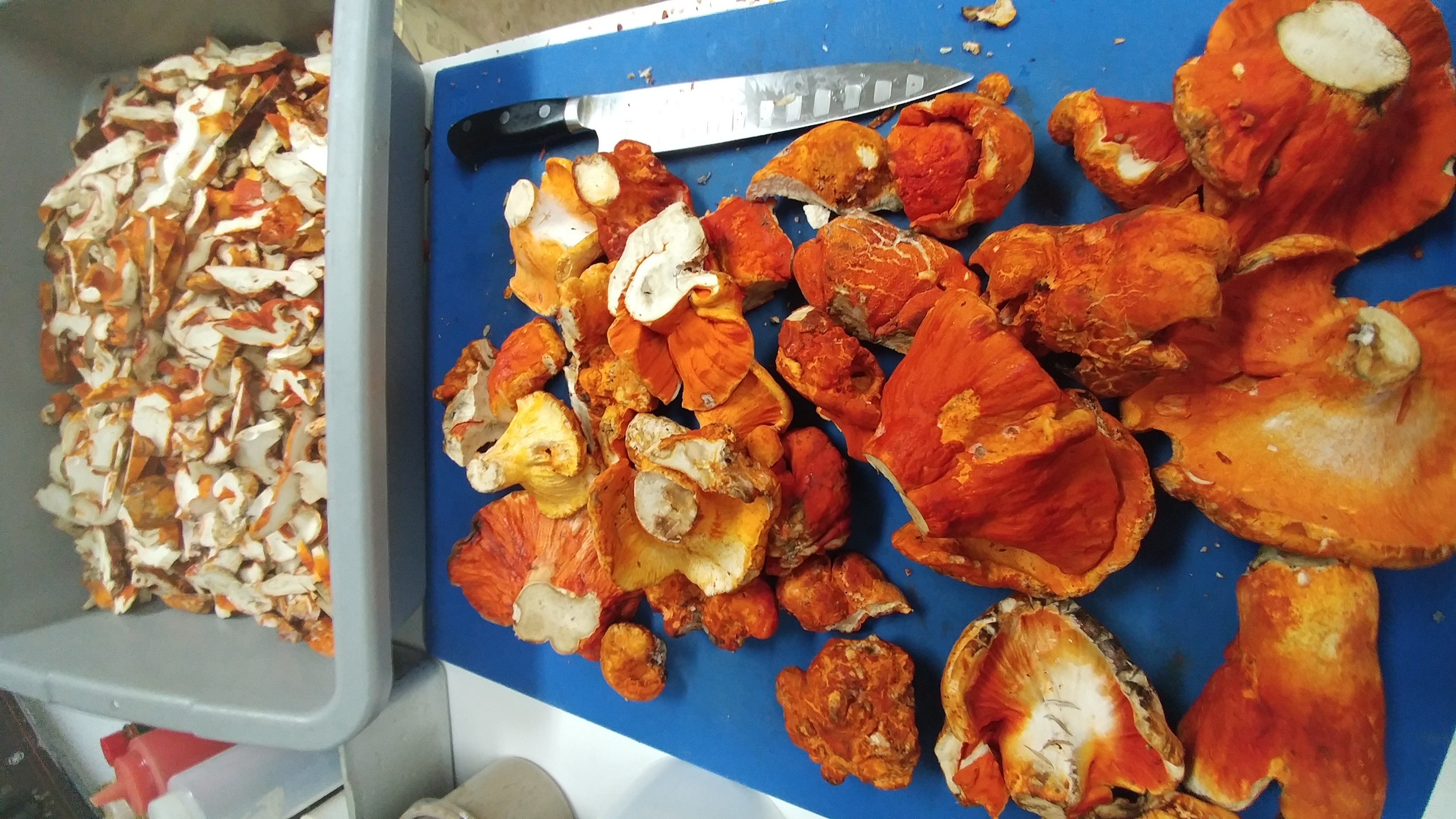 First significant harvest of Lobsters to put up
First significant harvest of Lobsters to put up
My guilty foreign flour affair '00'
My guilty foreign flour love affair
If you love pizza as much as I do, and like to make it at home, read on..
Maybe I’m late to the game on this, but I’m in love with Italian yellow flour ‘00’!
If you like to play with dough, you NEED to try it out. It is just so fun to work with. And it tastes great. I just love the texture it lends to the dough too. Although it looks like finely ground cornmeal, it is indeed wheat flour but milled differently, very fine supposedly, I guess by Italian standards because it is coarser than ours.
Being a girl that promotes local food pretty religiously and for some time now, naturally I buy all my flour from the mill next door (Le Moulin Bleu, St-Roch de l’Achigan).
My guilty affair with this imported flour started with my first No.900 pizza a couple of years back in Quebec City. It was simply the best pizza! Even my fussy François agreed. Dressed only with good tomatoes, cheese and salami and dripping with olive oil, it was the thin, blistered but soft-chewy crust that made it extra-special. Maybe this would be an occasion to use the silly word ‘toothsome’.
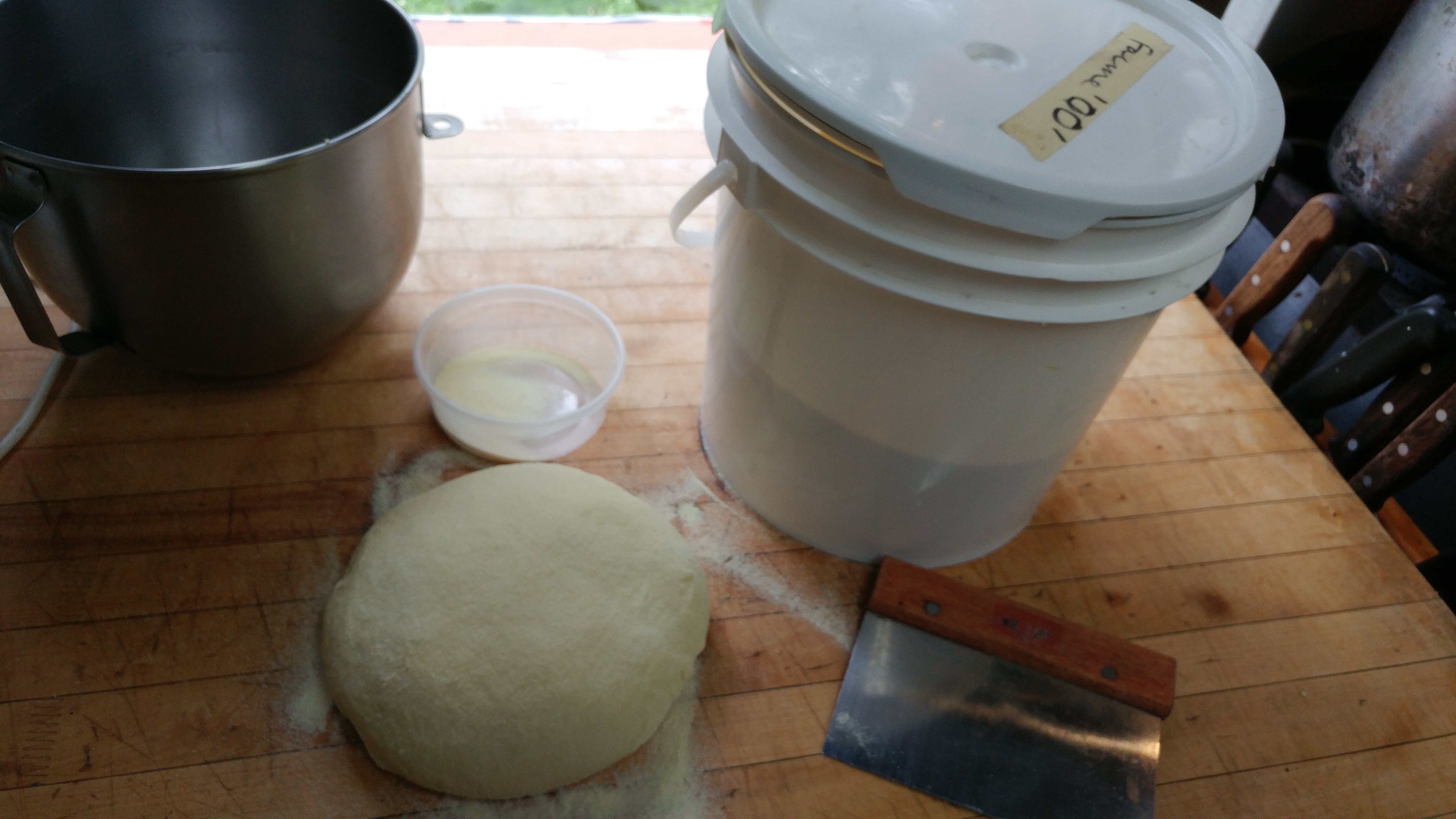
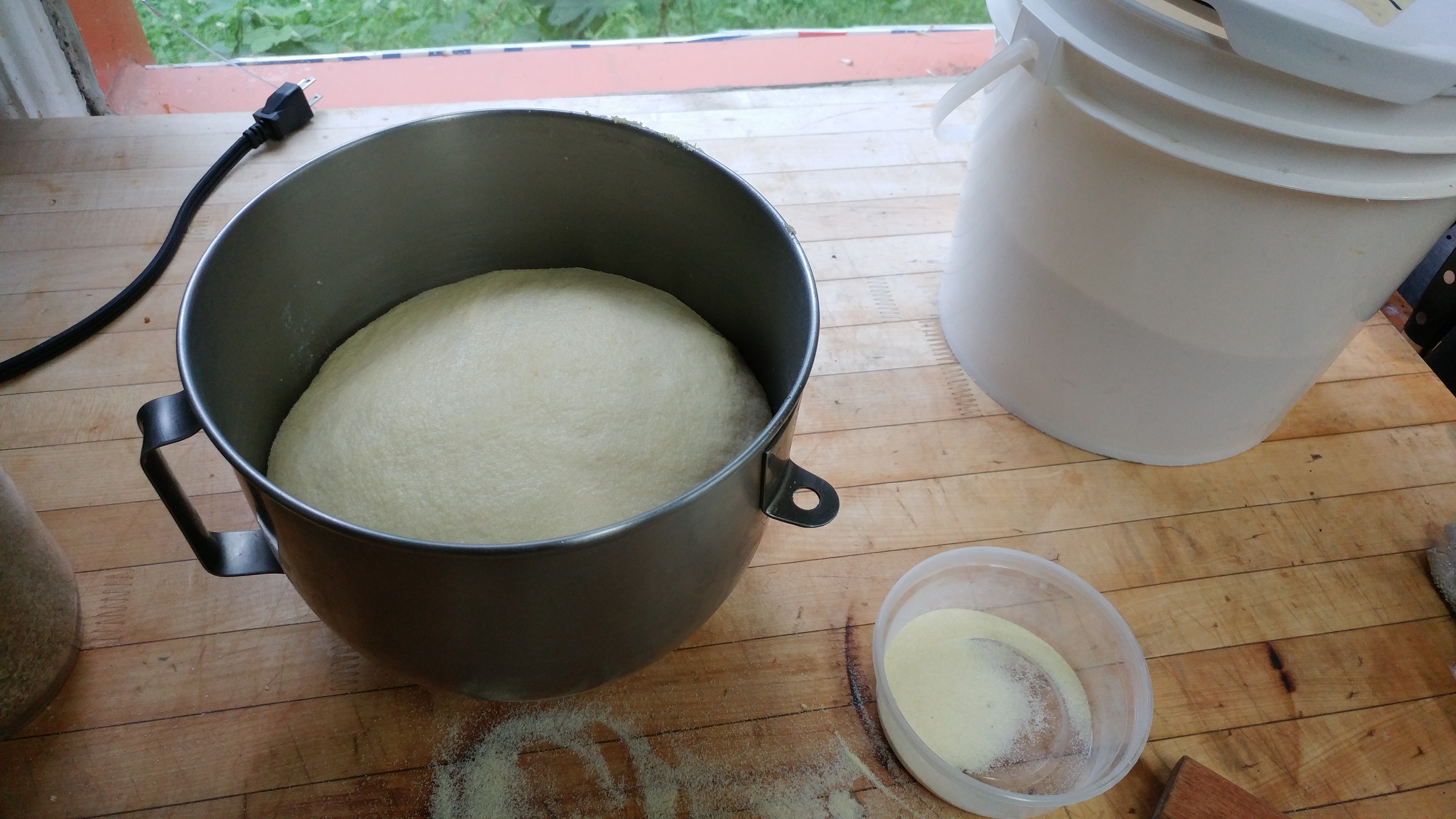
Since my first year of professional cooking 24 years ago and early job in an Italian restaurant (Picolo Diavolo in the village), I have been making pizza. And I have the burn marks to show it on my arms. I don’t make it at Jardins Sauvages except for fireside friend parties, the occasional catering event as finger food, but yes, regularly for us at home, for me. It is never a meal, but the perfect snack, say late night or during a kitchen shift. I always have dough in the freezer, if not a ready-made pie. François likes it white, which is good especially loaded with wild garlic and crinkleroot and some wild greens (so green). I prefer it red with my put up tomatoes, cheese of course and something salty like a cured meat or olives, definitely some spice and occasionally maybe even something sweet like a pickled pepper or ratatouille. But only as a garnish, absolutely not too much topping. But I have a hard time not putting too much on the pizza, like on my plate.
Anyway, the important thing is the crust. The dough at that first spot I worked was a thin crust baked in a wood oven, back when that was a new thing on the scene here; it was rich in that it had milk, eggs, a bit of sugar and all purpose flour, more crisp than chewy. I’ve come back to it several times over the years, after experimenting, but most often doing a simple basic 3hr affair with 65- 70% hydration, just salt, yeast and a touch of olive oil. But now, all while working on the chew, I do like to add one egg for the crisp/taste factor, otherwise a basic dough.
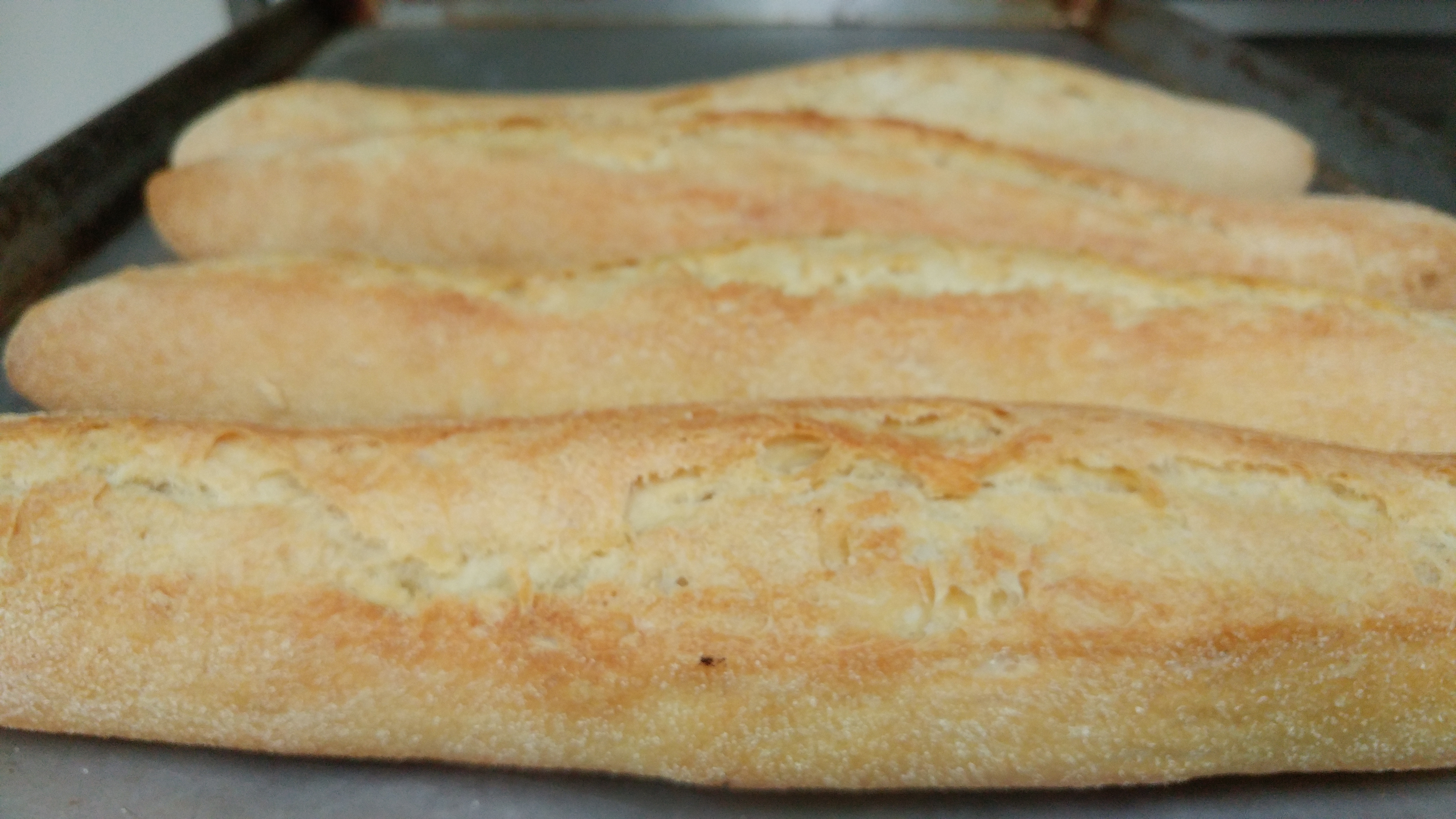
Of course, I went through the no-knead trend but although it’s a neat trick, you have to start the day before and it doesn’t really produce the best results. Especially with bread dough, I have ditched the no-knead laziness however often it saved my ass in the past (the Instadough recipe I learned at the Cordon Bleu was a go-to when busy).. No longer with Leonard (my beloved levain who passed a while ago), I now have a younger less complex starter that sometimes requires work in the days before, but I prefer to make the final dough same day and yes, knead. I make pretty good bread given my set-up, and I enjoy it. If I was in the city and had a fantastic bakery around the corner, I would probably outsource but here, it happily makes sense that I bake my own bread.
All that said, I have never been super ecstatic with my pizza dough, often settling, always fiddling. It’s also in my nature. I can’t just follow a recipe, always working on the ultimate one that I forget to write down. In any case, I know I don’t have the proper oven, can’t attain those ideal ultra-hot temperatures. And yes, I tried a baking stone, rocks from the river and etc. At one point (this must have been early in our relationship), François spoke of building me an old fashioned bread oven; he has the plans and the stones. But we both know that’s ridiculously inefficient in terms of the wood we would need to burn for our small, sporadic operation and a family of 2; ideally that sort of thing would be for a community of bakers or a full-time bakery/pizza place.
Besides the fancy 900 degree oven I will never have, I figured I might come closer to that crust I dream about by trying the famous yellow flour used at No.900 and by many Italian pizza aficionados..
And yes, it is pretty amazing! Mind you, you can’t follow a regular recipe for it, but I just played within my ratios and added the flour needed. It’s incredible how elastic it gets. 1 cup of 00 weighs 200g compared to around 150g for most all-purpose or bread flours. But it absorbs less water, so you need more flour than you think. But if you’re working in cups, you end up not being too far off I realized.. Since I usually work with weights in bread, I stopped following any recipe, followed the feel and the fermentation. With the extra flour in weight, I saw I had to up the salt. I haven’t found that you need more yeast, but maybe a pinch. It depends again on if you’re using a starter or what your timeline is. If you have a starter or want to take it slow, you will add less yeast, say. Don’t be too harsh, punching down your dough and such, it’s good to be gentle. I am often tempted to roll out but stretching by hand apparently gives a better crust.
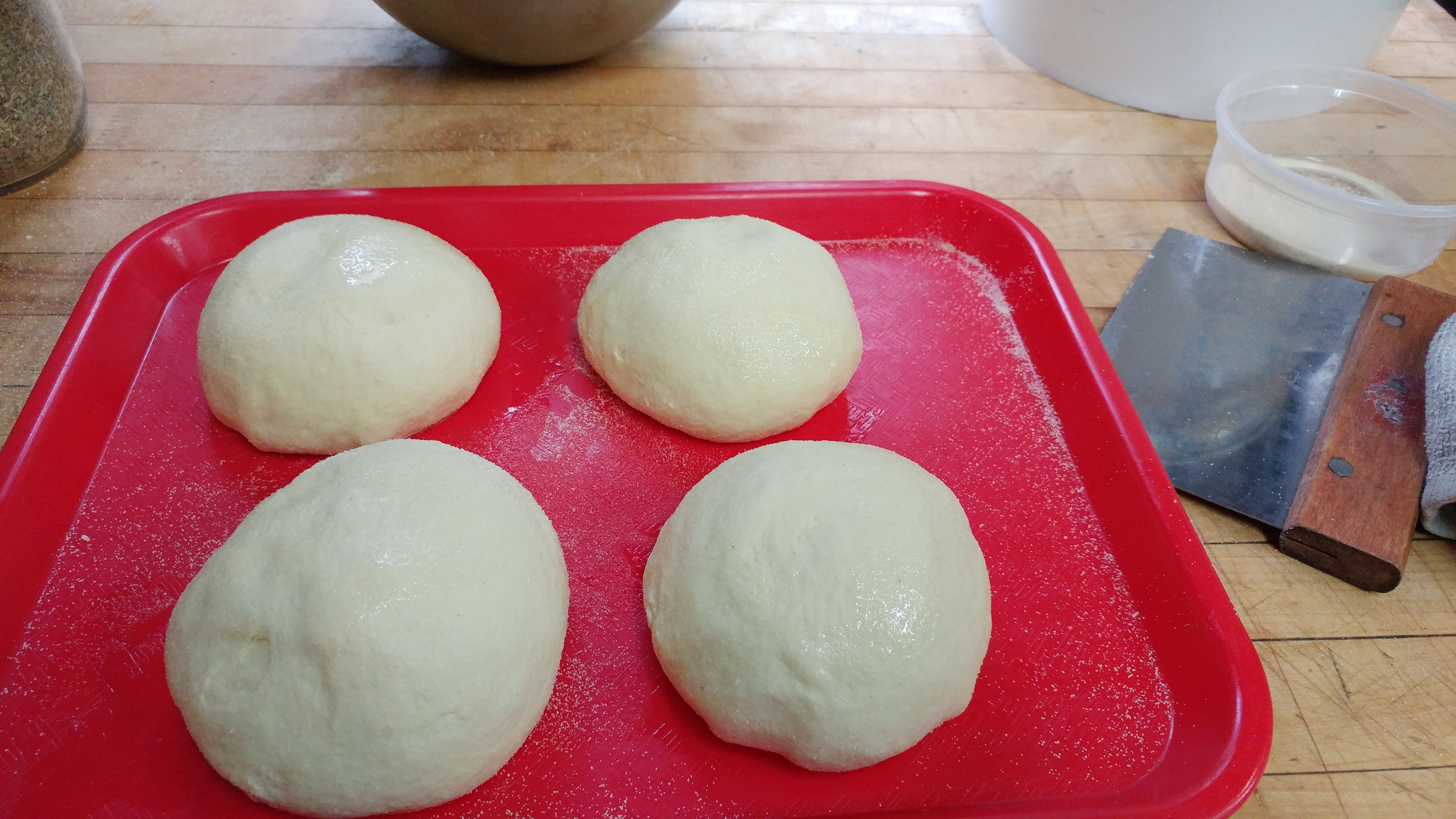 Dough balls for the freezer. Takes no time to thaw for same day pizza if not overnight.
Dough balls for the freezer. Takes no time to thaw for same day pizza if not overnight.
It’s still not perfect, but steps and bounds ahead, for a home kitchen. You can see my recipe template below and others too.
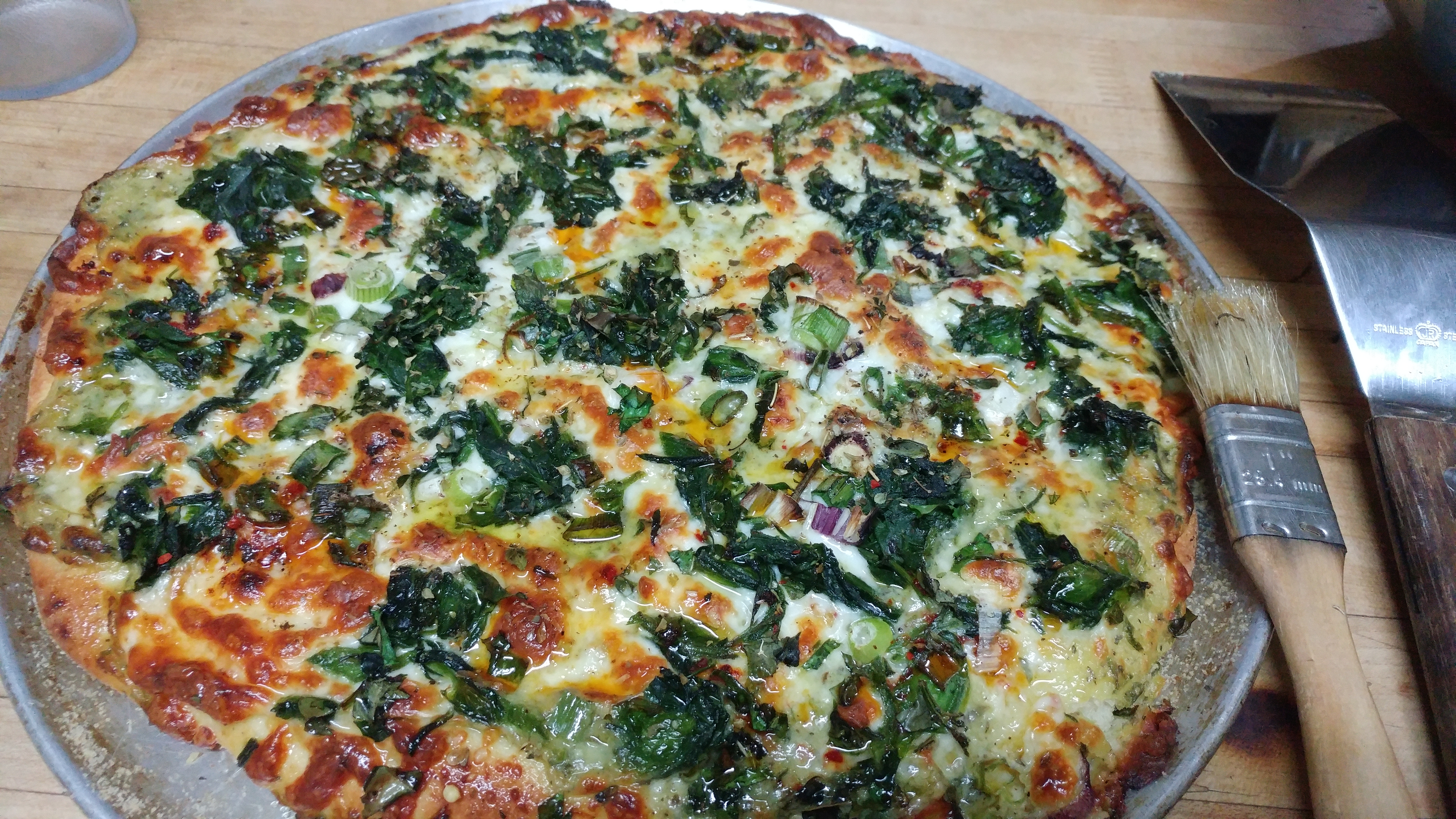 This could have been rolled or stretched thinner, less topping. But it was still delish.
This could have been rolled or stretched thinner, less topping. But it was still delish.
I said I would use the 20lb François gave me as a Xmas gift, because it was a super gift and I don’t want to be wasteful. I have been using it in my bread at la table too (along with Le Moulin Bleu, say 50:50 or just to feed the starter or just to finish) much to my waitresses’ bafflement, given our local credo. I told them it was just a fling. But I’m almost out, so I don’t know. Maybe more than a fling, because I might have to buy more, if only for my home pizza snacks. You can get it at specialty Italian stores or suppliers, not too hard to find in the big city or online I suppose.
And it makes the most fantastic pasta too! I use half Moulin Bleu bread flour and half '00'.
Fliing or not, the Moulin Bleu will remain my go-to and should be on your radar too. Local and organic, especially known for their buckwheat.. I don't know, but it doesn't really make much sense to import flour. So torn.
My more-or-less recipe (pretty darn good but still room for improvement)
2x large or 4 x medium 12’ pizzas:
10-15g yeast (1-2 Tbsp or 1-2pkg) active dry*
400ml water (slightly warm to body temp) or 1 egg + 350ml (total a little more than 1.5 c)
15g (1 Tbsp) sugar
700g+ 00 flour (around 3.5c), more like 550g of AP flour or Moulin Bleu bread flour+
20g (1Tbsp salt)
20ml olive oil (1 big Tbsp)+
Mix water, sugar and egg, add yeast. Add a third of the flour and mix. Allow to hydrate a little, say 20min. Add another third of the flour, salt, oil and start mixing. Once you have a sticky homogeneous mass, add the rest of the flour except for a bit, that you will add as need be. Knead at slow/medium speed, adding more flour as required until a uniform mass /loose ball forms, and then knead a little more, but not too much. Like 5 min total by machine. Until it is an elastic, stretchy, slightly but not too sticky ball that gently pulls off the dough hook or your hands (by hand it will be longer, more like 10min). Let rise covered for 1hr or until double. Cut into 2 or 4 portions and roll into balls. At this point, I put them on a greased tray and freeze, wrapping the next day for later use. Then you pull out a ball and let thaw in the fridge overnight or on the counter for a few hours, before rolling out/shaping. . If you are cooking soon, then let the dough rise another 30min-1hr before rolling out (onto a greased floured pan). Once stretched or rolled out, top and let sit while your oven heats up. Cook for about 10 min in a 450F oven. Go higher with a stone if you can. The hotter the better if your pie is thin, not too much topping. I have found that unrealistic in a home oven setting and with my pizzas. Because you want it to be cooked through and toasted, not burnt. Out of the oven, Brush with olive oil or good oil of choice.
*I find that if you’re not in a rush, it is best to use less yeast and take more time..
Our favourite toppings:
Tomato sauce (with garlic and oregano) spread very thin, you should see the dough through the sauce, cheese (ideally a blend of grated firm cheese like cheddar and/or parmesan-style, with some mozzarella or fresh cheese), prosciutto or salami, green onions, basil, hot pepper
Ratatouille spread very thin, cheese (same as above), olives
Bechamel or cream sauce or just drained fresh cheese with herb pesto (or a ton of chopped herbs and greens), some grated cheese, thinly sliced onions or wild garlic (optional: bacon)
Wild mushroom sauce, cheese
Wild Herb pesto, fresh tomatoes, cheese
3 Pizza dough recipes http://slice.seriouseats.com/archives/2012/07/print/the-pizza-lab-three-doughs-to-know.html
Spring meets Summer, Foraging issues and guidelines
Spring meets Summer, finally!
Although it’s still technically spring, it’s starting to feel a lot like summer. A deep, lush green abounds, a symphony of birds chirping, and yup, the mosquitoes are out in full force.
Our spring rush of harvesting shoots and fiddleheads is over. It’s always a mad dash to seize the short window and make the most of it. With a slow, cool spring, the greens were at their best - mild and crisp, delicious.
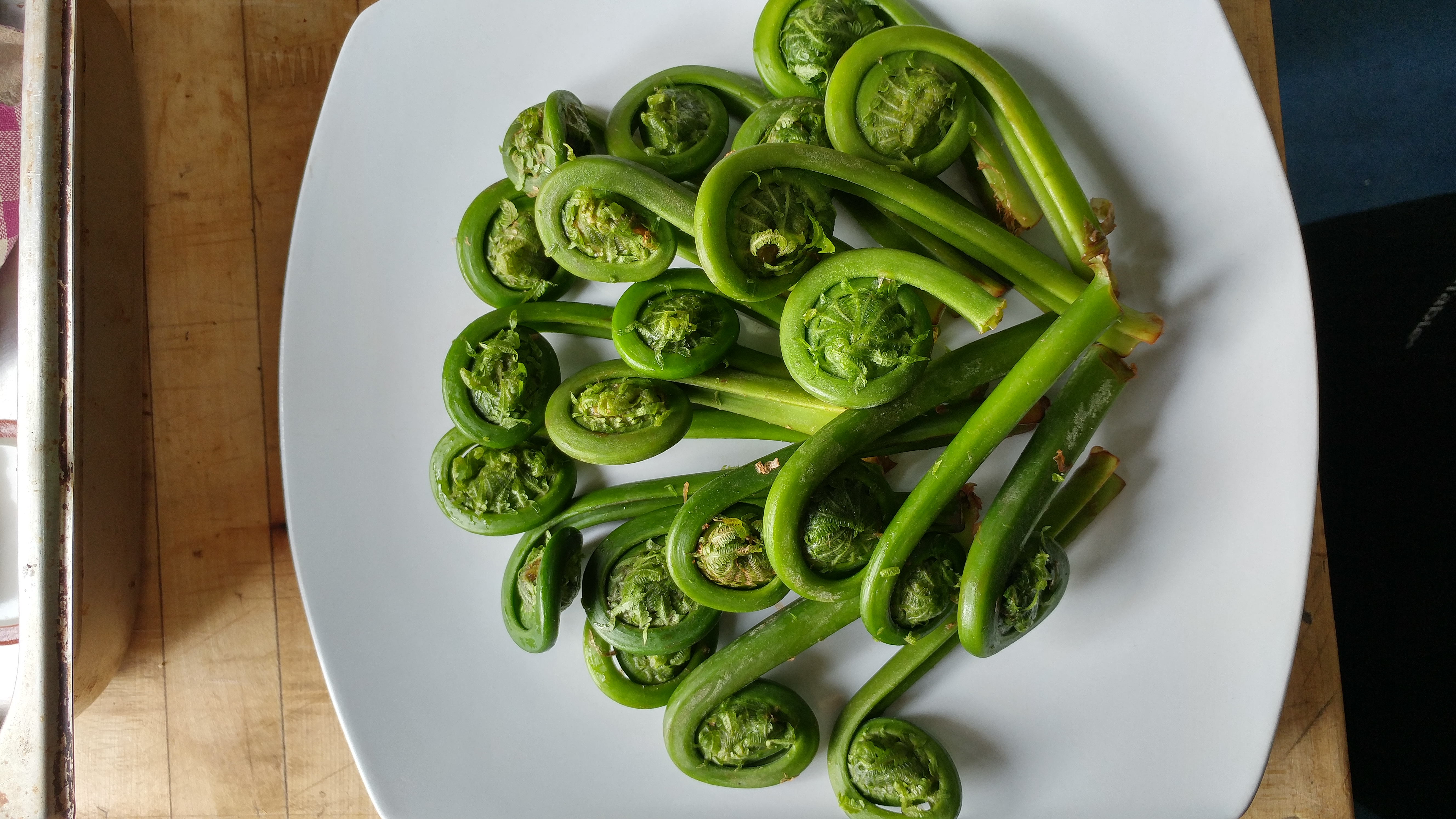 François' 'shade' fiddleheads
François' 'shade' fiddleheads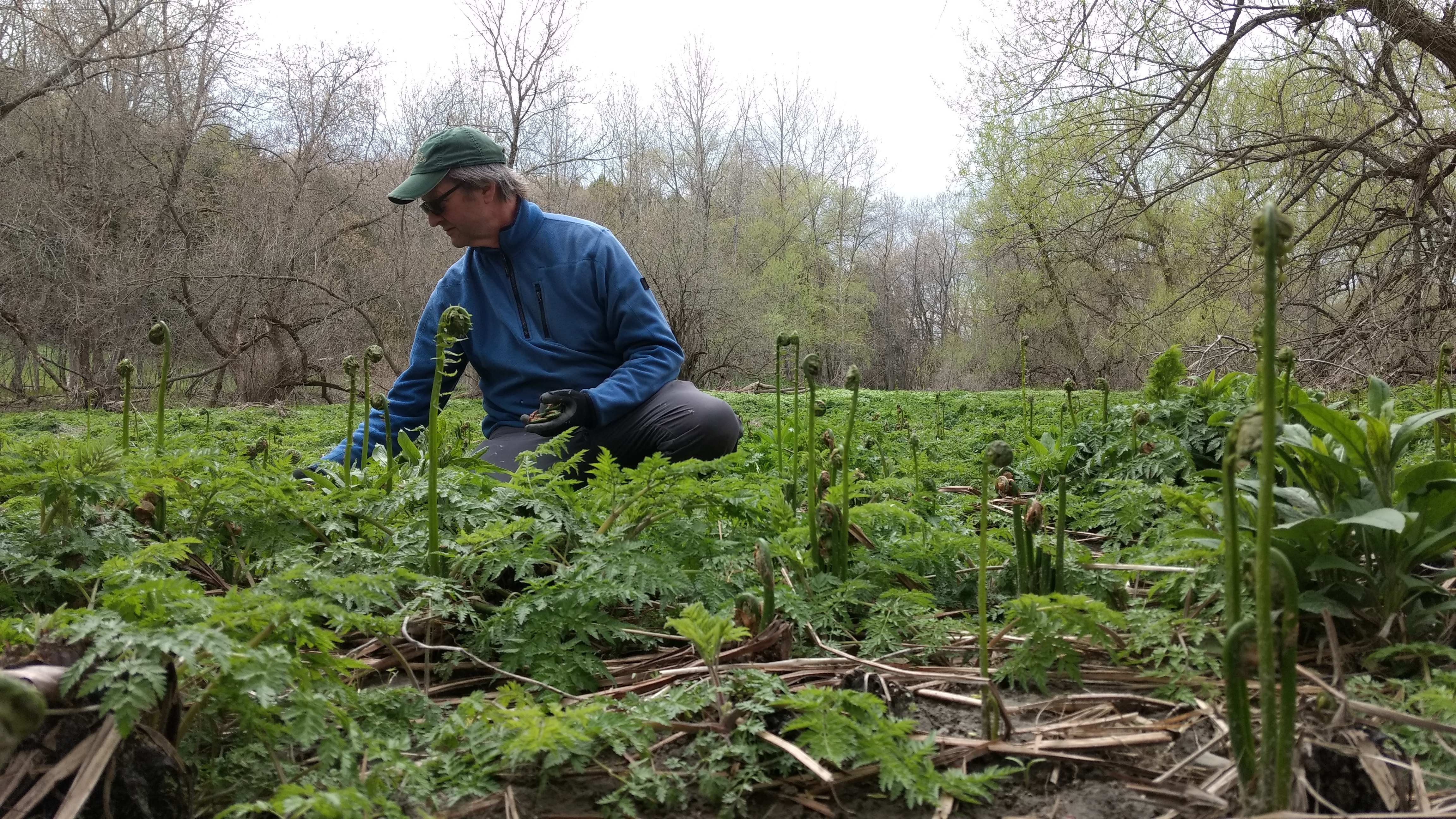
 erythrone/trout lily
erythrone/trout lily
Now, the early season stars like Trout lily, Dandelion, Spring Beauty and Linden have gone, as Stonecrop (live-forever), Daisy and Violet take their place. There is stinging nettle, garlic mustard, sheppard’s purse, wild chives and such.. as the buds appear, the edible flowers start to bloom and first marine greens pop.
It was a great morel season.
I couldn’t help but notice how many people were out there foraging and posting pictures of wild edibles this spring. It is clear that this is a trend that is only growing.
Which is great and NOT.
It’s natural that once awakened to the delights of the forest that passionate eaters and cooks want to get out there themselves. I remember my beginnings at L’Eau à la Bouche with Anne Desjardins where I met François the pioneer of foragers, how thrilling it was to discover these new ingredients. I was lucky to team up and build on his experience, taking the wild thing a step further than the chefs he'd worked with before in the Jardins Sauvages kitchen. But being leaders in largely uncharted territory meant that we had to figure a lot out on our own. Just that a certain plant is edible and best used a certain way is taken for granted now, while many years of research, tests and samples given away lie behind. Not to mention the miles walked and free labour on François' part going back 30 years. Today, it seems that every other menu resembles one of mine from 10 or 15 yrs ago, with game, wild greens & wild flavours everywhere, back when I was the only one with sweet clover or wild mushrooms in my desserts, ha. I knew we were onto something, but who knew it would ‘mushroom’ so.
For sure foraging is awesome in so many ways; it doesn’t get much more terroir, fresh and local than that. But the thing about foraging, is that it’s trickier than it appears! It is not as easy as walking through the woods and filling your basket, it is not 'free'. You need land, and knowledge, a due respect for nature and nuance, lots of time and patience, before actually putting in the hours and doing the work. Finding your spots, being there at the right time, getting down and dirty on your hands and knees with the mosquitoes. It takes more than a day or a season to learn the basics, plenty of books and time spent in the woods. Way more than a google search or utube video, say. People these days want to go too fast. It’s not that I want to discourage eager enthusiasts... But Please! I just wish everyone would be more mindful and cautious. It’s for the plants, the future and one's own sake, not only sustainablility and safety, for deliciousness too.
Foraging primer: Bottom line, Don’t touch unless you know what you’re doing..
Which means How, When and Where.
First of all, know that what you’re picking is indeed edible (there are many look alikes). Ensure that it’s a healthy population. It depends on the microclimate and age of plant population. You need to know the cycle of the plant/how hardy it is before knowing how much you can take. That’s why being in the same spots, seeing the impact of your harvest each year is so important.
Don’t rip out roots (in general). Prune.
If you pick, don’t let it show, as in you’re leaving way more than you take, little trace. Unless you are weeding your garden or in a site with an invasive plant you know well.
Be careful/don’t pick species that are slow to reproduce or endangered: Wild garlic, Wild ginger, Crinkleroot, Milkweed..
And some need to be mature enough, and then just trimmed - like sea asparagus (salicorne, samphire), otherwise you might kill the plant. This is an issue now when it is still several weeks too early to pick salicorne anywhere in Quebec. Yet, I see it on menus.
The ‘weeds’ you can worry less about, Go!: Lamb’s quarters, Nettle, Garlic Mustard, Sheppard’s purse, Purselane, Amaranthe..
And then in the kitchen, they need to be washed, and cooked properly! Some need to be cooked throughout: For instance: Fiddleheads, Milkweed, and most wild mushrooms. Wash well and boil 5min+. Less touchy veg like beach peas, goat's beard, and leafy greens like nettle might only require 1-2min. For mushrooms, a braise is better than a sauté, count 5-20min. Some greens are better raw, but most are better cooked even if slightly. All are super healthy ingredients, but can be toxic, you can’t just wing it. I’ve seen sprouts of toxic plants decorating plates in Montreal.
Don’t give wild plants a bad name by serving anything up because it sounds cool, as little do you know it might be of sketchy quality, often like those on the black market or picked without experience.. For example, dandelion is only good if picked young (before flower) in the morning; most greens like live-forever only in shady, humid conditions; garlic mustard is only yummy young/early season and same, bitter in dry conditions. Same with beech chickweed. Etc. Where, when and how was it picked/stored etc.. is key to whether it will be yummy and not give anyone a belly-ache.
With many wild plants and aromatics (herbs/spices), it’s a question of dosage.. As with nutmeg, basil or rosemary, all of which can kill you if you eat too much. The difference between delicious, medicinal and toxic is in the dose. Normally nature is well made, as in you won’t use anything potent in huge quantities - the difference between a vegetable and an herb, a stock or a sauce. For example, be careful with mélilot/sweet clover flower, sweet grass, conifers - less than .1%. . Oxalis (Lady’s sorrel), like kale and rhubarb leaves contains oxalic acid, which is hard on the kidneys. And so on.
(See more picking tips and photos/links below..)
Whether picking or not, Chefs using wild ingredients need to be responsible for their source or purchases! (See Black Market blurb below) And you can participate. There is a conference on the commerce of PFNL (wild edibles) and the development of guidelines, with chefs and journalists invited (June 14th in Quebec City), the first public meeting of the type, there will be more. It’s about developing the industry further, but in a structured and sustainable way. See below.
Rules and Regulations – they are coming, but it’s complicated
This explosion of amateur foragers and start-ups might be a plus for the economy but problematic for sustainability of the resource and market, quality and safety. Making some sort of regulation has become necessary. Which is what groups of people in the industry and levels of government are currently working on but it’s incredibly complex. Between the interests to develop the forest beyond lumber, putting people to work in the regions, sharing our heritage while balancing what is possible with respect to nature and the realities of the market, labour, what is doable and fair when it comes to enforcement... Quotas, permits?
It’s a big pain in the ass actually. We have no choice but to be implicated, because we care and have expertise to bring to the table, and obviously, it will affect us directly. Trust me, we would rather not have to spend so much time on all this debate and data for regulation because although we believe in it, I can humbly say it shouldn’t even apply to us. Because of all the careless people who ravage or innocently don’t know what they’re doing, we might be banned from picking and exploiting edibles we have plenty of on private property, picking sustainably in the same spots every year (for 30 yrs). Nonsense. No one even knew about most of these wild edibles until François put them on menus by introducing them to chefs.
Or like with ramps. We have a healthy population that we could easily sustainably put it on our menu from our back yard, but it’s illegal. If I chop up a few leaves as a soup garnish for 10 clients there is an inspector at my door. Meanwhile, chefs all over Montreal who do hundreds/thousands more covers have ramps on their menu, from where? No inspectors? So it should be illegal, but what difference does it make? Ideally, it should be legal but regulated.
Black Market Everyone likes a good price, be it at the market or from a picker coming to a chef’s door. This year (and last) at Marché Jean Talon, there was so much black market dumping for fiddleheads, that we had to sell at a loss to discourage them. Because these guys don’t have fridges or a legit business, pay no rent or taxes, no inspectors, zero traceability. Who knows where or how it was picked, stored.. They need to unload so sell at whatever cost, ie dump. Merchants buy and sell. Like with wild mushrooms too. So say this foraging guy decides to continue beyond a day or two, he needs to buy a fridge, register a business, have a clean locale that will be inspected, he will want a website and business cards, maybe an accountant etc. Soon enough he will charge more or bail. Which is what they all do, bail after crashing the market with questionable quality produce, even poisonous mushrooms. So that’s the future if things don’t change, a bunch of n’importe quoi.
Meanwhile, we have for years, sustainably and passionately brought wild edibles to the market (at the restaurant, to chefs and le grand public, in the cooking schools), offering tastings, given out cooking instructions, building the market, teaching. If people want to be able to buy wild edibles from a reputable source, the present scenario is not sustainable.
Marketing vs Truth Everyone has local, something wild or boreale on their menu. But often it’s Bullshit, a few spices and maple syrup while most comes from big suppliers, imported. The morels on the market in March (when every chef wants to put morels on their ‘spring’ menu) came from China. And often, the wild mushrooms and vegetables come from out west, Europe or China, the deer often from Australia; elderflower from an imported extract, sumac imported and very questionable in composition. Wild arugula out of a Costco box is imported monoculture, not the same species as our wild rocket. Just because it sounds wild and local doesn’t mean it is. It sucks to have to question the glossy menu local wild vibe at your hot restaurant. But I’m kind of tired of being the real thing seeing all the BS that doesn’t seem to matter. I’m done with being polite.
Its great that many people want to reconnect with nature, eat locally and explore new flavours. A richesse de notre terroir that naturally should be a part of our culture and traditions, as it largely was before everyone moved to the city and started destroying biodiversity. Now people are waking up to the treasures, but there is less to go around. I know there are many young people opening Boreale restaurants or bars, making gin and cocktail kits, etc with the best intentions, without realizing the issues surrounding the sourcing. Like no idea what 100kg of juniper berries or Labrador tea entails.
Hopefully, we can all move forward with wild edibles for everyone who cares!
Info about the Conference for PFNL guidelines, hosted by the ACPFNL https://www.acpfnl.ca/ Details here: file:///C:/Users/utilisateur/jardins%20sauvages/pfnl/Acpfnl/ACPFNL%20invitation%20AGA%20du%2016-05-2017.pdf To stay informed, the ACPFNL Facebook page: https://www.facebook.com/Acpfnl-Association-pour-la-commercialisation-des-PFNL-178644682180969/
Foraging primer Edible Manhatten http://www.ediblemanhattan.com/departments/d-i-y-departments/forage-or-harvest-a-spring-foraging-primer-for-the-new-forager/
Spring, ramps and fiddleheads http://soupnancy.squarespace.com/blog-journalessays/2015/5/5/officially-spring-2015.html
There are many photos with the plants identified in our albums on our Jardins Sauvages facebook page https://www.facebook.com/JardinsSauvages17/?ref=bookmarks too..
Summer wild edibles http://soupnancy.squarespace.com/blog-journalessays/2011/7/19/snapshots-july-2011-summer-wild-edibles.html
Our old videos:
Spring, trout lily https://www.youtube.com/watch?v=qUMfSfquRpU
Other early summer backyard treasures https://www.youtube.com/watch?v=7Alf1arm478
Wild chives and https://www.youtube.com/watch?v=1kL2ycqvu_Y&t=172smint riverside https://www.youtube.com/watch?v=7Alf1arm478
Stinging nettle https://www.youtube.com/watch?v=1kL2ycqvu_Y&t=172s
Disco Soupe Slow Food
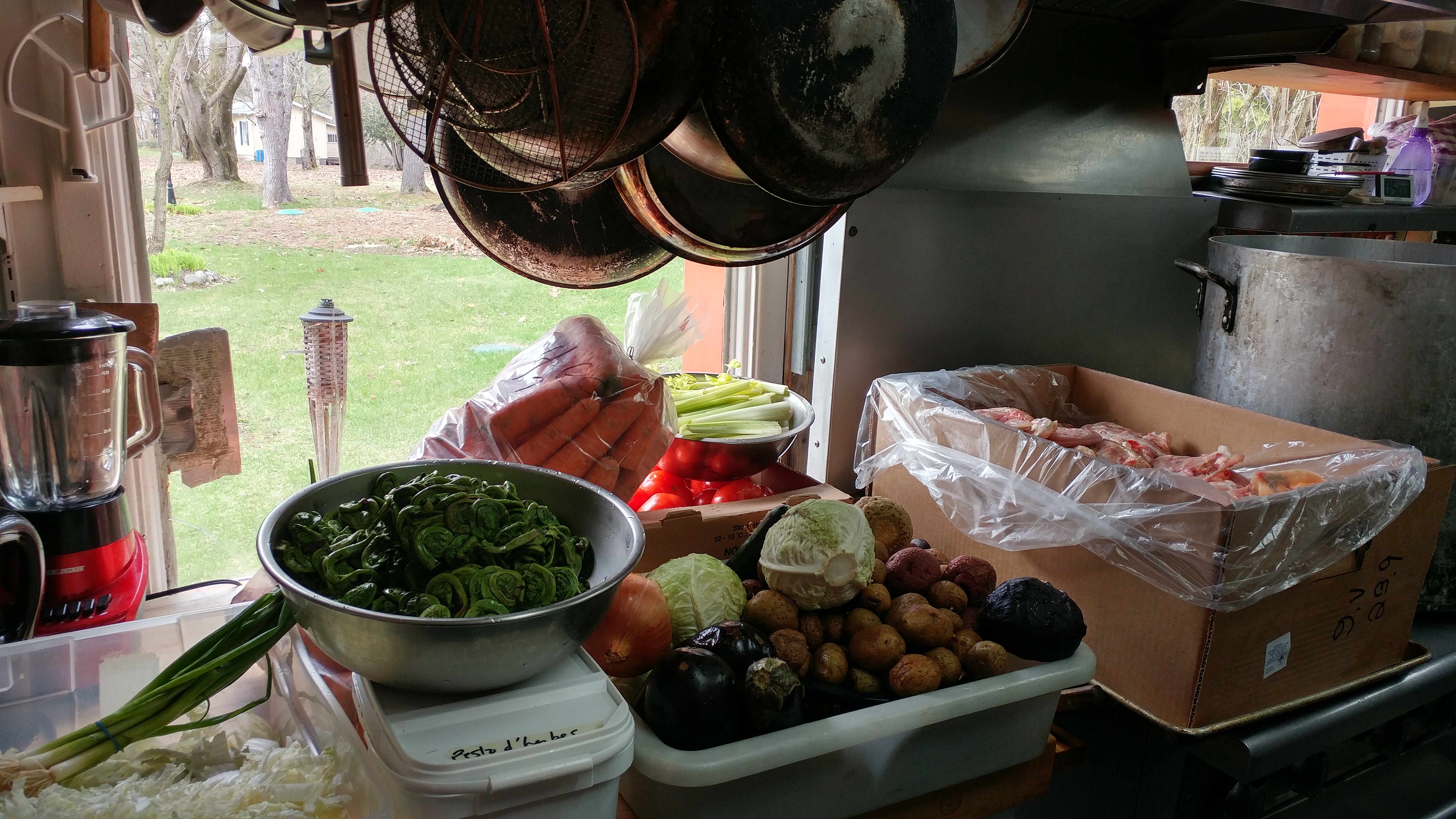 Part of our collect for soup; Legumes moches et carcasses
Part of our collect for soup; Legumes moches et carcassesEaster Egg-spiration
Spring is in the air! Here is some egg-spiration including ever relevant prior posts and a few egg recipes for Easter (and year-round..)
As with most people, I am always inspired at Easter especially because the seasons are changing and it’s our new year! These guys take the cake though with their easter egg tree..
But wow, looking back at my blog, I’m extra inspired by how inspired I was in 2007 or 2008. It all still holds true, but let’s just say, the wonder of eggs and a ‘God’ we don’t understand are now givens; I am presently more focused on just getting a ton of mundane tasks done - like my cooking, paperwork and cleaning, maple soda and hiring, planning for the season. The greens will be sprouting soon enough, weehoo..
For Easter, On Eggs and God I really like this post (from 2008), which I also find amusing since I am even more of a witch now, fascinated by plant intelligence for instance. Once in a while, it’s important to stop, think and feel, question or accept, taking stock and ‘lacher prise’. Often time alone in the kitchen provides that space, like snowshoeing or running say, conducive to figuring something out and finishing off feeling good. A moment of peace and clarity can go a long way. There can never be too many elephants in the room. Besides, my dad the minister comfortingly told me once since that I am effectively praying to God by doing my thing the best I can, by practicing my craft and expressing myself in tune with nature, loving and doing and sharing, while being honest and true. My kind of religion. Scroll down to my Egg Epiphany. http://soupnancy.squarespace.com/blog-journalessays/2008/3/23/for-easter-eggs-and-god.html
My Easter Egg A quick ode to the egg and all its properties, from 2007. Kind of boring as in ‘duh’, but fact: eggs are truly amazing. How can you not find the phenomenon that is meringue extraordinary?! http://soupnancy.squarespace.com/blog-journalessays/2007/4/6/my-easter-egg.html
My Easter soup (from made with lamb lungs, a fun exercise in tribute to my producers and Greek tradition but not necessarily one to repeat. http://soupnancy.squarespace.com/blog-journalessays/2011/4/18/greek-easter-soup.html
These following recipes are more of a sure bet, like my eggs en cocotte (baked) with wild mushrooms and greens below.
First of all, a basic egg cooking guide is a good idea to share with your kids or to revisit if you’ve forgotten to cook eggs. Everyone should know how to cook eggs. http://firstwefeast.com/eat/complete-guide-to-cooking-eggs-at-home/ This overview covers basic egg knowledge; I just don’t agree with frying an egg in oil at high temp, but to each his own.. And for a hard-boiled egg, I stand by the method of putting them in cold water, bringing to boiling temperature, removing from heat and covering for 10min. Chill in running water while cracking the shells a bit and peel. When cooking in the pan, gentle/medium heat and butter, not oil. And I couldn't be bothered with the 62C degree egg. I prefer more texture, but mainly, why spend hours cooking an egg in a circulator, when 5 or 10 minutes with an old-fashioned technique works just fine.
An Italian Easter Ricotta pie https://www.theguardian.com/lifeandstyle/2017/apr/04/spinach-herb-and-ricotta-pie-recipe-rachel-roddy-torta-pasqualina
Egg toast Mumbai sytle https://mobile.nytimes.com/2017/04/06/magazine/egg-cheese-and-toast-mumbai-style.html
Pound cake An easy recipe to remember (approximately equal parts by weight of butter, sugar, eggs, flour), and a snap to make, it’s just plain good stuff. I had forgotten about this old classic, more often making a current lightened version using less eggs and butter, adding milk/yogurt and baking powder, vegetable oil for a fine cake or ‘quickbread’ (like banana bread), if not going all out to make a fancy dessert. I rediscovered pound cake this winter when my girlfriend was preoccupied with ensuring her athlete-daughter had enough energy for her competitions; pound cake was important filler. It was hanging around, we ate it. And then, I came back home to make it regularly. Bonus is that it keeps well on the counter for over a week, perfect with coffee or breakfast, or for a snack. Dress it up with coulis, fruit and whipped cream, caramel or chocolate it can be a swoon worthy dessert. While at JS, I would incorporate wild flavours such as mushroom powder or sumac, long pepper or sweet clover flower and maple sugar etc, this lemon poppyseed version at home is tough to beat. See recipe below.
Baked eggs with wild mushrooms and greens
Chef Nancy Hinton, Les Jardins Sauvages
4 portions
200g wild mushrooms (4c)
*(or 150g JS sousvide, cooked, frozen wild mushroom mix)
30ml (2 Tbsp) olive oil
15ml (1 Tbsp) butter
1 small onion, minced (1c)
5ml (1 tsp) minced garlic
45ml (3Tbsp) white wine
Pinch tarragon
125ml (1/2c) heavy cream
150g Blanched/Precooked greens (lambs’ quarters, wild mustard leaf, spinach fiddleheads, asparagus), chopped (2c)
4 eggs
drops to taste hot sauce or chilli flakes
drops worchestershire
to taste salt, pepper
100g grated cheddar cheese
option chopped cooked bacon
to taste maple syrup
Method:
Sauté mushrooms in a hot pan with oil. As soon as caramelisation starts, lower the heat a bit. Add onions and butter and cook over medium heat for a few minutes, add the garlic and lower the heat and cook 5-10 minutes more until the mushrooms are cooked through and tender, the onions translucent. You might want to add a squirt of water to finish the cooking (so it doesn’t dry out or fry). Season to taste with salt, pepper, worchestershire, herbs.
Deglaze with white wine and add cream. Remove from heat.
Add cooked greens, and make nests for the eggs.
Or divide mushroom mixture and greens into greased ramekins.
Crack the eggs into the nests. (You might want to break the eggs into a bowl first to make sure there are no shells).
Season again or add bacon, and a spoonful of pansauce or cream on top of the egg. Top with cheese.
Put in a hot 350F oven and cook for 10-20min until desired doneness.
*When it comes to small ramekins, it is often recommended to place in a pan of hot water which makes for a gentler heat but it takes a lot longer (like 30min) so your choice, after 10 minutes, you need to be checking.
*Serve with hot sauce and maple syrup or a tomato salsa. And good toast.
Œufs en cocotte aux champignons sauvages et légumes verts
Chef Nancy Hinton, Les Jardins Sauvages
4 portions
200g champignons sauvages (4t)
*(ou 150g Mélange Forestier JS blanchies congelées sous-vide hors saison)
30 (2 cu.à soupe) huile d’olive
15ml (1 cu.à soupe) beurre
1 petit oignon émincé (ou 1t)
5ml (1 cu.à the) d’ail émincé
45ml vin blanc
pincé estragon
125ml crème 35%
150g Légumes vert blanchis (chou gras, épinards de mer, feuilles de moutarde, têtes de violon ou asperges etc) et coupé grossièrement (2t)
4 oeufs
gouttes huile de piments/sauce au piments ou pincé piment broyé
gouttes worchestershire
au goût sel, poivre
100g fromage cheddar râpé
option bacon cuit et haché
au gout sirop d’érable
Méthode:
Faire poêler champignons dans l’huile à feu vif. Quand la coloration commence, baisser le feu et ajouter le beurre, les oignons et continuer la cuisson plus lente pendant 5 à 10 minutes de plus, ajoutant l’ail à la fin, jusqu’à temps que les champignons sont cuits au centre, tendre et encore juteux et l’oignon translucide. Rajouter un peu d’eau si c’est trop sec pour terminer la cuisson. Assaisonner les champignons à votre gout (sel, poivre, worchestershire, herbes..)
Déglacer avec le vin blanc, et réduire. Ajouter la crème et enlever du feu.
Garnir de légumes verts et faire quatre trous (nids) et placer les œufs.
Ou séparer les champignons et les légumes dans 4 cocottes individuelles beurrées et placer les œufs au centre.
Assaisonner et garnir de bacon si vous désirez.. Ajouter une cuillère de sauce/crème par-dessus l’œuf. Garnir de cheddar râpé.
Enfourner à 350F pour 10-20min jusqu’à la cuisson désiré.
Avec des ramekins individuels, on peut les mettre dans une plaque avec de l’eau chaude pour une cuisson plus douce (et plus lente). Peu importe, verifier la cuisson après 10min.
Servir avec un filet de sirop d’érable et sauce piquante.
Une salsa de tomate et du bon pain accompagne bien aussi.
Lemon-Poppyseed Poundcake
*I don’t remember where I got this particular recipe which uses cake flour, baking powder and an off kilter ratio with more butter, but I like it.
1 loaf (standard 9x5)
270g butter
1/2c each (230g total) brown sugar, white sugar
5ml (1tsp) vanilla extract
15ml (1 Tbsp) lemon zest
4 large eggs
2c (230g) cake flour
5ml (1tsp) baking powder
30ml (2Tbsp) poppy seeds
Method:
Have all ingredients at room temperature first of all.
Cream together the butter and sugars, lemon zest and vanilla (or whatever flavours you like) until light and fluffy.
Add in eggs one at a time, whipping well after each.
Combine dry ingredients and mix into butter-sugar-egg mixture, gently incorporating until homogeneous.
Bake at 350F in a greased/parchment lined loaf pan for 50min-1hr until a knife comes out clean.






















